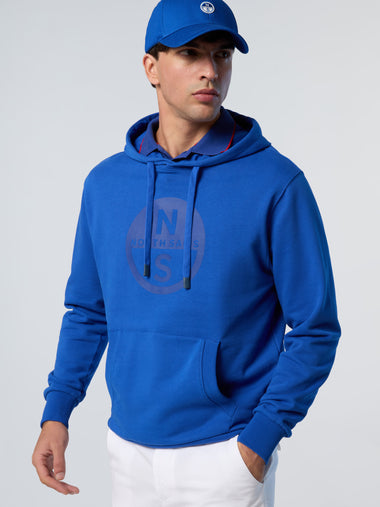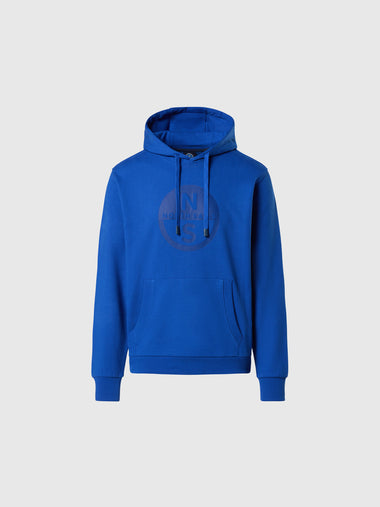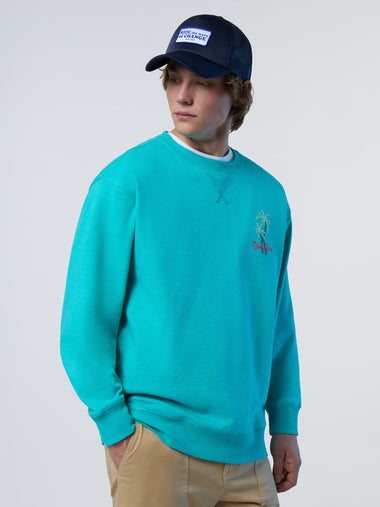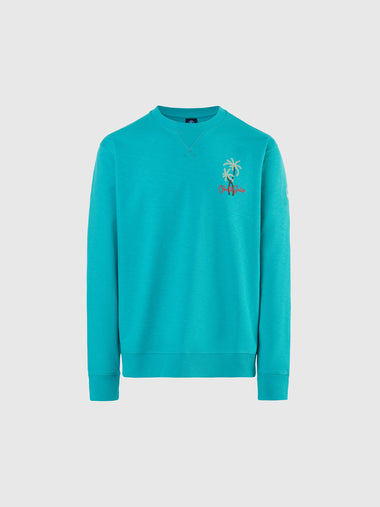NORTH SAILS BLOG
Tout
Events
Guides
News
People
Podcast
Sustainability
Tech & Innovation
Travel & Adventure
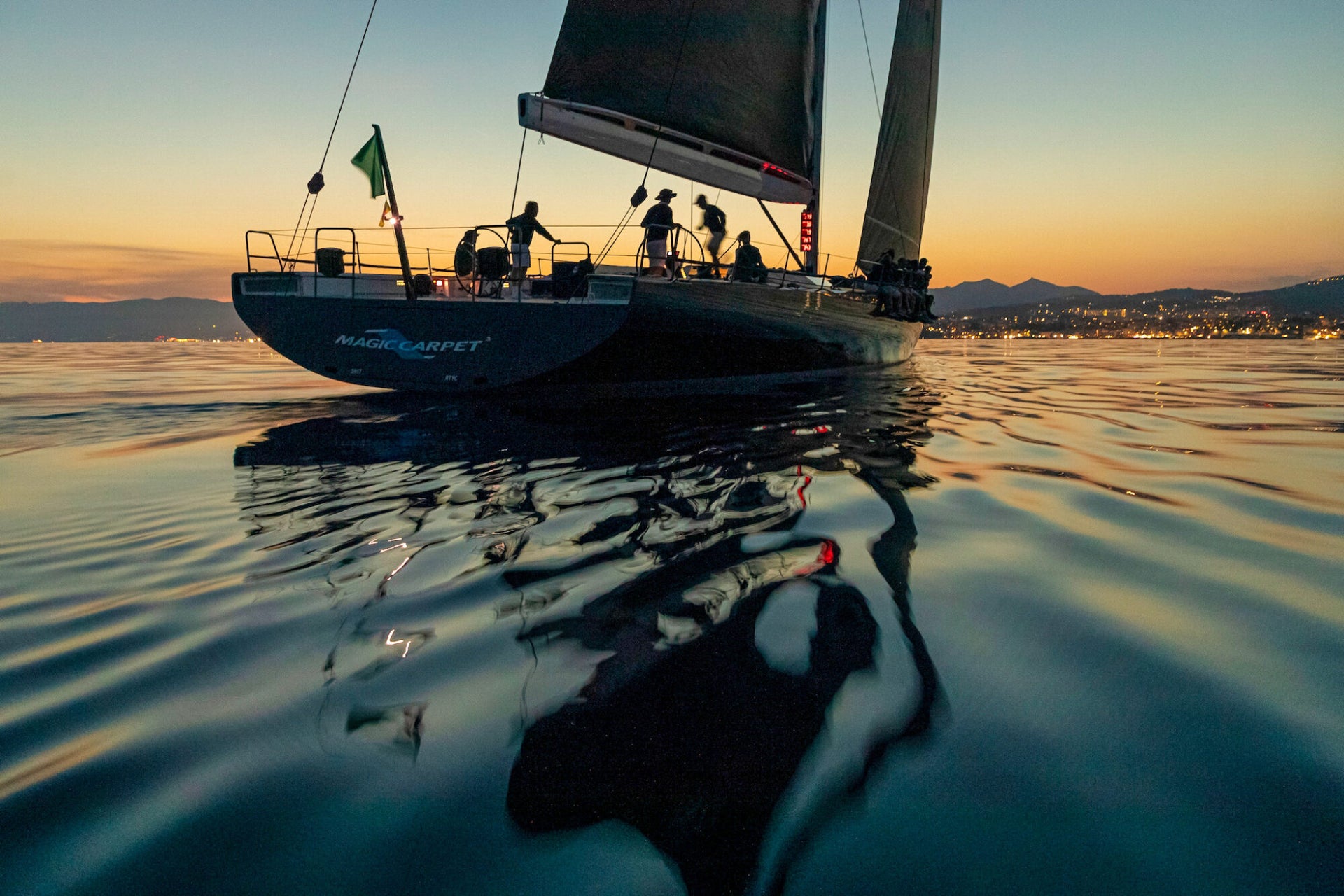
events
#NSVICTORYLIST: 2022 ROLEX GIRAGLIA
#NSVICTORYLIST: 2022 ROLEX GIRAGLIA
North Sails Clients Dominate at the 69th Edition of this Classic Event
📸 ROLEX / Carlo Borlenghi
Founded in 1953, to help unite the French and Italian sailing communities post World War 2, the Giraglia has retained a distinct Franco-Italian spirit, while attracting an international fleet with typically over 200 yachts from more than 25 countries.
The headline act at the Rolex Giraglia is the 241-nautical mile (446km) offshore race from Saint-Tropez to Genoa, Italy, via the Giraglia rock located approximately 1 nm (2km) off the northern tip of Corsica. In keeping with a number of great races, the Giraglia rock is used as a symbolic turning mark.
Sanremo to Saint-Tropez Race:
The first North Sails victory was in the first racing scheduled, where the 56 yachts competed in the Sanremo – Saint-Tropez distance race, with a midnight start. After 15 hours of slow sailing, the Felci 71 Itacentodue, owned by Adriano Calvini, crossed the finish line in Saint-Tropez to claim line honors. All the boats in the top spots of the first act of the Giraglia carried a full North Sails sail inventory.
Saint-Tropez Inshore Races:
Following the first event, the Gulf of Saint-Tropez once again lived up to its reputation as a fantastic regatta venue, with excellent weather conditions allowing the event’s 3-day inshore racing to take place without a hitch. While the maxi yachts competed on windward-leeward courses off the beaches of Pampelonne, the rest of the boats battled on coastal routes. Wind conditions were consistent throughout the regatta, with an initial easterly breeze of 6 knots increasing over the course of the event, and fairly flat seas.
#NSVictoryList:
Final results from the Maxi race course in Pampelonne after 4 races are:
IRC0: Jethou, owned by Peter Ogden, dominated in the IRC0 class. (1,1,1,1);
IRC2: Capricorno, owned by Alessandro Del Bono (1,1,1,1);
ORC0: Leaps & Bounds 2, owned by Jean Philippe Blanpain (1,1,1,1).
For the ORC and IRC groups, the results after 3 inshore races are as follows:
IRC 1: Daguet 3 – Ker 46 owned by Frederic Puzin (12,2,2);
ORC 1: From Now On – Swan 45 owned by Fernando Chain (4,1,1)
📸 ROLEX / Carlo Borlenghi
Saint-Tropez to Genoa Offshore Race:
June 15th was the start of the iconic offshore race, the headline act at the Rolex Giraglia. The forecast, which called for light winds, prompted the race committee to shorten the regular 241-nautical mile (446km) course by 35-nm. A decision which afforded the majority of the fleet a greater opportunity to finish the race ahead of the Saturday morning cut-off time. 105 of the competing boats were able to complete the race in the allotted time. In the spirit that has always defined the Rolex Giraglia, these predominantly Corinthian crews demonstrated their ability to confront the challenge with patience and skill.
Setting blistering speeds is often the prerogative of the maxi yachts competing at this event. The frontrunners included three former line honors winners, ARCA SGR (triumphant in 2021 and with North Sail designer Michele Malandra among the crew), Magic Carpet Cubed (2013 and 2016) and Tango (2018). Their hopes of overturning the race record set in 2012 (just under 15 hours) were immediately thwarted by the forecast. Ultimately, the 69th edition produced the slowest line honors time since 2009. Although a thrilling tactical battle did ensue between some of the world’s most experienced and skilled navigators.
The tempo of the race provided the opportunity for more considered tactical discussions across teams and an emphasis on maximizing every wind gust. The light breeze was not the only hurdle faced in this year’s edition, the last stretch to the finish line in Genoa is notoriously difficult to negotiate. Sir Lindsay Owen-Jones and his Magic Carpet Cubed team (with North Sails expert Gigio Russo and recent hire Ian Walker onboard) have experienced its highs and lows. Just a few nautical miles from the finish line and having trailed ARCA SGR from the race’s emblematic turning point, the Giraglia rock, the Magic Carpet Cubed crew mustered their considerable race pedigree, positioning themselves at the better wind angle to propel themselves into first place. The Wallycento completed the course in an elapsed time of 34 hours, seven minutes and 17 seconds.
ARCA SGR navigator Malandra commented, “After rounding the Giraglia islet 9 seconds behind MC3 and having led most of the regatta, the Giraglia proved that it is never predictable. We have always sailed very well, even with a boat designed for other wind conditions, but after the refit by Shaun Carkeek, she proved to be reborn. Thanks to our new North sail inventory and the 5-meter taller mast, we have considerably increased the sail area of the boat. However, we missed the two landings (in Giraglia and Genoa) of which the second is fundamental! But we are satisfied to have sailed fast and to honor the winners.”
📸 ROLEX / Carlo Borlenghi
READ MORE
READ MORE
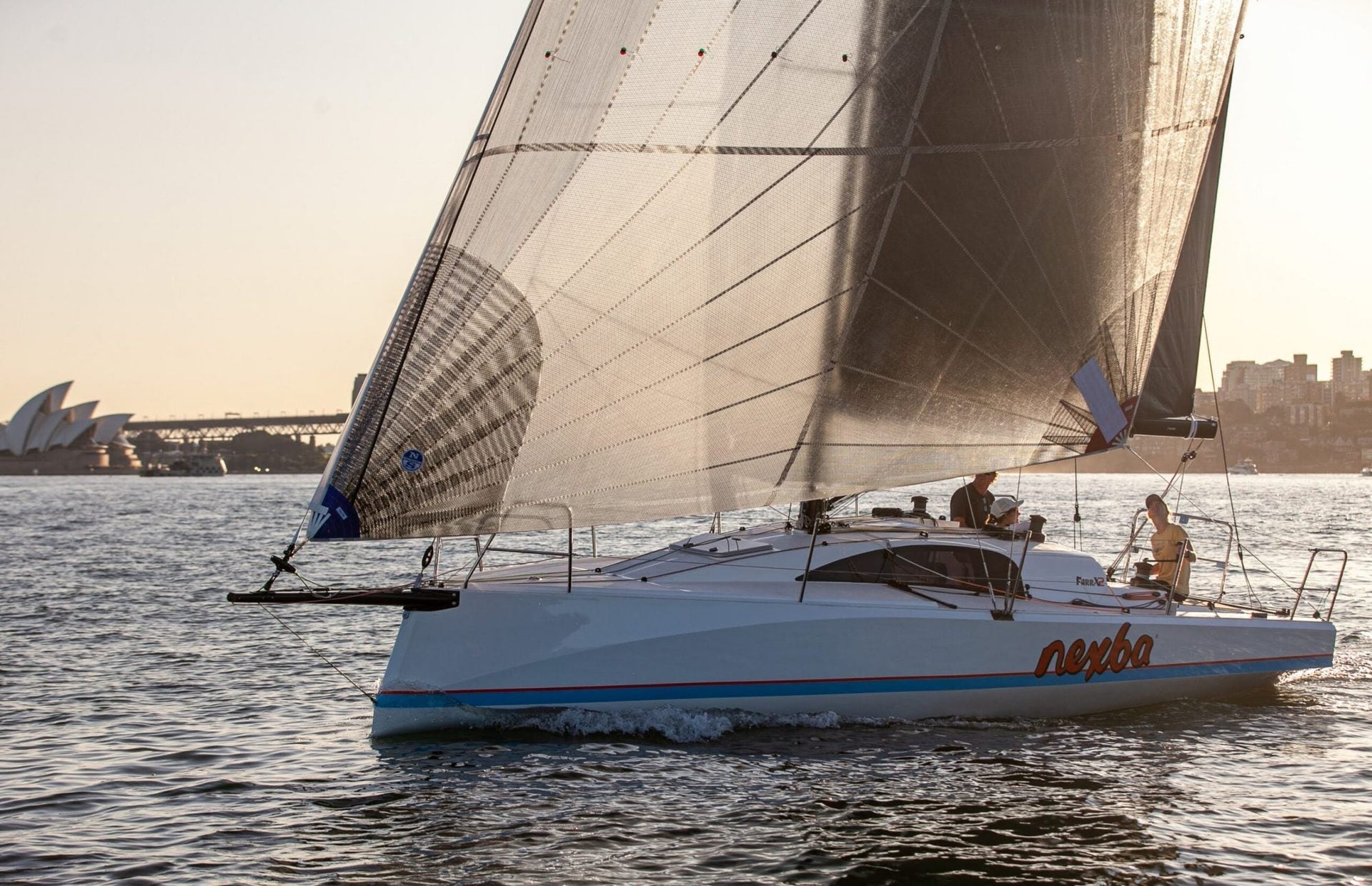
events
PASSION FOR PERFORMANCE TO BRIDGE THE AUSTRALIAN GAP TO EUROPE IN THE DOUBLEHANDED SCENE
PASSION FOR PERFORMANCE TO BRIDGE THE AUSTRALIAN GAP TO EUROPE IN THE DOUBLE HANDED SCENE
The Launch of the New Farr X2 with North Sails Australia
📸 VicSail
With the launch of the newest high performance short handed yacht, the Farr X2, North Sails Australia reveled in the opportunity to be part of something new, creating the sail inventory for the first Farr X2, designed specifically for the Australian double handed market.
The vision for the project stems from Farr Yachts Australasia’s, Bret Perry’s experience as Project Manager of RG Mini 650s in France, where he wanted to give the Australian short handed sailing scene an opportunity for high performance sailing, with modern design and techniques.
“What I wanted to do was to bring back to Australia with short-handed sailing and the boom it’s going through. Each boat is designed for a reason and purpose, and the Farr X2 is purely about no holds barred high performance yachting, designed with full power in mind for absolute performance. It’s very easy to sail a shorthanded boat crewed, but it’s very hard to sail a crewed boat shorthanded” said Perry.
Norths Sails Australia jumped at the opportunity to be involved from the outset, with short handed offshore racing at the forefront of the design.
Not only did we want to make the boat sail fast in all conditions, but it must be easy to sail shorthanded so, discussing the different principles and priorities was a key part of the design process for the team.
“There were lots of meetings between North Sails and us, to talk about what we wanted to achieve. The number one thing is that you’re sailing short handed so you have to be able to do the manoeuvres, and you have to think about safety, and then on top of all of it, you have to think about performance. That’s the biggest thing that I wanted in the sail package from North Sails.”
The sail inventory has maximum sail area in mind for the 30 footer, however there’s a delicate balance between achieving higher performance and having a competitive rating within IRC and ORCi certification.
“I wanted to be in furling sails early, and in saying that, to be at full speed very early. So, to be at max boat speed upwind in six or seven knots of wind.”
The upwind sails include an all-purpose hanked jib that will work up through the light to moderate wind range of 17 knots. The all-purpose jib is helpful for shorthanded sailing to allow for longer crossovers between sails and reduce the frequency of sail changes.
“The mainsail is fully battened, with a really large number one reef, as well as a 50% reef to cover the IRC rule, to eradicate the use of trisails.” continued Perry. “And, the first reef is probably more equivalent to a one and half, to three quarter reef so it’s really big.”
📸 VicSail
North can offer the inventory from their NPL laminate or their market leading 3Di product.
“In my experience in the mini 650s, we never put the first reef in, and instead put the second reef in and kept the big jib up so we still had the power to do what we wanted to do, but was de-powering enough to sail safely. We’re still going through testing but that’s the philosophy.”
Perry ran through the light to moderate sail package setup. “Let’s say you’ve got the big jib and have the first reef in the main, and I would estimate that would be comfortable in 17-18 knots, you’ll be quite comfortable but still powered up in that configuration. As you start getting above that breeze, you move into a J5 furling sail, which is on an inner tack point on the boat. Once you’re getting upwards of 25 knots, there’s the opportunity to furl the sail up when you feel overpowered, and sail in a furling mode – which is just so much safer than being up the front of the boat shorthanded and you’re controlling the ability to furl.”
When designing the downwind sail package, a key factor was getting the boat planing early, from 11 to 12 knots of wind. The choice then became a furling code zero built from Norths NPL laminate, with the additions of a masthead A2 spinnaker, and a furling A5 for heavy wind conditions built from conventional nylon.
“In light airs, you’d run the code zero and with an increase in wind, you’d use the all-purpose jib with the masthead A2, in up to about 17 knots of wind. You’ll be going pretty quickly and powered up, but you’ve got the choice as to when you want to start reducing the sail area from that point” explained Perry.
With all this in mind, the North Sails inventory was designed as if it was day two or three of a shorthanded race, to reduce the time non-furling sails are flying due to the attention required to trim the sail accurately.
“Where North Sails have been fantastic, is that they get excited about the project, and the ability to create something new.” Perry explained. “And what they’ve come up with is phenomenal. There’s no question they’re on the front foot from my point of view.”
“There’s been such a big group of people involved, from North Sails to Farr Yachts, XSP the builders, and all of the suppliers, and to VicSail who are supporting the project massively, we couldn’t have done this without their assistance.”
“It was amazing to see that the work that we did in the measurement and designs, it fit perfectly, only one small adjustment out of everything we put together. So that’s a credit to everyone involved to be able to put all this together to within millimeters – and all done remotely without the boat” Perry finished.
📸 VicSail
READ MORE
READ MORE
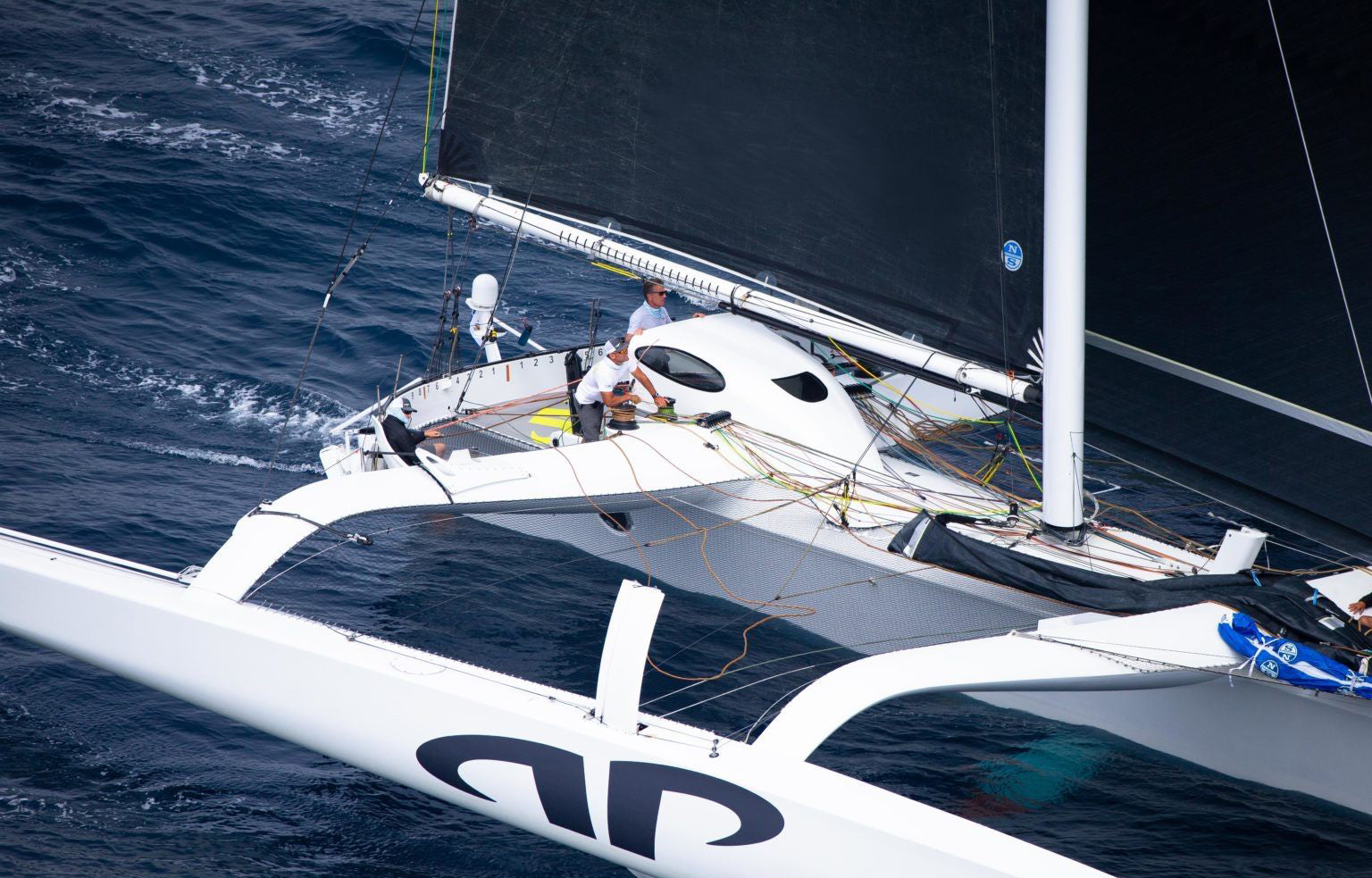
events
#NSVICTORYLIST: NEWPORT BERMUDA RACE 2022
NEWPORT BERMUDA 2022 RACE RECAP
North-Powered Teams Claim Major Victories and Over 50% of Podium Positions Across 19 Classes
The Newport Bermuda Race has kept North Sails buzzing (and busy!) since well before the fleet set off on June 17th. This year marked the 52nd edition of this East Coast offshore classic and the return of racing after a canceled 2020 event. And while we waited a bit longer than expected to see the competitors return to the start line, race fans and North Sails were quickly rewarded with a steady flow of results.
As the official performance partner to the race, North Sails is committed to helping our clients get the results they expect. The 2022 Newport Bermuda Race featured 186 boats competing across 19 classes. Race results are the ultimate test for sailmaking brands, and the proof is on the podium. This edition of the Bermuda Race saw North clients set a new overall course record, capture line honors, several major divisional wins, and 26 of the possible 49 class podium positions. Keep reading for a rundown of the North Sails-powered performances.
Jason Carroll’s Mod 70 Argo led the pack into Bermuda, claiming overall line honors and setting a new race record of 33 hours. Carroll and his crew are the first boat in the race’s history to finish on a Saturday, which proved both an honor and a challenge for the eight sleep-deprived sailors.
“It was some of the roughest conditions we’ve had on the boat,” Chad Corning said. “The sea state was just nasty, coming from all different directions. You never knew where the waves were coming from, and they would hit the boat at all different angles. You had to crawl around the cockpit to get anywhere. It was a very violent motion; a lot of the guys got sick.”
Argo’s record-breaking run set a new multihull record as well as the new overall course record. However, the monohull record of 34 hours, 34 minutes, and 52 seconds set by Comanche, skippered by North Sails President Ken Read, in 2016 still stands.
Powered by North 3Di and a heavy helping of Helix sails, 11th Hour Racing Team skippered by Charlie Enright was the second boat into Bermuda. Their IMOCA Mālama was the first monohull to complete the 635-mile race, and the wild ride proved an ideal opportunity for Enright to log training miles before the start of The Ocean Race in early 2023.
Like Argo, the Mālama crew was pushing hard and was short on sleep upon arrival. Enright compared the onboard conditions to spending 41 hours in a washing machine. “This has been full-on,” he said at the finish. “There has been no rest for anybody onboard. From the moment we left Newport, we have been racing at speeds between 20-30 knots in a heated sea state.”
Sailing with Enright were his 11th Hour teammates Justine Mettraux and Amory Ross, as well as Red Bull athletes Olympic snowboarder Elena Hight, and big wave surfer Ian Walsh.
View this post on Instagram
A post shared by 11th Hour Racing Team (@11thhourteam)
North Sails powered both Lighthouse Division winners: with Chris Sheehan’s Warrior Won on top in the Gibbs Lighthouse Division and Sally and Stan Honey’s Cal 40 Illusion claimed the St David’s Lighthouse prize.
The Newport Bermuda 2022 is the latest in a string of wins for Warrior Won; Sheehan and his team were named the 2021 Transpac overall winner and the overall winner of the 2022 RORC Caribbean 600. Warrior Won’s sail inventory includes North 3Di which has been onboard with the team for each of their wins in the past year.
View this post on Instagram
A post shared by Warrior Won Sailing (@warriorwonpac52)
Illusion bested the 108-boat fleet to place on top of the podium in the St David’s Lighthouse Division. And with an owner who’s also a world-class navigator, you’d expect nothing less. Honey is a multi-race veteran and was navigator onboard Comanche during their last record run.
“The conditions were perfect for our boat, and we had a pretty good navigator onboard,” said Sally of her husband. “Stan chose a really good course, and the conditions were just what the boat loves, heavy-air reaching, a lot. We got into a Gulf Stream eddy and stayed in it for about seven hours. That gave us a good boost. We managed to stay in the wind most of the way down. We had a couple of light spots, but nothing like the later boats.”
Prevail, Dudley Johnson’s Tripp 65 won the 38-boat Finisterre Division. Dudley and his crew knew they were on the right track when they were passed by Warrior Won in the Gulf Stream. Navigator Adam Klyver commented: “We felt like we were doing something right. We tried to stay in the middle of the Stream and found a five-knot current pushing us southeast. We probably had favorable current for close to 90 percent of the race.”
North Sails is a longtime partner to the Newport Bermuda Race and is honored to have been onboard in 2022. This year’s race saw a bumpy sea state, fast sailing and we know it was a battle to arrive in Bermuda. Congratulations to all participants and a job well done to North clients who saw their names on the leaderboard.
In Memory Of:
Our thoughts are with the family of Colin Golder and his Morgan of Marietta crew. Golder, a longtime client of North Sails, fell overboard en route to Bermuda and tragically passed away. He was not only a great client but an even better friend to our team who had the pleasure of sailing and working with him; he will be greatly missed. Sail on Colin.
READ MORE
READ MORE
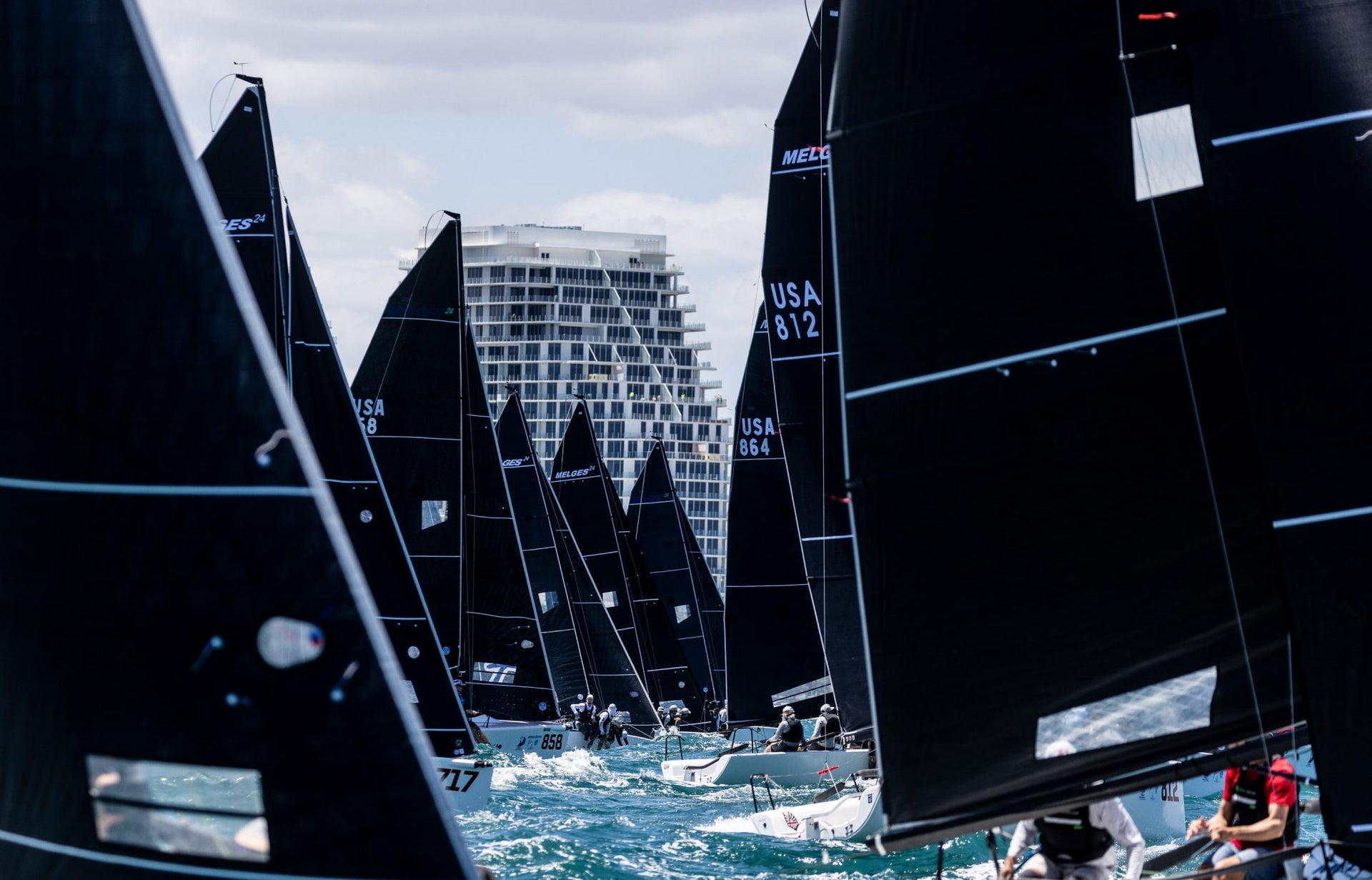
events
PETER DUNCAN AND TEAM CROWNED 2022 MELGES 24 WORLD CHAMPIONS
PETER DUNCAN AND TEAM CROWNED 2022 MELGES 24 WORLD CHAMPIONS
Coach Chris Larson and Tactician Victor Diaz de Leon Break Down the Win
📸 Matias Capizzano
After a two-year World Championship hiatus, Peter Duncan’s Raza Mixta team proudly hoisted the Melges Performance Sailboats Trophy at the 2022 Melges 24 Class Championship this May in Fort Lauderdale, Florida.
And while Duncan and his crew of Erik Shampain, Morgan Trubovich, Victor Diaz De Leon and Matt Pistay were coming in hot from a successful winter season, winning the Worlds was no easy feat. Getting to the top of the podium required the team to claw back points from deep within the fleet.
North Sails had a chance to check in after their win and get the inside scoop on what went on. Raza Mixta’s tactician Victor Diaz De Leon and team coach, North Sails Expert Chris Larson were happy to walk us through their experience; how it felt and what it took to come from behind.
The Road to Worlds:
Winning a World Championship is never as easy as just showing up and racing hard. Typically there is a long road and hard work that leads a team to the top and Raza Mixta is no exception, with various lead up events and multiple players contributing to reaching the top. Raza Mixta is a young team in terms of sailing together, but the collective experience of all the players is what made the difference.
Pulling veteran talent from the Melges 24 fleet with Shampain and Pistay, mixing in the talented J/70 team of Duncan, Diaz de Leon and Trubovich and rounding out the team with deep coaching experience paid off. Raza Mixta won the class at the Southernmost Regatta and was named first overall in the Bacardi Series before winning the Worlds. The team sailed hard and coach Chris Larson took charge of organizing schedules, training sessions, sail inventory, and boat preparation. According to Diaz de Leon, “Larson was definitely instrumental in us being able to pull it off.”
📸 Sharon Green
Raza Mixta’s Rebound:
A come from behind story. After two thirteenth place finishes on day one, team Raza Mixta found they barely made the top ten, ninth place at the end of the day. Duncan remained optimistic and kept team morale high, but at the same time the team knew they had work to do to get to the finish.
After-dinner debriefs, powerpoint presentations on sail trim and competitors, Larson left nothing to chance. There was ground to make up and still time to come out ahead. “Each day I would be on the water with the team photographing and videoing all of their movements. Later, as I presented I would include details such as sail twist, sheet tension, jib car position, traveler position, forestay sag, rig tension and sail scanning. We would then review video from each maneuver enabling the team to perfect their boat handling.” It worked.
As the event progressed, with Duncan doing a great job getting the boat off the line, constant communication from Shampain, and Trubovich and Pistay hiking, De Leon did what he does best, working his way through the fleet, and rounding the first weather mark in the front pack. From there, the team let their speed and boat handling take over by gaining at every corner of the race track. Having used their throw-out on day one, they could not afford another double-digit finish. By day four they turned an insurmountable deficit to a six point lead and never looked back.
Sails That Deliver Results
Raza Mixta used the class MNi-2 mainsail, Ji-4 Jib and P1 Spinnaker for the entirety of the event. Speed was a strength for them, and they had confidence in their set-up and sails throughout the vast range of conditions seen throughout the event.
The Ji-4’s round entry helped with steering and gave the boat enough power to get through the chop. And Larson thinks that the MNi-2 mainsail is a great all around sail, “It flattens out nicely, but still has shape in the back-end of the sail. This was ideal when the conditions warranted sailing with more twist than normal.”
According to Diaz de Leon “We felt very comfortable with our sail set up and our rig tune set up. We were going well in the light air, medium air and heavy air so we felt confident in our speed. Chris Larson was again a very helpful coach that worked really hard on the rig tune and sail selection.”
Clearly the right choices were made and the hard work paid off. Congratulations Team Raza Mixta.
Hard-won expertise from over six decades of success is built into every sail we make.
This is why North Sails wins more races than any other sailmaker.
Remember to check out the #NSVictoryList and tag us in your posts for a chance to be featured on the wall!
#NSVICTORYLIST
📸 Matias Capizzano
READ MORE
READ MORE
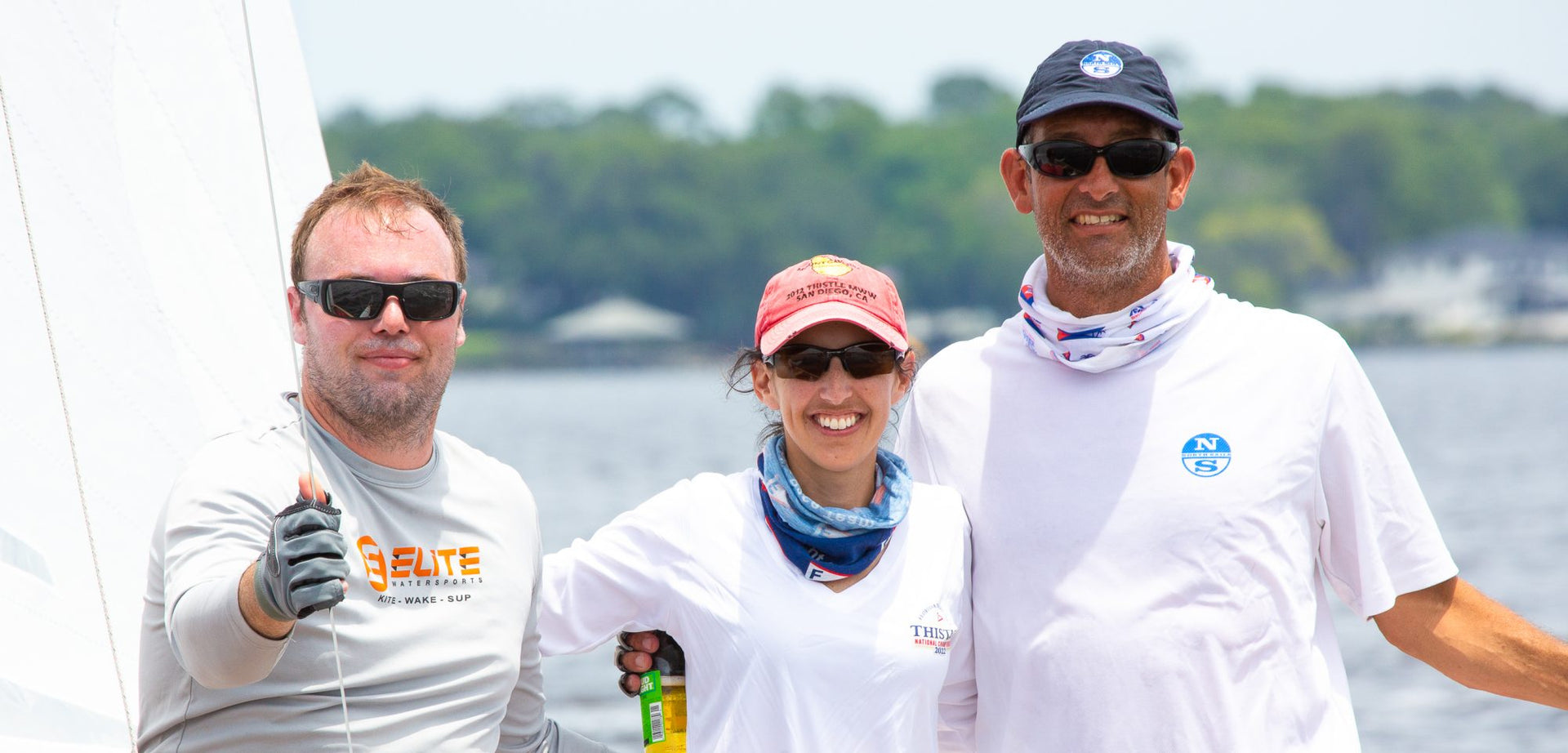
events
PAUL & MARIE ABDULLAH - THISTLE NATIONAL CHAMPIONS
PAUL & MARIE ABDULLAH – THISTLE NATIONAL CHAMPIONS
Hometown Couple Prevails at Class Championships
📸 Michael Brown
North Sails Expert Paul Abdullah grew up in Jacksonville, Florida, and started sailing in dinghies at a young age and joined his father in various PHRF boats. Currently Abdullah competes across various one-design and PHRF class platforms and has won 17 National, North American, and World championships. However at 18, he got his first Thistle, beginning his journey to where he is today. Along the road he met his wife Marie who was also sailing in the Thistle Class, and they, alongside Barrett Rhoads just won their first Thistle National Championship.
The Thistle Class is known for its family- friendly culture, age – inclusivity, top notch competition, and the camaraderie fostered throughout the fleet. At the 2022 Thistle National Championships there were 10 skippers under the age of 30 and 5 skippers over the age of 70. There were 9 family boats and 13 husband and wife boats racing. Also, with 8 first-time Nationals skippers, there were also 7 past Thistle National Champions in attendance, making this a highly sought after Championship. Last but not least, Thistle #1 sailed in its 50th National Championship!
The 76th Thistle Class National Championship, hosted by Florida Yacht Club, in Abdullah’s hometown of Jacksonville, FL was a marathon event. Sailors faced high temperatures and light breeze for the majority of the regatta placing an emphasis on ensuring ample hydration to keep focus levels sharp throughout the duration of each long day. Seven races were completed, and with no drop allowed, teams were rewarded for low point consistency and minimizing high risk moves. Paul and his team placed no higher than 6th place in all but one race, but managed to secure the victory by eight points over the next finisher, Dave, Becca and Emily Dellenbaugh (another family team)!
📸 Deb Fewell
We sat down with husband- wife duo Paul and Marie to catch up after the big win:
Tell us about your team, and how you all prepared for the National Championships?
Paul: Having a great team allows me to focus on driving. Barrett Rhoads kept me going in the right direction at all times and I kept the boat going fast. Barrett is a great sailor and tactician, and kept us away from too much risk. Marie is one of the best forward crews (she doesn’t think that) and keeps the boat organized for the next mark rounding. Together, we make a great team! Leading up to Nationals, we did a training session in January, won Midwinters East and finished 2nd at Orange Peel. We had a lot of confidence coming into the event.
Marie, tell us about your sailing. How long have you and Paul been sailing together?
Marie: I grew up sailing with my dad in Y- Flyers on Lake Allatoona in Georgia. I later started crewing in the Thistle Class, sailing with my aunt and uncle, as well as in the Snipe Class with various skippers. Every weekend I was on a boat and I loved every minute of it. Paul and I started sailing together in 2009 and I wouldn’t change the last 13 years for anything!
What are some things you guys are especially good at? (Whether it be technique, conditions, starting in big fleets)…
Paul: I like starting in big fleets! We got off the starting line well and it allowed us to sail the first beat conservatively up the middle in most races. The bigger the breeze, the better we are, mostly because of our technique.
Favorite part about sailing with your spouse?
Paul: Sailing with Marie brings a sense of calm on the boat. Ever since we started dating, my success on the water and in life has improved.
Marie: My favorite part about sailing with Paul is simply being together doing what we love. Sailing was such a big part of who we were before we met, and getting to enjoy it together as husband and wife makes it that much more special.
📸 Deb Fewell
Florida Yacht Club is your home club, what does it mean to you to win at home?
Paul: Unbelievable! As Regatta Chair the amount of stress was huge but the team at The Florida Yacht Club kept telling me to focus on my sailing and that allowed me to sail with a clear mind. As soon as the first gun went off I was able to put my focus on sailing. Winning in front of family and friends was a dream come true.
Favorite moment at the 2022 Nationals? Hardest moment? How did you and the team overcome obstacles (bad results, missed a shift, bad starts?)
Paul: Having a 8pt lead going into Thursday and finishing 1-3 in races 5 and 6 to extend our lead. Race 7 was harder than we wanted it to be. Things were going sideways mid-race, but we knew our speed would give us opportunities later in the race. At the last leeward gate, we were just behind Dave and Dan and victory was in sight. We never panicked whenever things weren’t going our way. Our saying in our boat is “boat speed kills” and each race we found our way back in the top 10 by focusing solely on our boat speed and technique.
What products are you using and how did these products play into the result? Did you use our tuning guide? Do our sails seem to be ‘better’ in a certain wind condition?
Paul: I use the DSD sail designs that were designed prior to me joining North Sails. Our design team worked to make the sails better once we put them into our design software and the results really show it. North Sail designs finished 1,2,3..! Whatever it is, we have a sail designed to fit your sailing style. I personally prefer the DSD designs (DSD+ Main, DSD Jib), Dave Dellenbaugh likes the Proctor designs (Proctor Main, Proctor Jib) and Dan Hesse uses the VS designs (VS Main, VS Jib). You can’t go wrong with North Sails! Yes, I wrote the tuning guide and follow it exactly.
With several past National Champions in attendance, this year’s nationals were especially competitive. What differentiated your team from the rest of the pack?
Paul: Someone said when it’s “your time” it’s going to happen. There were a couple races that local knowledge worked out for us, but mostly we had great speed and opportunities just kept coming our way. Winning the Thistle Nationals is a dream come true!
Hard-won expertise from over six decades of success is built into every sail we make.
This is why North Sails wins more races than any other sailmaker.
Remember to check out the #NSVictoryList and tag us in your posts for a chance to be featured on the wall!
#NSVICTORYLIST
📸 Deb Fewell
READ MORE
READ MORE
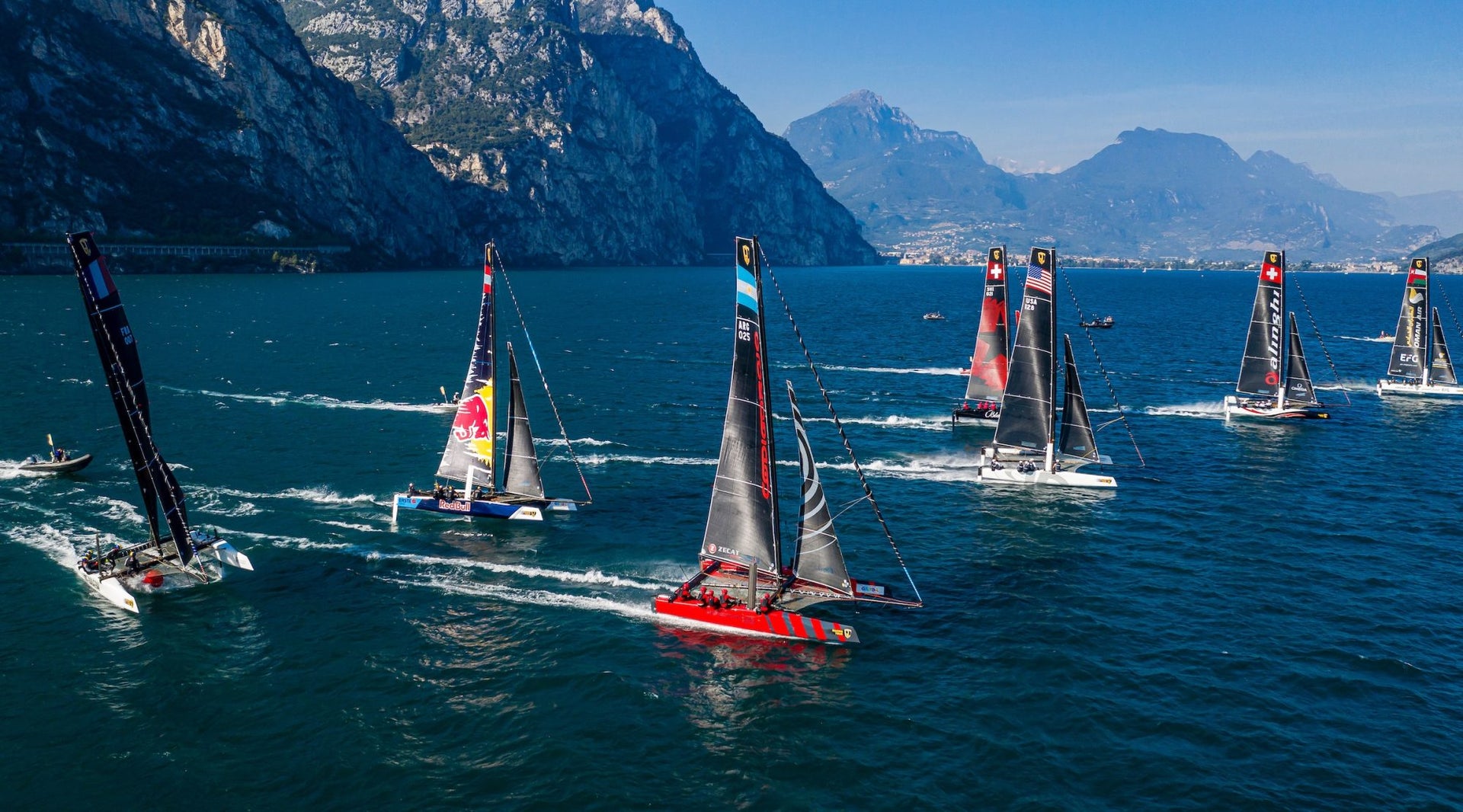
events
GC32 RACING TOUR STRONGER AND FITTER IN 2022
GC32 RACING TOUR STRONGER & FITTER
A Look Into What’s Coming During the 2022 Season
📸 Sailing Energy / GC32 Racing Tour
The GC32, the sole World Sailing- recognized foiling catamaran big boat class, returns in 2022 with a full season of racing on the GC32 Racing Tour.
Now in its ninth year, the GC32 Racing Tour will visit five of the best foiling venues in southern Europe. The tour kicks off this month with the GC32 Riva Cup held in the big wind, flat water, Alpine mountain encircled Lake Garda. It then moves on to Lagos on Portugal’s Algarve where the GC32 teams can experience Atlantic winds within the confines of a protected bay. Two events will be held in this welcoming venue, the first June 22-26 acting as a warm-up for the main event, the GC32 World Championship held July 13-17. The Tour then returns to Villasimius, Sardinia September 14-18 before concluding in the Spanish Murcia region’s inland sea, the Mar Menor, October 19-23.
More than ten boats are expected for the GC32 World Championship, including the Alinghi team that won the GC32 World Championship when it was last held in Lagos in 2019. Since then Alinghi has united with Red Bull to challenge for the 37th America’s Cup and is fielding two teams on the GC32 Racing Tour: Alinghi Red Bull Racing SUI-8 with their regular helmsman Arnaud Psarofaghis skippering and Alinghi Red Bull Racing SUI-15 helmed by 49er sailor Maxime Bachelin. The latter will be sailed by a younger ‘development’ squad, with the old hands among the SUI-8 crew providing experience as well as a benchmark for their teammates.
View this post on Instagram
A post shared by GC32 Racing Tour (@gc32racingtour)
SailGP teams are also represented with the Danes led by Nicolai Sehested on Team Rockwool Racing who will be looking to improve on their mid-leaderboard finishing position in 2021. Additional SailGP teams are due to join the GC32 Racing Tour later in the season.
A huge development for 2022 is the stronger turn-out of privately backed teams competing, their owners relishing the state of the art foil-borne racing at 30+ knot speeds which the GC32 provides. France’s Erik Maris with his Zoulou team and American Jason Carroll with Argo, are both back. Christian Zuerrer’s Black Star Sailing Team, who managed to beat both Argo and Zoulou on the 2021 GC32 Racing Tour, is also returning for 2022. On board Zuerrer trims main while Kiwi match racer Chris Steele helms.
The Zoulou and Argo teams will be joined in the GC32 Racing Tour’s Owner-Driver Championship this year by GC32 Class President Simon Delzoppo’s film AUS Racing, which last raced on the circuit in 2018 and whose plans to return were previously scuppered by the pandemic. These privately-backed teams are looking forward to not just racing each other but also, the unique opportunity the GC32 Racing Tour provides to line up in anger against a talented field of high performance sailors.
“This new season promises to be exciting with a great mix of old and new teams,” confirms Erik Maris. “I look forward to racing against the other owner-drivers even though the beauty of this class is the mix of fantastic professionals and amateurs.”
📸 Sailing Energy / GC32 Racing Tour
READ MORE
READ MORE
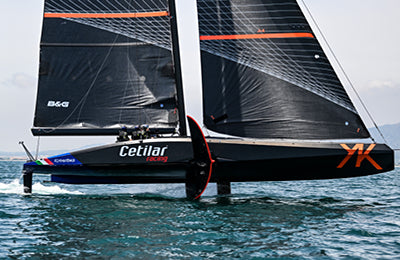
events
RECENTLY LAUNCHED: FLYINGNIKKA
RECENTLY LAUNCHED: FLYINGNIKKA
Roberto Lacorte’s New Racing Machine is Pure Performance
It was the most anticipated launch of 2022 and one that generated a buzz of excitement. A challenge within a challenge, FlyingNikka is the first yacht to tackle so many design boundaries. The 60′ Mark Mills designed mini-maxi experienced the first ‘flights’ in Valencia in early May and is soon departing to Italy with a mission; to claim race records of the prominent offshore regattas. North Sails is a longtime supplier to the ‘Nikka programs, and we’re honored to have played a part in bringing FlyingNikka to life.
“To fully understand the meaning and purpose of such a boat, it is first necessary to get acquainted with its owner Roberto Lacorte,” says North expert and Italian sales manager Alessio Razeto.
Razeto heads up the FlyingNikka sail program and serves as the team’s sail trimmer. He explains more from Valencia:
“We met with Roberto during the construction of the first Nikka, a Vismara-Mills 47. It was 2012, and compared to where we are now, it seems like a lifetime ago! In those years one of his other creations was taking shape, the 151 Miglia – a regatta that is now sold out with every edition.”
In 2012, Lacorte’s core team was formed, a group still together over a decade later. From the 47′, the program moved on to its next ambitious project, SuperNikka. From a blank sheet of paper and the design vision of Mark Mills and Alessandro Vismara, SuperNikka saw immediate success. The boat claimed the 151’s Line Honors in 2015 just four days after her launch, a hint that this was a program that would never stop racing alongside such an owner, neither at sea nor in the design office.
With the original group intact, the boat continued to do very well, and the results kept coming in. But despite their numerous successes, the team always felt compromised. “Sometimes we ended racing with 72s, and in other regattas, we sailed against the 50s with mixed results, Razeto explains. “And so we reached a turning point: changing the boat and moving forward along the path of friendship and sport, consolidated by thousands of miles in regattas.”
Razeto elaborates, “FlyingNikka is how Roberto Lacorte abandoned the path of compromise. He wanted a pure racing machine.”
Mark Mills, again the facilitator of Lacorte’s vision, presented the first drawing of a reasonably radical 75′. As the AC75s had just hit the water, the attention – and the inevitable doubts – of the entire world sailing community were mesmerized by the new America’s Cup monsters. But Lacorte knew there were boundaries to push further.
‘What’s new? I want to leave my mark” were Roberto’s exact words as he observed the plans for the new concept, to which Mills immediately took up the challenge.
“And so, we started too,” concludes Razeto – sharing his vision and demonstrating the cohesion of the group once again. “This is how FlyingNikka was born, an unparalleled design challenge. The boat and the sail inventory were an infinite series of uncharted design aspects, and a direct technology transfer from the experience North Sails gained during the 36th America’s Cup. But, unlike the Cup boats, which are designed to always fly, we will sail distance and, at times, stay offshore overnight. We will have to have a seaworthy boat and, last but not least, with acceptable performance even in displacement, we have a thermal engine and so on. We like to think that we have extended the concept of high limit and low limit of the AC75. And in this, we are indeed the first.
FlyingNikka’s Sail Inventory:
FlyingNikka’s sail inventory enjoys a considerable advantage from North HELIX Structured Luff, a technology derived from the America’s Cup, and yields sail with a more dynamic shape. “This is not an insignificant detail onboard a hull without a backstay or flying shrouds,” Razeto explains. “These load sharing sailing transfer to 80% of the overall sail load in the jib with 20% remaining on the forestay. A similar situation applies to the mainsail, also designed HELIX.”
All of FlyingNikka’s sails are 3Di Raw, and according to Razeto, “We have coined the new term ‘ultra-custom.”
FlyingNikka’s sail inventory includes a 140sqm square-top Helix mainsail, with two reefs (122 and 73sqm), four Helix headsail sails, from the 93sqm J1 to the 44sqm J4, all for flying speeds, and a large Helix Code sail of 150 square meters to be used solely for displacement sailing. Her total sail area is 564 sqm, approximately the size of two tennis courts.
Razeto joined the team in Valencia for the first trial and, considering a thousand unknowns of the project, saw the new boat fly on several occasions and sail very fast in light winds. The FlyingNikka program has many miles and many races ahead of it. It’s an ambitious project with a big family vibe amongst the close-knit team, just like when Roberto Lacorte, in 2012, launched his first Nikka into the water.
“A lifetime ago, indeed.”
READ MORE
READ MORE
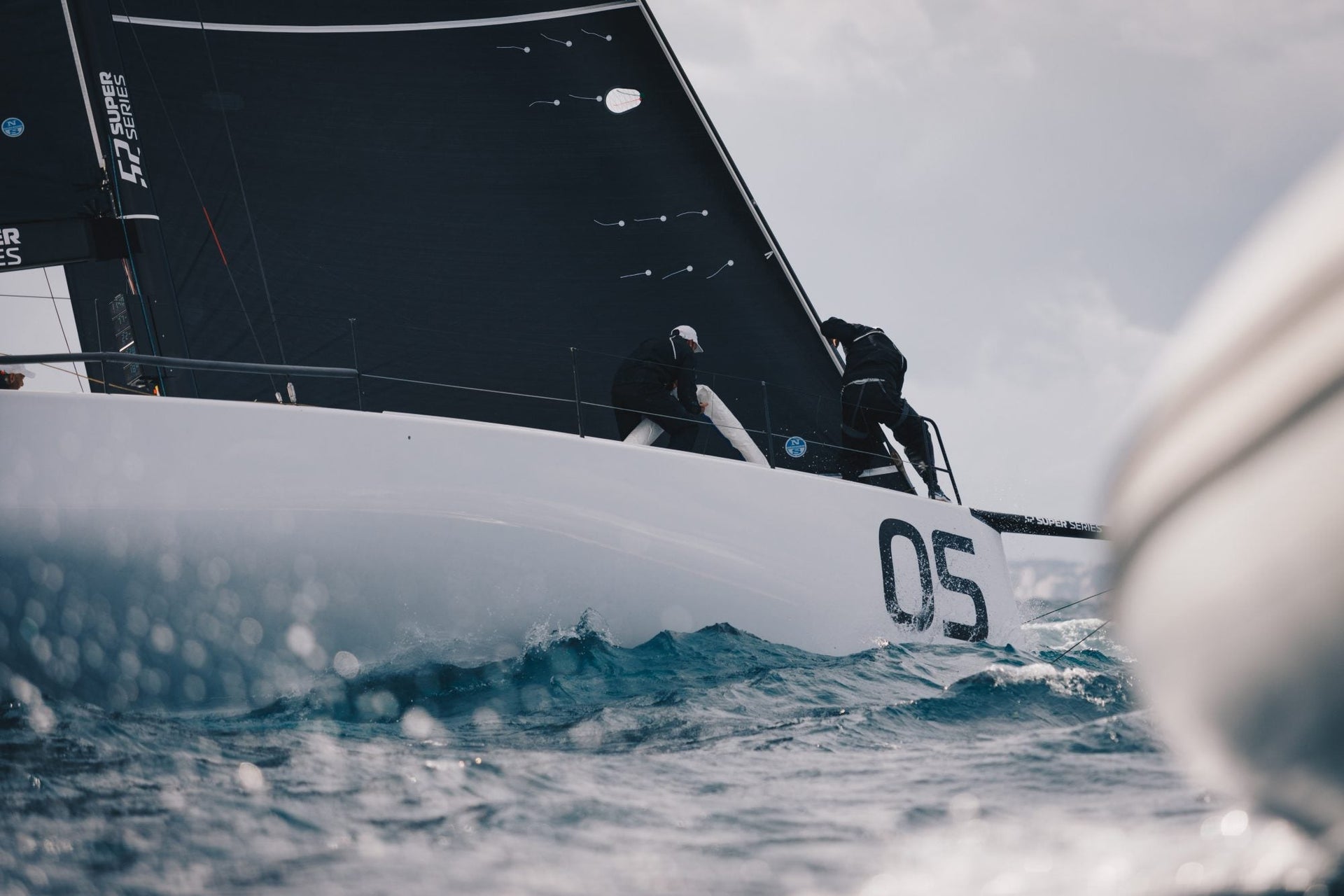
events
READY FOR ANOTHER SEASON OF SUPER SERIES SAILING?
READY FOR ANOTHER SEASON OF SUPER SERIES SAILING?
The Ultra Competitive TP52 Circuit Commences in Late May
📸 Atila Madrona
The 52 Super Series is gearing up to kick off another season of competitive sailing with five events in this high-powered circuit. As the sailmaker of choice to the majority of the fleet, North Sails eagerly anticipates the season opener when the Super Series fleet lines up next week in Baiona, Spain.
For those readers who are less familiar with the 52 Super Series, let us fill you in. This best of five series is one of the most competitive circuits in our sport. It draws some of the biggest names in sailing and has an aggressive sail development cycle that rivals that of the America’s Cup. The series began in 2012 and up until last year, only two teams dominated the overall season championship. In 2021, Mr Takashi Okura’s “Sled” ended that reign by not only becoming the 52 Super Series champions but also winning the coveted World Championships. Mr. Okura and his international crew will look to defend their status against the 9-boat fleet this season.
“In this game of millimeter perfect competitive racing, we’re ultimately judged on the performance of our product, and performance equals results,” remarks North Sails Grand Prix leader Paul “Flipper” Westlake. “For over a decade, North Sails TP52 class experts and sail designers have gathered feedback from the teams in the Series and this collective experience is fundamental to building the fastest sails on the racecourse.”
But in a class as refined as the TP52, where do you find your next performance gain?
North Sails Dave Lenz explains, “The trim techniques, the sail shapes…these sailors know their boat speed levers and because of that, we’re not radically changing the sail designs and structures each season. Instead, we explore fine-tune details to make that flying shape more active, which allows the trimmers to further manipulate the sail’s shape across the range.”
Last season saw North-powered teams adopt Helix Structured Luff and we expect to see even more throughout the fleet in 2022. “Helix is a game-changer that enables a new gear,” comments Juan Meseguer, North Sails designer and designer for TP52 Provezza. “The structured luff sails have a more dynamic shape, which translates into more power for the boat. We learned a lot last season and from our design team’s work within America’s Cup. Helix is the future, and we’re going to keep exploring this new design space.”
52 Super Series racing commences on May 23 in Baiona, Spain. This is the first of five events scheduled through October 2022. Learn more about the Super Series and follow all the action here.
📸 Atila Madrona
READ MORE
READ MORE
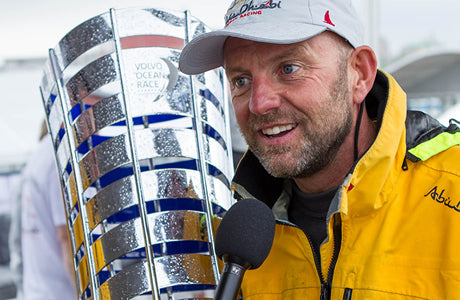
events
IAN WALKER JOINS THE NORTH SAILS MANAGEMENT TEAM
IAN WALKER JOINS THE NORTH SAILS MANAGEMENT TEAM
Olympic Medalist and Volvo Ocean Race Winner Named North Sails UK General Manager
North Sails is excited to welcome world-renown sailor Ian Walker to their management team. Walker is a two-time Olympic medalist, an America’s Cup veteran, and winner of the Volvo Ocean Race 2014-15 as skipper of Abu Dhabi Ocean Racing. He most recently served as Performance Director to the British Sailing Team, who claimed five medals at the 2020 Tokyo games. Walker’s next career move puts him at the helm of North Sails UK for the world’s leading sailmaker.
“Lowell North founded this business on a simple philosophy – get the best people and commit yourself to make the best product,” says Ken Read, President of North Sails. “Ian sits amongst the best in our sport. He possesses a winning attitude and a level of knowledge that’s invaluable to our brand and all North Sails customers. Having sailed against Ian, I know he’s a fierce competitor and simply a good guy. We’re honored to have him join our team.”
“The expertise from someone of Ian’s caliber is one of the greatest resources we can offer all of our customers,” remarks John Welch, COO of North Sails. “Each North Sails Manager is more than a champion sailor or a sail expert. They become a part of a tight-knit team working towards the common goal of developing superior products and delivering exceptional support for sailors at every level of our sport.”
“North has a long history and rich tradition of being at the forefront of sailmaking,” Walker explains. “Joining North Sails is an excellent opportunity to be an active voice in the marine industry and part of the industry’s leading brand. It’s clear that everyone on the North Sails team has a passion for helping people get the most of their sailing, and my new role presents a unique opportunity to work alongside talented, like-minded sailors.”
Walker’s official start date is August 1st, 2022. He will be based at the North Sails loft in Gosport, UK.
READ MORE
READ MORE
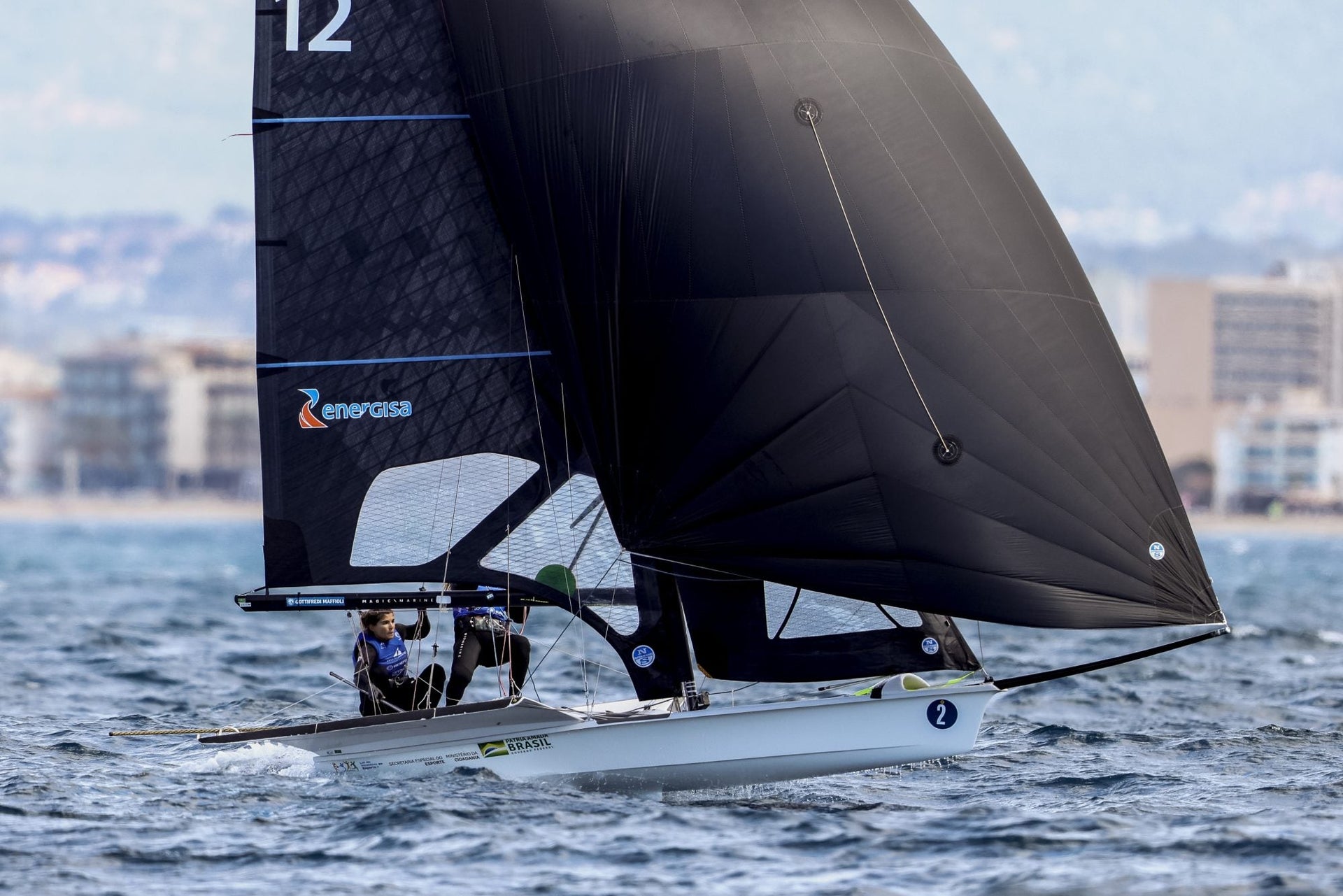
events
NEW 49ERFX OLYMPIC 3Di SAILS TRIUMPH
NEW 49erFX OLYMPIC 3Di SAILS TRIUMPH
North Sails Sweeps 2022 Trofeo Princesa Sofía Mallorca Podium
📸 Sailing Energy
The new North Sails 49er and 49erFX class 3Di sails which will be used in the 2024 Paris Olympics made their debut at the 51st Trofeo Princesa Sofía Mallorca. As the first event for the 2022 Hempel World Cup Series, the regatta demonstrated the potential of the North Sails 3Di sail inventory with the varied range of conditions that the Bay of Palma presented for the first major Olympic class regatta since Tokyo 2020.
At the beginning of 2021, North Sails was chosen as the official supplier of sails for the 49er and 49erFX classes for the Olympic cycle in Paris 2024. After the Tokyo 2020 Games, a short and intense transition process began to design and create the next set of sails that would unify the arsenal of contenders for Olympic glory, with all Olympic 49er and 49erFX racing North Sails 3Di sails. In the opinion of Blair Tuke, current 49er Olympic and World Champion, “This is the first time that an Olympic class is able to choose equipment that optimizes performance, consistency and longevity with a low environmental impact, all in one package.”
📸 Sailing Energy
The race to Paris began in Mallorca.
Overcoming the Tokyo hangover, the teams began preparation in a shortened cycle, which went from the usual four years to just over three years. The world health situation did not help either, making it necessary to wait until April 2022 to celebrate the first event of the Hempel World Cup Series. The 51st Trofeo Princesa Sofía Mallorca saw many 49er and 49erFX teams premier their North Sails 3Di sails in competition.
The 49erFX fleet brought together 56 boats from 23 nationalities, including the top contenders for Olympic glory in the upcoming Games. After five intense days of competition with varying wind and wave conditions in which 13 races were held (including the Medal Race), Odile Van Aanholt and Annette Duetz achieved a hard-fought win using the new North Sails 3Di inventory that will soon be required. The premiere of the new material helped the Dutch prevail over the current Olympic champions, the Brazilians Martine Grael and Kahena Kunze, who also competed with the spectacular black 3Di sails, as well as the third place team of Italy’s Jana Germani and Gloria Bertuzzi.
Nine of the ten medal race boats competed with the new North Sails 3Di sails, an excellent debut in the race to Paris 2024.
The next qualifying event for the 2022 Hempel World Cup Series, the Allianz Regatta will bring together the 49er and 49erFX fleets in Amsterdam, will take place from May 31 to June 5.
Learn more about why 3Di tested better than paneled sails during the rigorous testing process here.
📸 Sailing Energy
READ MORE
READ MORE
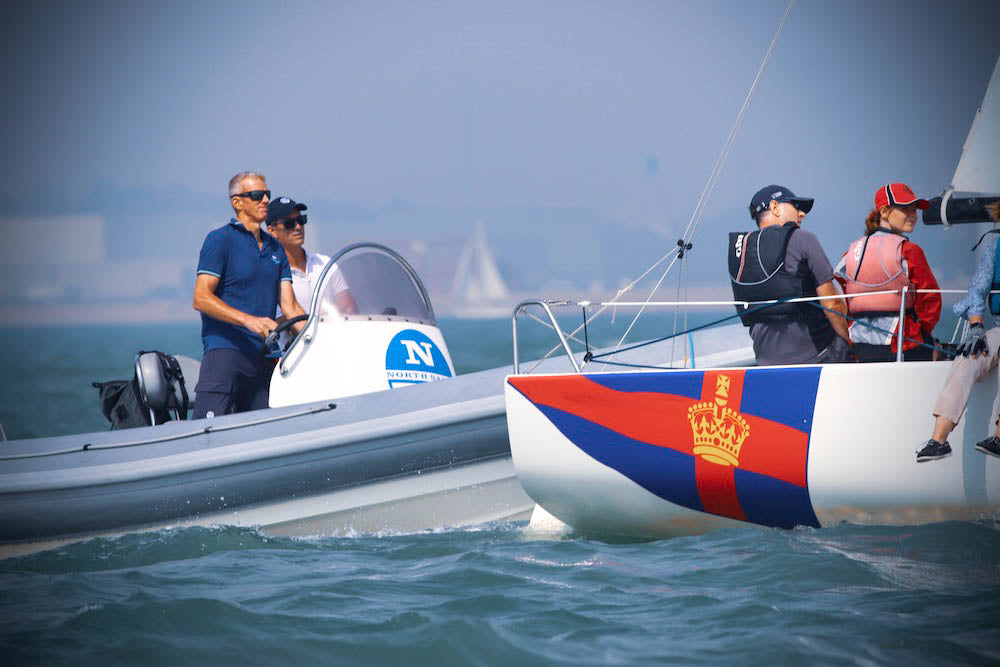
events
ROYAL SOUTHERN NORTH SAILS MAY REGATTA
ROYAL SOUTHERN NORTH SAILS MAY REGATTA
We Look Forward to Seeing You There
📸 Louay Habib / Royal Southern Yacht Club
North Sails UK is proud to support the Royal Southern May Regatta on the 7th and 8th of May. This regatta kicks off the first of a series of fun yet competitive summer regattas at the Royal Southern Yacht Club in Hamble.
With over 80 teams expected and hundreds of sailors taking part, it’s going to be a fantastic series, with boats on the entry list including J/70, SB20, Cape 31, HP30, J/111, and IRC Classes.
For the first day of the regatta, North Sails UK Experts will be on the water coaching from the North RIB, alongside Shaun Roster who is capturing drone videos of the fleets to be played at the club after racing. The local North experts will also run a short and relaxed in-person debrief for all competitors to help teams get the most out of the weekend and the series. And find our branded goodies amongst the prizes, including jackets, books, and sail bags. North Sails Certified Service will be onsite for the weekend. For any sail repairs during the regatta, contact the local Service Expert James Hobson on +44 7557 941069.
📸 Louay Habib / Royal Southern Yacht Club
Several high-performing North Sails-powered boats are set to take part, including Ian Atkin’s new Carkeek 40 Dark ‘n’ Stormy. “There is a big incentive to do all of the Summer Series regattas, but each feels like a proper championship in its own right,” comments Ian Atkins. “Dark ‘n’ Stormy is a thrilling boat to race, and there are about ten boats of similar capabilities racing in The Solent. We are looking forward to a superb season of racing.”
“Everyone could use a North Sails bag to carry their sandwiches down to the boat!” laughed Chris Jones, owner of North boat Journeymaker. “But the simple truth is that North Sails have some very high-quality experts, and we know their input is going to be of the very highest caliber. Their advice really does help us progress.”
One Design classes have always been a feature of the Royal Southern Summer Series. The pocket-rocket Cape 31 UK Class, based in Hamble, will see five or more Cape 31s at the North Sails May Regatta. North Sails has worked closely with the class, optimizing sail designs, offering support and training sessions. The Bartholomew’s Tokoloshe has an experienced crew onboard and is certainly one of the North boats that we have a close eye on having won the final regatta of the 2021 Summer Series. If you missed it, read our recap on the 2021 UK Nationals and how the fleet is captivating sailors worldwide.
📸 Live Sail Die / PKC Media
The SB20 Class will also be in action for the North Sails May Regatta which will be their Southern Championship and the first round of the SB20 UK Series.
The Royal Southern Yacht Club has produced J/70 World Champions in both the Open and Corinthian Classes. The 2022 J/70 UK Sprint Series kicks off at the North Sails May Regatta and will be held throughout the Royal Southern Summer Series. With five short, sharp races per day, the series is designed to test raw speed and boat handling.
J/70 UK Class Captain Marshall King, 2019 Corinthian World Champion, commented: “The Sprint Series provides thrilling racing and is the perfect environment to improve starts and boat handling. After racing, the J/70 Class enjoys getting together for post-race drinks where we share knowledge to increase performance right through the class.”
Online Entry for the North Sails May Regatta and the Notice of Race is available here. For more information, please email: RSrnYC Sailing Secretary James Ripley.
📸 Sportographytv
READ MORE
READ MORE
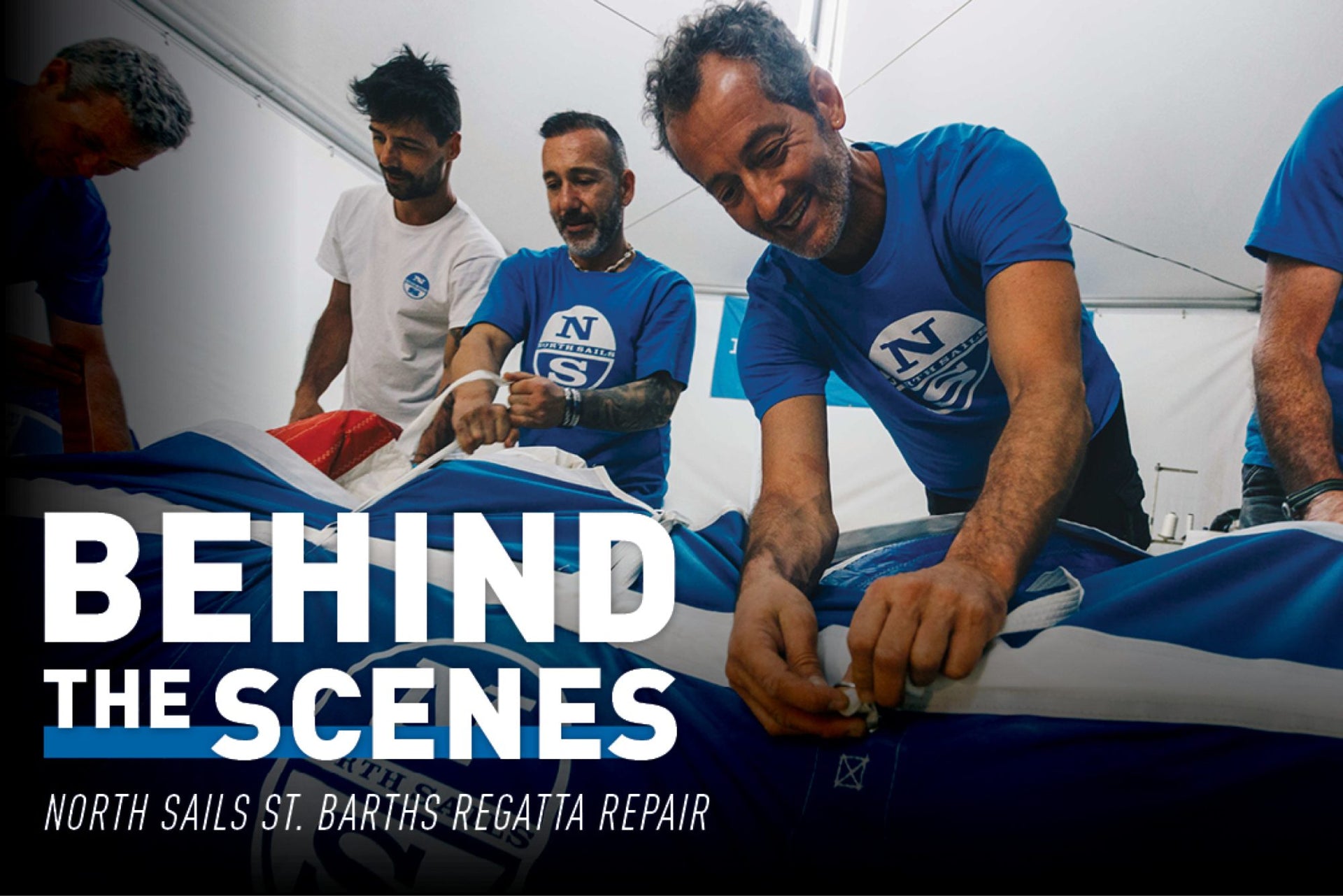
events
BEHIND THE SCENES: NORTH SAILS AT THE ST BARTHS BUCKET SUPERYACHT REGATTA
BEHIND THE SCENES: NORTH SAILS AT THE ST BARTHS BUCKET SUPERYACHT REGATTA
Watch as Our Experts Work Around the Clock to Keep the Boats Racing
The North Sails commitment to our sport and the art of sail repair knows no bounds, evidenced as a team from North Sails Palma takes their show on the road to ensure clients are race-ready at the St Barths Bucket Regatta. The portable onsite North Sails loft is a testament to the lengths North will go to offer an easy and accessible solution for all boats competing. It may be a bit of an understatement to call the loft in St Barths “portable” as the service team from Palma brings everything they need, literally from floor to ceiling, to create an environment uniquely suited to handle the logistical needs of superyacht sail repair.
Tune in for a behind-the-scenes look at how service expert Brad Favelle and his team work around the clock, repairing any rips, tears, or fails throughout the regatta; a service offered to all participating yachts. It’s hard work with long crazy hours, but if you stop to ask any of the guys where they would rather be, the answer is unanimously “nowhere.”
📸 Atila Madrona
READ MORE
READ MORE
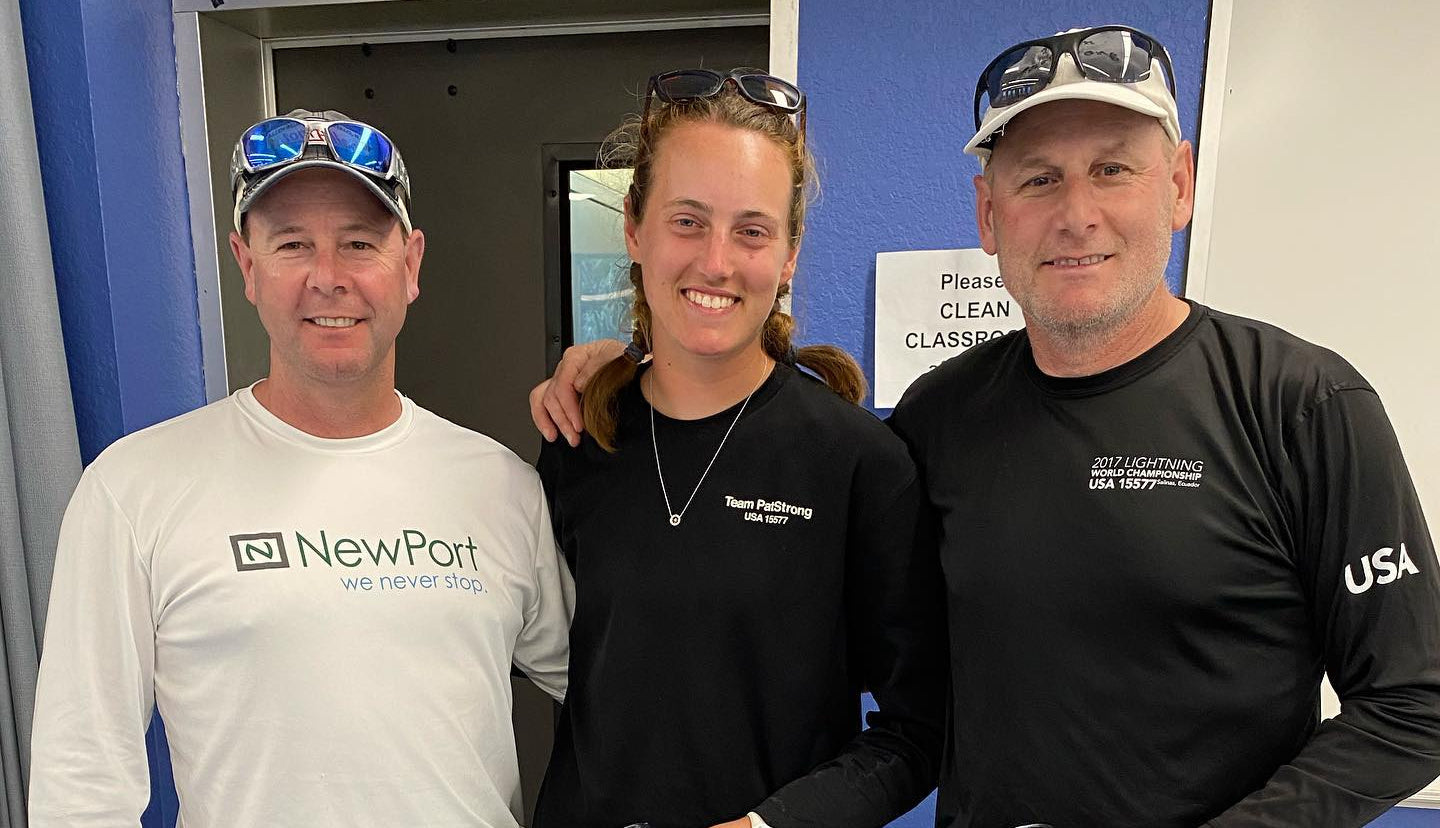
events
2022 LIGHTNING SOUTHERN CIRCUIT RECAP
2022 LIGHTNING SOUTHERN CIRCUIT
Team Patstrong Takes Midwinters Title, Solidifies Their Southern Circuit Win
Tom Starck, Jenna Probst and David Starck – Team Patstrong | 2022 Southern Circuit Champions
The final leg of the 2022 Lightning Class Southern Circuit wrapped up March 25th with the Lightning Midwinters being held in Miami Florida. 25 teams sailed on beautiful Biscayne Bay with the racing and regatta events being hosted by the Coconut Grove Sailing Club. Conditions were challenging over the 2 day event with big chop and wind speeds of 12-22 knots. This combination created ample opportunity for crews and boats to be thoroughly tested leading to a few breakdowns and capsizes. However, by the end of each day, all the boats were fixed and crews (while perhaps sore and tired) were smiling and excited to have been able to be back racing in Miami.
The Midwinters began with 3 races being held in Thursday’s big breeze and waves with 1/3 of the fleet suffering some sort of mishap that caused them to miss at least one race. Friday’s forecast looked only marginally better, but as the day wore on the breeze moderated dramatically giving many of the tired crews a small break with more manageable 12-15 mph shifty breeze, allowing the race committee to complete 3 more races to give the teams a drop race.
Getting the drop race was critical for regatta and circuit champions David Starck, Tom Starck and Jenna Probst as they were one of the teams that suffered a breakdown on Day 1 and carried a DNC into Friday’s racing but with a final scoreline of 4,1,(DNC),2,1,2, “Team Patstrong” asserted their dominance on the circuit and bested the Chilean team of past World Champion Tito Gonzalez, with his son and daughter Alberto and Trinidad by 5 points to win the 2002 Midwinter Championship. Rounding out the top 3 was our own Ched Proctor with Madeline Gill and Jeff Eiber only 5 points behind team Gonzalez.
Last but not least, Sabrina Starck, David and Jody’s daughter (and long time Lightning sailor) won the Youth Award at the 2022 Winter Championships. “It is a super one-design class for youth sailors who want to experience a high level of competition, international venues, and a family atmosphere,” mentioned dad and Southern Circuit winner, David Starck.
The Midwinters wrapped up the 2 regatta Southern Circuit for the class and it was exciting to see the successes our clients had using North Sails, with every race on the circuit won by a North Sails team. We are proud that so many Lightning sailors trust North Sails to help them succeed on the race course with 9 of the top 10 teams, and 20 out of the top 23 teams racing with North inventories. Our team is looking forward to a great 2022 season and the World Championships May 2022.
Reach out to any of our North Sails Lightning team and see how we can help make you and your team championship winning fast!
CONTACT AN EXPERT
“Top Newcomer” to the Lightning Class – Augie Diaz
View Full Results Here –
Winter Championship
Midwinter Championship
Lightning Southern Circuit Overall
1. Team David Starck, Tom Starck and Jenna Probst
2. Team Augie Diaz, Jackie Morrison, Kim Couranz and Christine Maloney
3. Team Tito Gonzalez, Trinidad Gonzalez and Alberto Gonzalez Jr.
4. Team Jody Starck, Bill Faude, Ian Jones and Tim Crann
5. Team Ched Proctor, Jeff Eiber, Madeline Gill, Ethan Bixby and Meredith Killion
Top Newcomer- Augie Diaz
Interested in joining the class, or getting to know more about the Lightning? Check out the Class Website here.
READ MORE
READ MORE
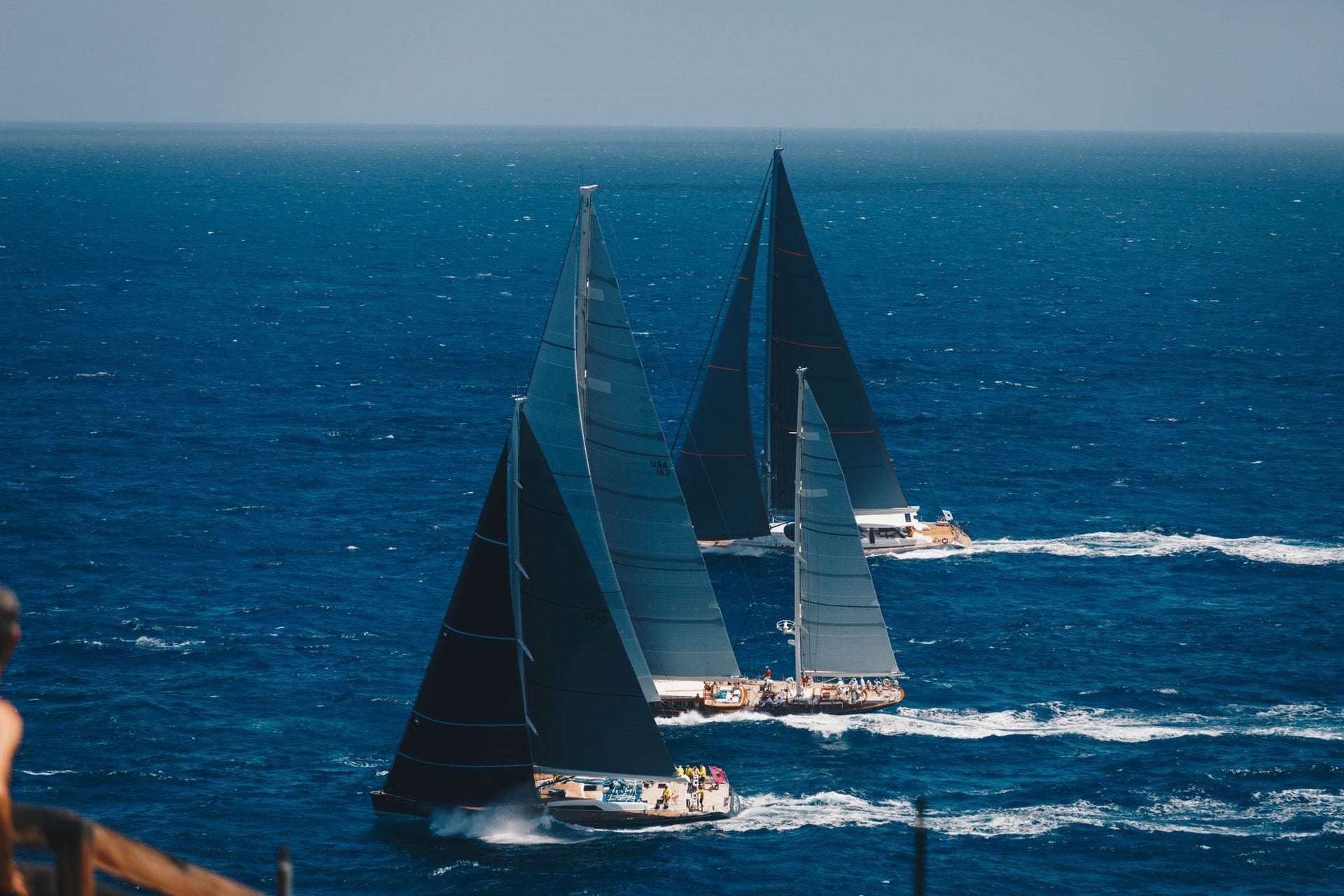
events
#NSVICTORYLIST: 2022 ST. BARTHS BUCKET REGATTA
#NSVICTORYLIST: 2022 ST. BARTHS BUCKET REGATTA
The Must Do Superyacht Regatta of the Winter is Back
The 35th edition of the St. Barths Bucket Regatta drew 30 magnificent boats to the starting line, 27 superyachts and 3 J Class boats graced the waters of the white-sand Caribbean island. 2022 celebrates the return of racing after a two-year hiatus due to Covid restrictions. In the end, North-powered teams piled onto the podium and claimed 60% of the total podium positions, including overall winner Hetairos.
The Bucket also marked the debut of Perseus^3’s new North Sails 2,604 square meter A2. This spinnaker is the largest sail ever built with sail area equivalent to approximately 10 tennis courts!
📸 Ryan Borne
Getting back to Bucket racing was a welcome treat for everyone participating: owners, crews, North Sails, and sailing fans worldwide. The St. Barths Bucket Regatta is an all-hands effort for North Sails whose event support was evident both on and off the water. There were close to 20 North experts sailing as crew, and our Palma-based superyacht service team ran an on-island pop-up loft to ensure all participating yachts were race-ready throughout the four-day regatta.
📸 Atila Madrona / Corinna Halloran
Noteworthy Regatta Shoutouts:
Herairos won both her class, and the Hermès Bucket Trophy for her overall regatta win. This is the second consecutive victory for the 59.9 meter Dykstra ketch, who took possession of a new North sail inventory just weeks ago.
North CFO Andrew Schneider and Superyacht Expert Mike Toppa were on board for Rosehearty’s Class D first-place victory. Schneider has raced with and managed the yacht’s sail program for the last six events, resulting in four class wins.
North Technology Group Chairman Tom Whidden called tactics on Class C winner Kawil. Though high winds blew out the final day of racing, Whidden was happy with the team’s result. “It’s not the ending we wanted, but it’s the results we wanted, so how are you going to do better than that?”
📸 Atila Madrona
The J Class got the most sailing in, with four races completed. 2022 was the first time the boats have participated in official class racing since 2019. North Technology Group President Ken Read was the skipper on Hanuman with a crew comprised of many familiar faces from his Volvo Ocean Race veteran teammates.
Sail Designer Glenn Cook and longtime program contributor Peter Grimm joined as race crew on board Perseus^3. We’re guessing both North experts held their breath for a few minutes as they hoisted the new A2.
Helix Downwind and Helix Upwind sails were prominently on display throughout the fleet, further proof that Helix Structured Luff technology has infiltrated superyacht sailing. While other sailmakers also promote structure luff sails, the revolutionary Helix design philosophy uniquely reaps the benefits of 3Di and is available exclusively from North Sails.
📸 Atila Madrona
Read more about the four-day event on the St. Barths Bucket Regatta website.
READ MORE
READ MORE
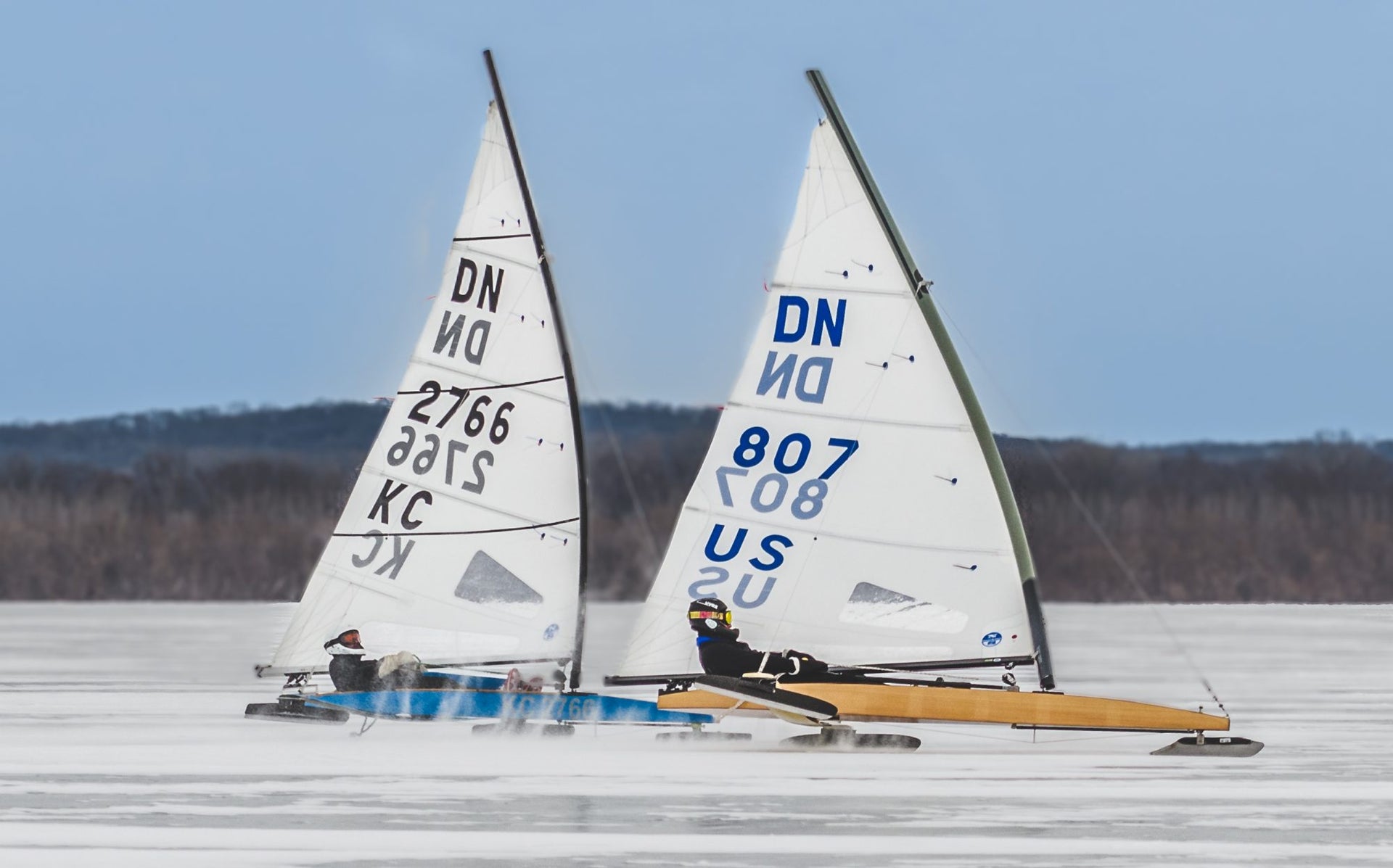
events
TRAILERS READY, BLADES SHARP
TRAILERS READY, BLADES SHARP
DN Sailing: In Search of Perfection
📸 Gretchen Dorian
Things happen fast in DN Iceboat racing—and we’re not just talking about whiplash turns, skid outs, or cheek-flapping straightaways. We’re talking about locations, too, as in where, when, and how races happen.
For “soft-water” sailors (yes “hard-water” sailing is ice sailing), planning a regatta is easy: pick a venue, nail a date, and pray for wind—but for hard-water racers, finding good ice, and better yet, scoring the rare combination of slick black magic with the right amount wind is up there with blue moons and flying pigs. More often than not, finding the ideal racecourse is a task darn near impossible, but for the nomadic and diehard ice yachters of the International DN class, it’s just another part of the sport. Our case-in-point is the most recent International DN Yacht Racing Association’s National Championship.
This past January, icemen and women gathered in Madison, Wisconsin, at Lake Monoma. The lake had good ice as far as the eye could see, but in the forecast was also an iceboater’s four-letter foe: snow.
“We knew it was coming,” says Deb Whitehorse, longtime DN Class secretary and treasurer who’s superpower is orchestrating a full regatta relocation mission from her kitchen table. “We gambled, hoping would be on the low side, but it ended up being more.”
Whitehorse and fellow DN class officers had two backups: Green Lake, about an hour and a half north of Madison, and Senachwine Lake, two hours south in Putnam County, Illinois. “Scouts” were dispatched to both locations and soon reported back: Green Lake was no good, and Senachwine was good enough. Scouts are higher-ranked DN sailors who know what to look for.
📸 Gretchen Dorian
“The first thing is ice conditions,” Whitehorse says. “There can be a little snow, but not too much. We can’t have too many hazards, heaves or cracks. It has to be a large enough area for a racecourse and have access to landings for people to get their trailers to it.”
Once Whitehorse gave word Senachwine was a go, the DN armada was en route from all points, and among them was DN newcomer Eric Doyle, a North Sails sailmaker of 30 years at the sun-kissed loft in San Diego. Doyle relocated to Minneapolis two years ago and promptly joined the DN scene. He hasn’t collected a garage full of stainless runners, planks, rigs, and sails yet, but it’s only a matter of time.
“It is, as they say, the sport of gypsies,” says Doyle. “They’re ready to go, ready to wait, or ready to change venues and drive six hours . DN sailors will do anything for good ice conditions because, when it’s right, it is by far the most fun sailing I’ve ever done. It’s just so fast, so effortless and so cool to take this little 12-foot boat and fly 25 to 30 miles per hour upwind. Then to go 40 downwind is really incredible.”
Doyle purchased his first two DNs last summer, a “woodie” from the 1960s and a “real race boat” from Rob Evans, his friend and mentor of all things iceboat racing. And like the erratic movements of DN regattas and the winter gypsies themselves, Doyle’s experience has been all things fast and unpredictable.
“I’m still learning how to get around the bottom mark,” says the Star World champion and sail designer with a distinguished career in one-design racing. “At the start, first you have to sprint—and I haven’t done any all-out sprinting since high school—and then you have to figure out how and when to jump into the boat smoothly. There’s a lot of technique involved.
“The bottom mark is really challenging because the boat starts to slide,” Doyle says.
Whitehorse bears witness to his early attempts: “I remember watching him try to figure it out,” she says. “It was very fascinating to watch.”
How so?
Well, there’s an art to going around the leeward mark, she says. “He spun out a few times. You kind of have to let out the sheet when you come around, and once he was told that, he got it immediately.”
“I just have to learn how to control it at the bottom, to have that smooth turn. There’s just this moment in time where, if you judge it wrong and you’re in that power zone… oh, man, it’s all on and you’re just sliding out of control. Plus, everyone who is waiting to start in the next fleet is there to watch you spin out,” says Doyle, who in his first DN National Championship appearance, finished fourth in Silver.
There was a fair bit on when Doyle and 54 other competitors eventually slid their three-bladed flyers onto the snow-streaked Senachwine for the first races of the Nationals in January. As a low-ranked newcomer, Doyle was automatically assigned to the Silver fleet, where he eventually faced the likes of Karen Binder, a petite museum executive director and past college sailor from Bristol, Rhode Island, who was winning every race. Binder, who is also relatively new to the class and a quick learner, is Gold Fleet material but bum luck with conditions in qualifying races relegated her to the Silver Fleet for the Championship.
“She works really hard at the technical parts,” Whitehorse says of Binder, one of several women at the top of the male-dominated class. “She’s only done it for a few years now but she works hard at it.”
Binder’s partner is James Thieler, who introduced iceboating to her in Rhode Island a few years ago. Thieler is the reigning North American champion, so one can only imagine the quality debriefs and knowledge sharing over the many daylong drives in search of good ice.
“Yes, it helps to have the right gear and the good people surrounding you,” Whitehorse says, “but Karen is the nut behind the tiller—she’s really good.”
“Karen and I had some really good battles on the last day,” Doyle says. “It was back and forth. She was too tough to beat and sailed incredibly well. That’s one cool thing about this class: I haven’t raced in big breeze yet, but in medium conditions it’s no problem at all for the women to compete at the same level. It’s about being smart and smooth and having good equipment and taking care of it. She had it down and smoked us.”
On the long drive home to Minneapolis, however, Doyle’s Senachwine experience cemented his new fascination with DN sailing. Yes, it’s unlike anything he’s ever done under sail but it’s the unpredictability of DN sailing that has his full attention. The parallels between sailing the boat and getting to the regattas is obvious to him, expressed in one rambling thought:
“Everything about it is much bigger… It’s the big ninety-degree course changes to keep the boat going. It’s the excitement of stopping, where if you stop, you have to get out and push, and while you’re doing that, there are guys still going 25 miles per hour and you’re thinking ‘oh man, I’m really losing a lot right now. And then there’s the whole thing with the regatta’s location. You’re in one place and then you gotta go somewhere else, but don’t worry, it’s only six hours. Just like the sailing, it all happens so fast. It’s just so cool.”
📸 Gretchen Dorian
READ MORE
READ MORE

events
SMALL BOAT, BIG RACES
SMALL BOAT, BIG RACES
Richard Palmer’s JPK 1010 Jangada Takes On The Doublehanded Offshore Scene
📸 Rick Tomlinson
Highlight Results
Twostar Transatlantic Race 2012 – 2nd IRC
Round Britain & Ireland 2-handed 2014 – 1st IRC
RORC 2018 – 2nd IRC overall
AZAB 2019 – 3rd IRC (1st family)
RORC Transat 2019 – 1st IRC overall
RORC 2020 C600 – 1st IRC 2-handed
RORC 2020 Summer series – 1st IRC 2-handed
RORC 2021 Morgan Cup – 1st IRC 2-handed
RORC 2021 De Guingand Bowl – 1st IRC 2-handed
UKDHOS 2021 – 1st Corinthian/Masters
RORC 2021 Series – 3rd IRC 2-handed
RMSR 2021 – 1st IRC 2-handed
RORC Transat 2022 – 1st IRC 2-handed / 3rd IRC1
RORC 2022 C600 – 1st IRC 2-handed / 3rd IRC2
Richard Palmer’s JPK 1010 Jangada has been turning heads as the doublehanded team on board continues to win multiple international offshore doublehanded trophies whilst also claiming some of the top spots against fully crewed teams. In 2020, they won RORC Yacht of the Year following their overall win in the RORC Transatlantic Race and RORC Caribbean 600 doublehanded win, they also took the Corinthian Trophy in the UK Double Handed Offshore Series.
📸 Arthur Daniel
Aiming for the coveted RORC Jazz Trophy for IRC overall and having just finished the RORC Transatlantic Race, bettering their 2019 record by just under 2 hours, we caught up with Richard to hear how a physicist turned finance professional who grew up dinghy sailing in Salcombe on family holidays is now winning international yacht races doublehanded.
Richard started sailing through a local club at 11 and caught the bug’ when his parents signed him up to an RYA course on the Thames. During family holidays in Salcombe, he was inspired to take up windsurfing as well and was later recruited for the Oxford University Windsurfing Team. Whilst working at the National Physical Laboratory he continued windsurfing competitively but also took up yachting after seeing an advert for the Civil Service Offshore Racing Club. This led to years of club racing, Junior Offshore Group (JOG) racing, and introduced Richard to Offshore racing. He was then thrown in at the deep end as a navigator on the club’s Sigma 33. His first two Rolex Fastnet Races were with the BT Offshore Racing Club in 1991 and 1993.
Following a busy few years starting a young family and focusing on his career, Richard joined the Yacht Owners Club in 2006 buying a J/109, Jangada Too. The decision to buy the J/109 was made over a glass of wine in Cowes with his friend Jeremy Waitt. After doing the first few seasons crewed, Richard and Jeremy decided to give doublehanded offshore racing a try in 2009 and haven’t looked back! Richard had several successes in the J/109, most notably winning the 2014 Royal Western Round Britain and Ireland Race with co-skipper Trevor Drew after being ‘pipped’ to the overall win by Pip Hare in the previous edition. Jangada Too sparked Richard’s relationship with North Sails.
📸 Rick Tomlinson
📸 Rick Tomlinson
“It became clear to me that most of the winning boats in the fleet at the time all had North Sails, that’s when we first got in touch with North and we have been with them ever since.” remarks Richard.
The reputable JPK1010 Jangada hit the scene in 2016. After a long stint in the J/109 getting fed up with being beaten by some of the French boats, Richard admitted “it was a case of, if you can’t beat ‘em join ‘em. When the 1010 was delivered it had a full suite of French sails, but the first thing we did was get North Sails down to do an audit of the wardrobe to work out which were fit for purpose and which needed replacing.” Over the course of the next two years, Richard replaced the full suite of sails with North Sails.
“The scale of the North operation is the main attraction, they have a great design team and the appeal is that they are always developing the materials, the shape, the cut. They’re always leading in the field. Our latest batch of sails in particular are great and very reliable. We saw that in the RORC Transatlantic Race this year. We had very little chafe or damage.”
As doublehanded sailors, Richard and his co-skipper’s often have slightly different priorities to fully crewed teams. Their priorities, amongst safety and energy/sleep management, include making maneuvers as easy as possible and minimizing sail changes, in particular headsail changes. Both their heavier jibs are reefable which means they can reduce the sail area without totally changing sail. This was added by North for the benefit of the team and tailored to their specific requirements.
Jangada’s newest addition to the sail wardrobe was the new Helix Structured Luff Code Zero. Richard and Jeremy tried it for the first time on the RORC Transatlantic Race and are very impressed. “We can carry it in higher wind strengths and to higher angles. We’re still pushing the boundaries with it, but it’s a very versatile sail.” Jangada finished the 2022 Transatlantic Race in an elapsed time of 16 days 11 hrs 59 mins 46 secs, winning IRC Two-Handed and placing third in IRC One. On top of this, Jangada’s IRC corrected time set a new race record for Two-Handed teams, bettering their 2019 triumph, and establishing the IRCRecords™ corrected time for the course of 16 days 13 hrs 58 mins 34 secs.
The team has recently completed the RORC Caribbean 600 having finished the race twice before. In 2018 they, unfortunately, had to retire due to injury but returned in 2020 and 2022 with back-to-back wins in the IRC Two-Handed class.
With the RORC Caribbean 600 over, Jangada is now on a mission to be back in the UK in time for the next RORC race of the season.
Richard is also planning on taking on the Round Britain and Ireland Race again this year with Rupert Holmes, his co-skipper from the first Transat Race. Keep an eye out for “Team Jangada” – big personalities, with big results on a relatively little boat!
📸 Rick Tomlinson
READ MORE
READ MORE
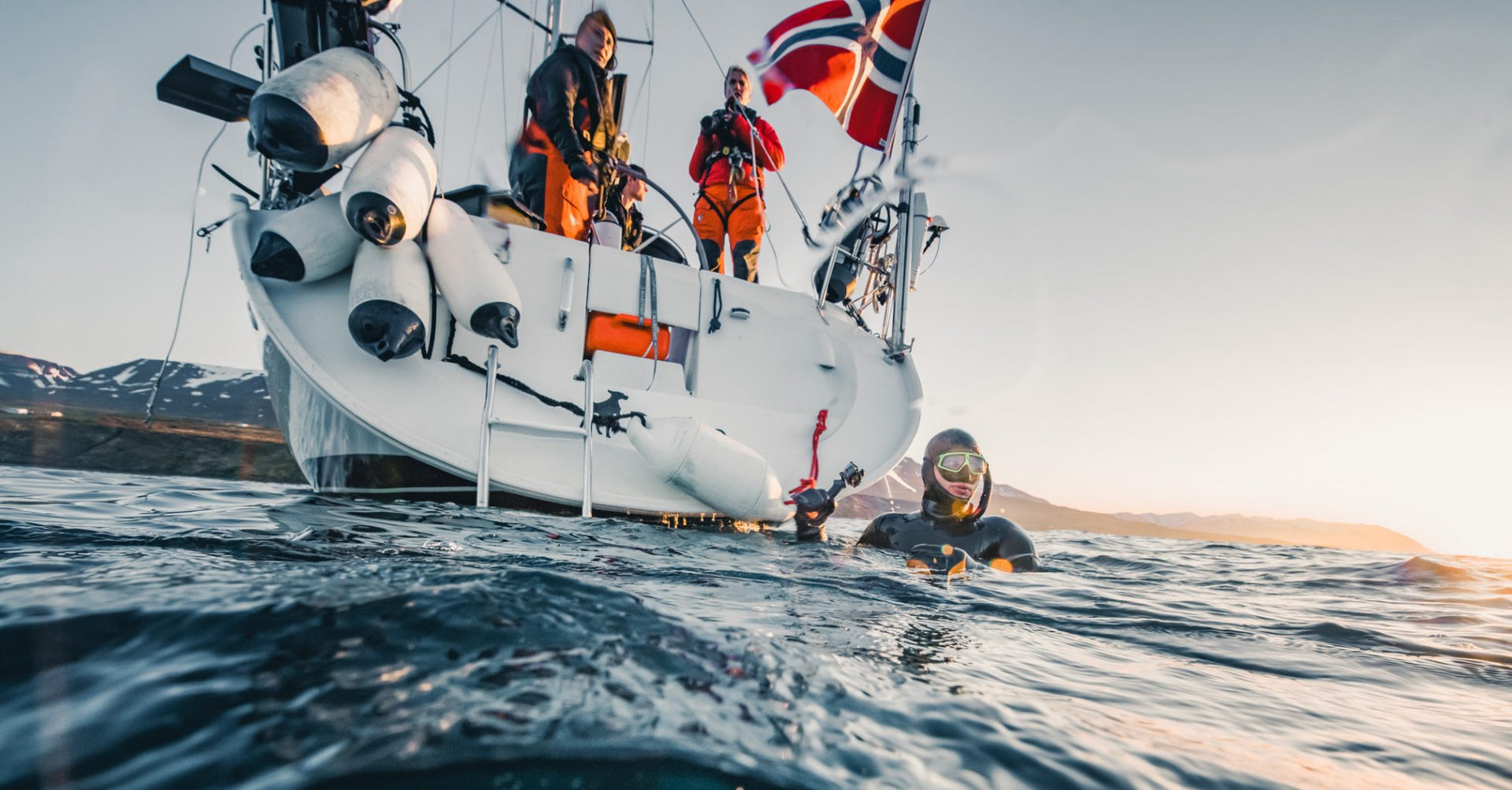
events
LETTER TO MY YOUNGER SELF: ANDREAS HEIDE
LETTER TO MY YOUNGER SELF
Andreas Heide Helmsman, Marine Biologist and Ex-Navy Diver, Takes on the Polar Atlantic Ecosystem
📸 Matthew Ferraro
The sailors and designers in the world of North Sails are some of the most inspiring people on the water, and we’re hoping to share more of their story with you. “Letter to my younger self” is a series told from our North Sails ambassadors. In each article, we bring to life their advice and personal journeys centered around the question: if your “now self” could give your “younger self” advice, what would it be?
Dear 12-year-old Andreas,
As you read this, I reckon you have just returned from a trip in your little boat or from freediving somewhere. Your parents might have been upset with you for coming home late, but shrug them off because this is the path you should stay on.
Stay true to your own journey, not the one expected by your parents or your surroundings. Let curiosity continue to drive you. Follow your instincts my boy and go for it. Know that everything you do now from climbing trees, skiing in the mountains, and rowing out to fish will help you better understand the great outdoors that you already love.
When you look at the horizon, wondering about the world that lies beyond the outer jetties, realize that one day you will adventure beyond the comforts of your home. When you look at the ocean wondering about what magnificent creatures live in the big blue ocean, know that you one day will get to meet many of these animals that fill your childhood dreams.
📸 Peter Svanberg
You will swim with whales of all sorts as well as the world’s second-largest fish, the basking shark (yes the kind you just read about in your favorite book), and have close encounters with polar bears, perhaps even a bit too close! And one day, you will sail as far north as you can, to the pack ice around the North Pole.
Getting there is not going to be easy though, sacrifices will have to be made. You will have to work hard and train harder. Join the Navy, learn to use a parachute, dive out of submarines and go on endless winter marches in the barren land of Northern Norway. But every day and every step is just a little closer towards your dream.
It’s not only about the physical side of what you do, having the smarts is just as important. Your teachers and parents will do a poor job of explaining why you have to go to school, but you have to suck it up. Trust me. If you realize that everything you learn will become useful later in life you will have fewer problems sitting still while doing your Algebra. (By the way, Algebra will become particularly helpful as you travel by boat in the high North) So listen to your parents and please be a good student. You will find marine biology studies a bit boring, but go with it because one day it will come to great use.
And whilst you should follow your instincts, make sure you surround yourself with good people and friends. Be humble and ask for advice when you need it. Nonetheless, self-confidence is really important as well. You will need that confidence at times, as it’s a lonely path you have chosen and few will understand what drives you. But you know: it’s the wonder of what lies beyond the horizon and beneath the surface; it’s the thrill of exploring; the excitement of pushing the limits that drives you through the challenges. If you stay true to your path then one day you will find many people like yourself. People with the same drive and same curiosity. These people will become your community to go out into nature and to sea, for the passion and for the love.
View this post on Instagram
A post shared by Andreas B. Heide (@andreas.b.heide)
It’s only when you grow up that you will discover sailing. Sailing is a wonderful platform that lets you sail beyond the horizon, from where you will see the white cliffs of Dover, the icebergs of Greenland, and the solid ice of the North. It will allow you to dive into remote caves of the Arctic and, ultimately, sailing will help you share your love for the ocean with the world.
But it’s not always going to be smooth sailing (pun intended). At times you will be cold, scared, and wishing you had chosen an easier path. There will be highs and lows, excitement and struggle. It will be a challenge. But this will also be what you will come to love, the challenge of going out there and working hard to reach your goals.
At times you will fail. But failing is fine, as long as you have done your best. Just make sure you push on, get back at it, and do better. Never give up, my boy, stay true to your path. It might be that you never achieve all your goals, but rest assured, that you will have an exciting journey regardless!
And one last thing, as you get older, keep reminding yourself never to lose your curiosity. As you stare out at the horizon and wonder, fret not, you will soon see so much. Trust me there is so much to explore!
Andreas
📸 Conor McDonnell
READ MORE
READ MORE
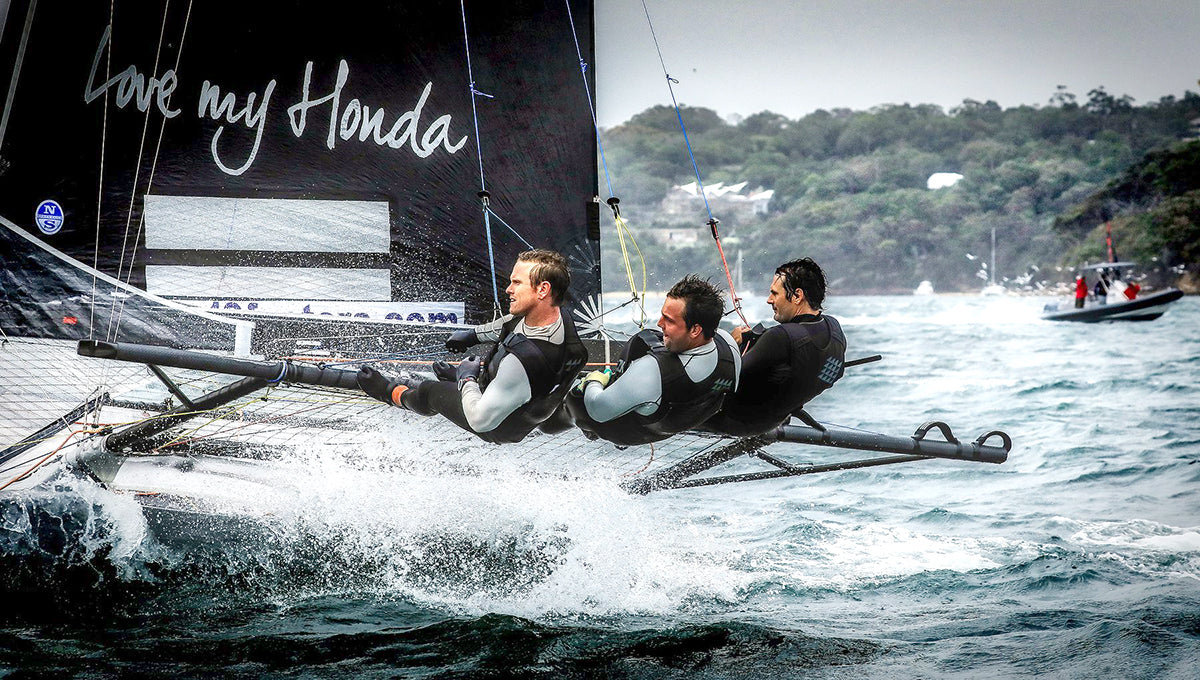
events
18FT SKIFF SPEED READING
18FT SKIFF SPEED READING
3x World Champion Matt Steven Provides Insights To Racing 18 Footers
© 18 Footers Australian League / Frank Quealey
David McDiarmid, North Sails Expert Matt Steven, and Bradley Collins (NZL) have claimed the most desired prize in the 18-footer class, the JJ Giltinan Trophy in 2018, 2019 and 2020, making them three-peat Champions in the competitive class. The 2018 win was the first time in 45 years that New Zealanders won this event, which is considered the world championship of 18-foot skiff racing. As a result of their big win in 2018, David, Matt, and Bradley were awarded Orbit World Travel Sailors of the Year at the Volvo Yachting Excellence Awards, along with Dongfeng’s 2017-18 Volvo Ocean Race winning sailors Daryl Wislang and Stu Bannatyne.
We checked in with middle crew Matt Steven about sailing 18-footers. Learn about what he has to say about choosing rigs, techniques, and how to sail an 18 to its full potential.
Crew work on an 18-footer can be challenging, especially in breeze. “We have pretty defined roles on the boat to keep consistency with boat handling,” says Matt. “It’s all about having as few crossovers as possible and not letting the boat slow down.” Crew weight also affects the technique. “I am the heaviest onboard, so it often pays to keep me out on the wire. Sometimes Brad , our bowman, gets loaded up with a few more jobs during the maneuvers. Luckily he is very fit and strong and lighter than me!”
One of the toughest things about 18’s, Matt explains, is rig choice. “You have two rigs for two wind ranges (0 -13 and 12-30 knots). However, within these ranges, there are a lot of different modes, so compromises have to be made, either at the top end or bottom end of each rig. It’s hard to have the ideal setup to cover an entire day’s worth of racing.” Though his team preferred their #2 rig, figuring out the right mode for each helped them adapt to changing wind ranges throughout each race day.
They weren’t the only ones wrestling with rig choice each morning. “There is often a standoff on the ramp,” Matt explained, as teams wait for others to make their choice. “Normally we are happy to be on the same rig as the majority of the fleet, but sometimes you just need to back yourself on the weather forecast.”
Rig tuning isn’t like other boats in the 18ft skiff. Matt explained that “the tuning tricks we have figured out ourselves over time, through practicing and spending time in the boat.” The 18ft skiff is fairly complicated, since almost every mast is custom built depending on crew weight and style, so there is not one specific guide for sailors.” Michael Coxon at North Sails in Sydney has a formula that most teams use. We have control over the rig with heel, and two sets of lower caps and primaries which we adjust accordingly as needed.”
©18 Footers Australian League /Frank Quealey
Starting line technique is pretty similar to other fleets concerning positioning and acceleration however, the 18-footer can accelerate a lot faster. “One of the hardest parts,” Matt says, “is staying stationary and holding your position. Once you lose flow over the foils, it can be very challenging to stay in control.”
Upwind and downwind techniques Matt said have similar concepts. “Body weight fore and aft, as well as knowing when to press hard are the keys to speed. Regarding tactics, staying in pressure is key… two knots of wind could make a 2-3 knot boat speed difference and a 10-degree angle change.”
Matt’s team typically replaces two or three sails a year, depending on the number of events they compete in. “We have a good relationship with our design team,” Matt says, “so we understand our gear and how to use it efficiently.” He says it’s helpful to understand shape changes, even though only minor tweaks were made for the 2018 season.
Matt’s team is sponsored by Honda, which enabled a wardrobe upgrade to 3Di for the 2019 season. This is a nice addition not only because of performance factors, but it meant they won’t need to replace sails as often. “The best thing about North Sails 3Di is that you know the shape is going to be the same each time you go sailing, and there is never a worry about structural failure. We have much confidence in the product. The added stiffness will allow us to have another dimension of rig tuning that was not available to us before. The sail controls will be more ‘tweaky,’ in a significant way.”
3Di + 18 FOOTERS
The Orbit World Travel Award came as a surprise to Matt, who was just happy to win the JJG Worlds, as it has been his primary goal since he started sailing 18-footers.
“We were very honored to be recognized alongside some amazing sailors for the Orbit World Travel Award. We are just normal guys who work day jobs that try and fit in as much training and sailing into our normal life. We have a desire to keep the trophy in New Zealand and make our fellow skiff sailors proud. We are happy to win for them, as well as ourselves and the New Zealand sailing community.”
CONTACT MATT ORDER SAILS NOW
© 18 Footers Australian League / Frank Quealey
READ MORE
READ MORE
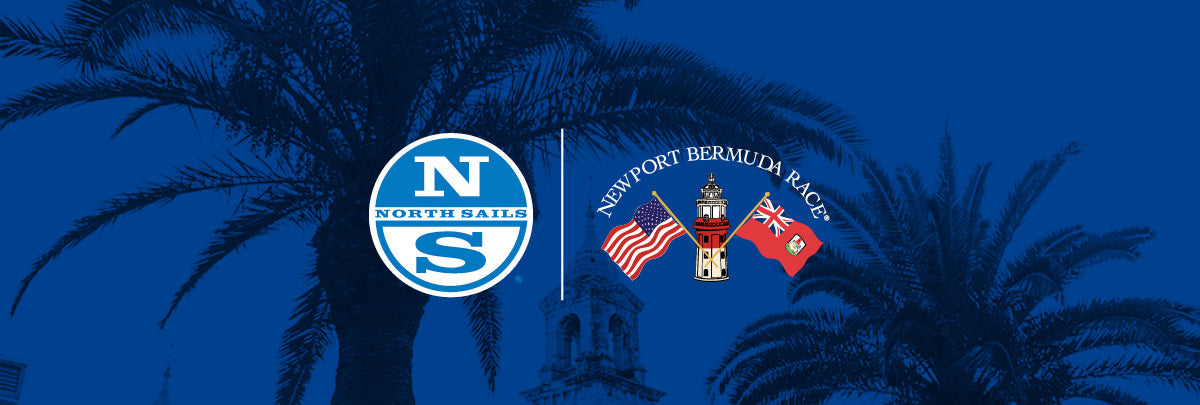
events
NORTH SAILS 2022 NEWPORT BERMUDA RACE TECH BRIEF
NORTH SAILS 2022 NEWPORT BERMUDA RACE TECH BRIEF
Sail Selection and Inventory Optimization
📸 The Ocean Race
When planning your offshore racing it is crucial to manage your sail inventory. An optimized inventory and sail selection will allow you to maximize performance and ensure your crew is prepared if and when conditions change. While necessary, multiple sail changes are time consuming and draining and having the right sails onboard will greatly contribute to a successful race. As Performance Partner to the Newport Bermuda Race, the North Sails team shares their expert advice on how to build a well planned sail inventory for the 2022 race.
Sail inventory preparation requires extensive research, forethought and planning to get right. One tool used in planning, as Peter Isler referenced in the webinar, is a heat map which uses historical data to predict wind speed and angle for future time periods. Weather and routing data used in conjunction with your boat’s crossover chart will help guide inventory recommendations.
Headsail and Spinnaker Selection
On a non-overlapping rig, jibs are coded with a J and a corresponding number. As the number goes up, the higher the intended wind range of the sail.
J1 – Performs best in 0-10 knots, while sailing close-hauled or close-reaching.
J2 – As the wind increases to 11-20 knots, a J2 comes into play.
J3/ J4 – Above 20 knots, a boat will carry a J3 and sometimes even a J4 (typically not full hoist, and sometimes set on an inner stay).
Jib Top (JT) – A high clewed (provides a better sheeting angle), non-overlapping headsail that is used when you need to bear off, but don’t want to lose your leech tension. The Jib top will be deployed at different wind speeds (boat- dependent), as it is less area than the big reaching sails, and it helps to bring the effort lower down to the boat, allowing more control over the boat as wind speed increases.
Overlapping boats will typically carry the following sails:
#1 – 155% Genoa
#2 – Typically between 130%- 140% depending on the track length and location
#3 – Non-overlapping blade jib
Genoa Top – Can be any LP smaller than the biggest Genoa. Handles the close reaching angles. Has the same high clew as a Jib Top for cracking reaching angles especially in breeze.
When it comes to asymmetric sails for the Newport Bermuda Race, North Sails experts recommend an A1 and A3, which will cover the 0- 20 knot range, reaching angles. The A5 would cover a higher wind range, however may not be as relevant for this year’s race, due to the fact that most forecast predictions do not call for this wind range. An A2 and A4 are considered broader winded, running sails. Your A2 will be your biggest sail, as it is intended for VMG running, straight downwind.
Staysails are often referred to as a “free sail,” in terms of a ratings hit. These sails increase performance when seeking extra height and essentially feed the wind on the back of the main. They also help reduce the gap between the headsail and the mast. Reach out to a North Sails expert to discuss options and recommendations for using a staysail.
Code Sail Selection
When thinking about your Code Sails, it is important to ensure your sails will cover the forecasted wind range and play to the strengths and weaknesses of your boat. Consider the rating penalties that correspond with each sail and your rig type. Try running a test certification and consult your North Sails experts for further insight.
The graphic above shows the difference in the luff curve as you move through the Code Sail range. The more you decrease the mid-girth, the flatter the sail becomes, allowing you to sail tighter angles to the wind. Anything between 55% and 75% mid girth is considered a “tweener”, and counts as a “large roach headsail”. Again, your North Sails experts can help you decode what is best for your inventory.
One option to increase range is using Helix Structure Luff sails. A radical design innovation once limited to Grand Prix Racing, Helix Structured Luff is now standard on all North Code Sails. A Helix sail uses load sharing technology with the sail’s structure to improve its aerodynamics and in many cases reduce the load on your equipment. The benefit in a distance race like the Newport Bermuda Race is maximizing performance since these versatile sails carry across a wider range.
When looking at the typical Newport Bermuda Race weather, there is a lot of time spent sailing at various reaching angles between 0-15 knots. An advantage of Helix is it allows for a wider crossover with other sails, whilst providing better luff projection for a more powerful sail shape through the range. By engaging the structured luff, trimmers can change sail shape on demand to meet the wind and weather conditions. When considering your course speed, Helix can help you limit multiple sail changes to maintain full power across more miles.
HELIX CODE SAILS
Safety Requirements and Precautions
Lastly, safety preparation is vitally important to ensure a successful offshore race and should be a deciding factor in sail choice. A storm jib and storm trysail should be in your inventory, but a mainsail with a reef that is 50% of P is an acceptable substitute for a trysail. It must attach from a different point than your main boom, be a highly visible color such as orange, red, or green, with easily visible sail numbers.
Make sure your sail repair kit is reviewed and freshly stocked prior to the race. The North Sails service experts recommend having glue, shammys/ towels to properly dry a ripped sail, denatured alcohol, a good knife, palm, leatherman, seam rippers, needles, thread and webbing in your inventory. North experts can provide tutorials for any repairs needed and can also provide a custom patch kit of sail cloths/colors to match your spinnakers.
Connect with Your Local North Loft
Get your sails into the loft ahead of time and consider remeasuring headsails if you are looking to help your rating. Connect with your local North Sails loft to get started today.
GET IN TOUCH WITH AN EXPERT
Still have questions? Watch the Newport Bermuda Race Sail Selection and Inventory Optimization Webinar with North Sails Experts Tim Dawson, Austin Powers, Jack Orr and Will Bomar.
READ MORE
READ MORE
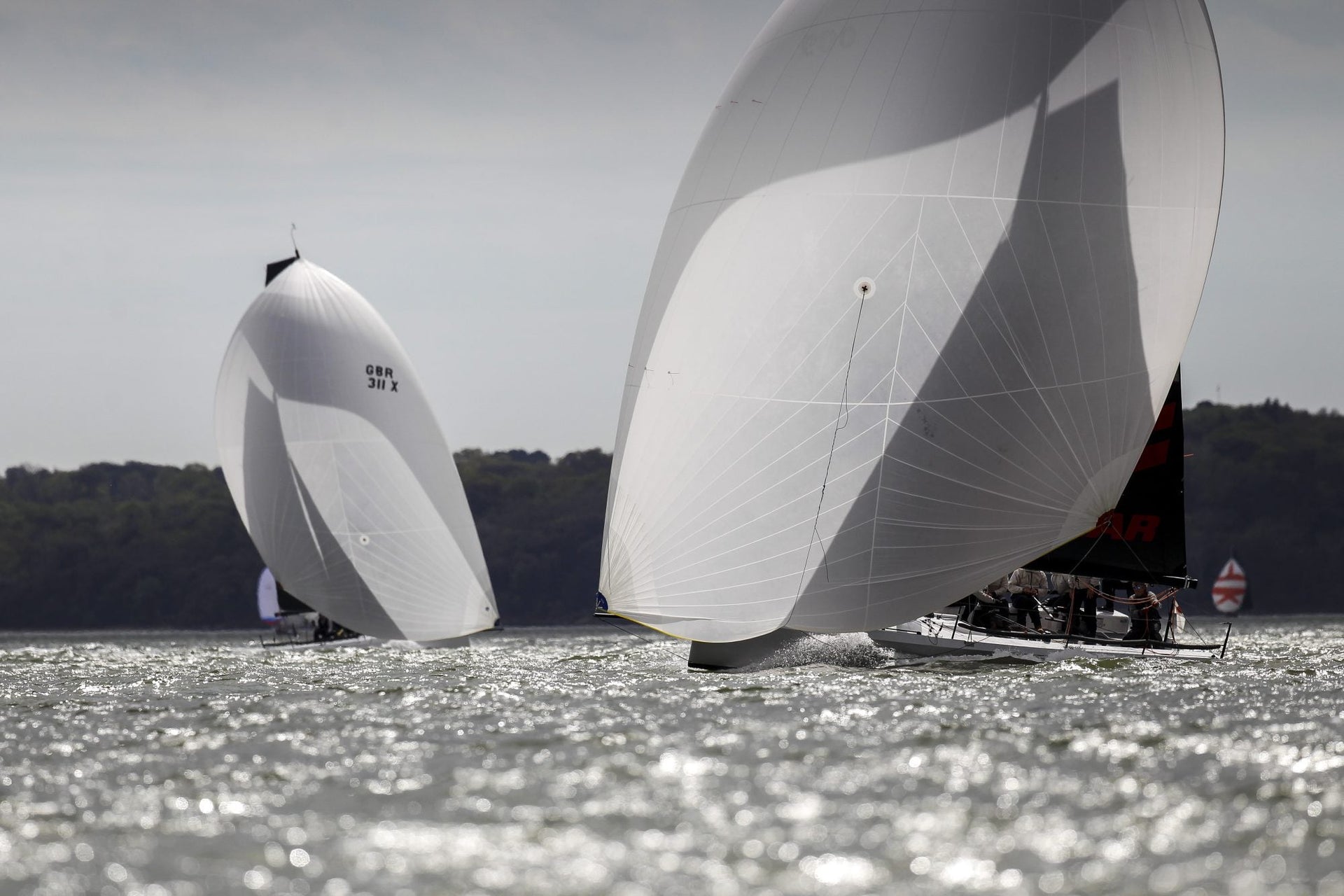
events
NORTH SAILS UK MUST-DO REGATTAS IN 2022
A LOOK AT THE SEASON AHEAD
North Sails UK Must-Do Regattas In 2022
📸 Rick Tomlinson
With the 2022 racing season just around the corner, North Sails UK has outlined its highlight events of the upcoming year. Your local North Sails experts will be sailing and on the dock for all of these regattas, so keep an eye out and we are looking forward to seeing you there.
If you haven’t placed your order for the upcoming season yet, to avoid disappointment, get in touch with the team of local experts today.
TALK TO AN EXPERT
Poole Regatta: 30th April – 2nd May
The first date for the diary is Poole Regatta, and with over 18 classes expected to line up in Poole Bay, what a way to start the season. As sponsors of the rapidly growing Cape 31 class, the North Sails coaching day on the Friday before racing will be the prime time to quiz Cape 31 Class Expert Ben Saxton. Teams will have the opportunity to utilise their skill and experience in sail trim and crew work to get the most out of the first Cape 31 regatta this year.
To reserve your spot, reach out to Ben Saxton today
CONTACT BEN SAXTON
Round the Island Race: 25th June
Round the Island Race is one of the world’s largest yacht races, with the extensive entry list comprising of Grand-Prix race yachts, superyachts, foiling trimarans, cruising boats, and small keelboats, all competing for the Gold Roman Bowl. Over 1000 boats are expected to take part, and the local North Sails team will be busy making sure your sails are delivered in time for the race.
Cowes Week: 30th July – 5th August
Following a slightly quieter event in 2021 due to the pandemic, you will not want to miss this years’ Cowes Week. One of the world’s most famous regattas, yachts will be coming from all over for a great week of racing on the Solent.
Cork Week, Ireland – 11th – 15th July
Following the cancellation of its 300th Anniversary event in 2020 due to the pandemic, the Royal Cork Yacht Club is raring to go with a rerun of their big anniversary of Cork Week. Welcoming everything from stately classics to the most modern race boats, all can expect a warm Irish welcome and great racing. We can’t wait for this renowned event to be back.
IRC Europeans, Netherlands – 25th – 28th August
Finally, at the end of August, the European IRC Champion will be crowned in Breskens at the seventh edition of this event.
Other notable events include –
RORC IRC National Championship
Sevenstar Round Britain and Ireland Race
Volvo Round Ireland Race
SIGN UP FOR NORTH SAILS NEWS
READ MORE
READ MORE
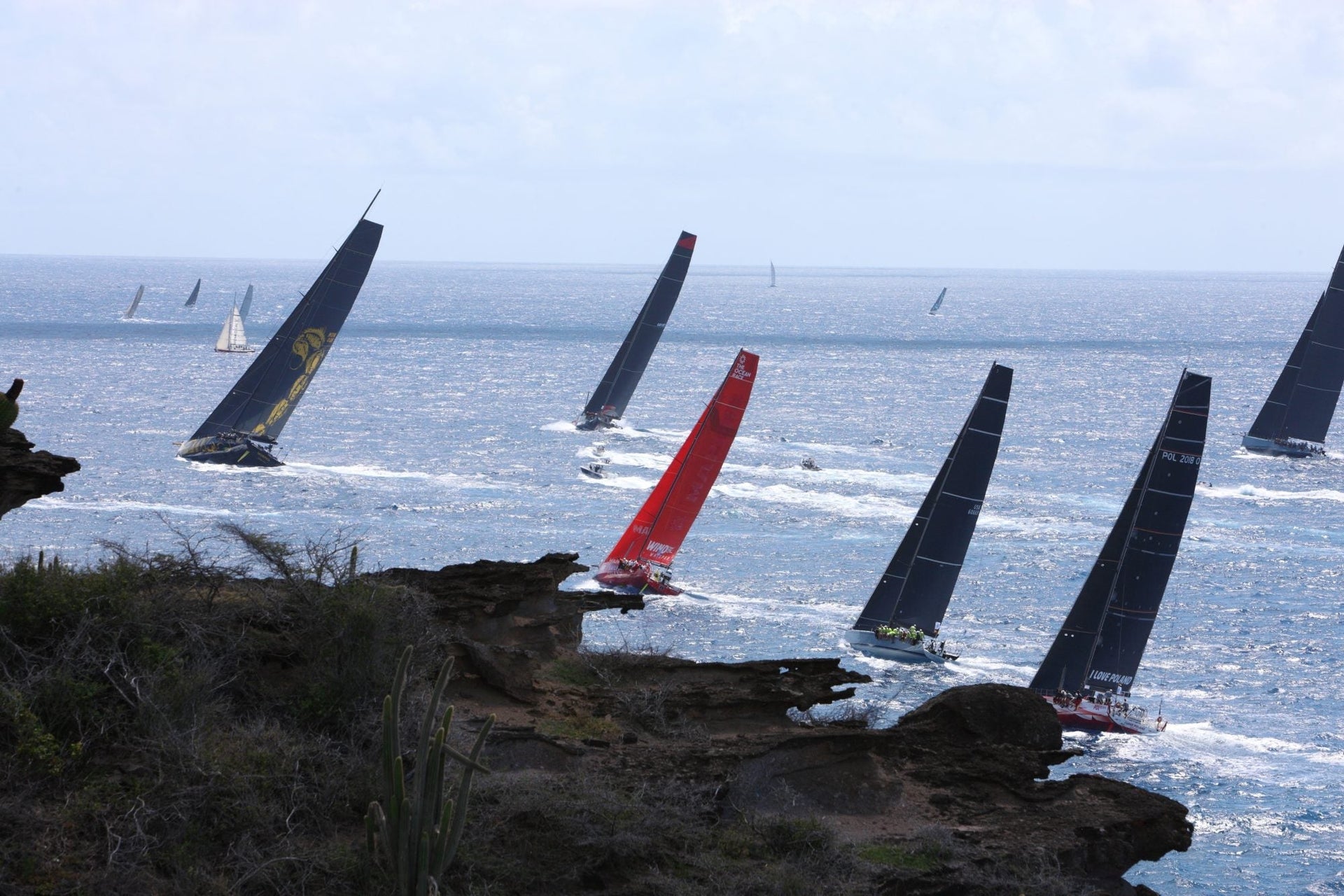
events
Q + A WITH ANDREW DOVE, MANAGER OF NORTH SAILS ACTIVITIES IN ANTIGUA
BEHIND THE SCENES AT THE CARIBBEAN 600
Q + A With Andrew Dove, Manager Of North Sails Activities In Antigua
📸 Roddy Grimes-Graeme
In anticipation of the 13th Edition of the RORC Caribbean 600 Race, we sat down with Andrew Dove, the manager of North Sails activities in Antigua to get a closer look at the preparation for this event from the loft manager’s perspective. Situated close to the docks, the loft is a gathering spot for crews from all over the world, and is the center of the excitement during the weeks leading up to the event.
What makes the “600” different? What is the “je ne sais quoi” of the race?
The 600 is a showcase of our beautiful islands. As the boats progress through the 600 mile-course, there are numerous challenges to keep it interesting: wind holes under islands and the currents running between them. In this race the navigator and tactician are especially vital to a team’s success as one wrong decision can be extremely costly.
For the Caribbean 600, both professional and amateur crews prepare in almost perfect conditions on the docks of English and Falmouth Harbour. There is a real buzz of energy about the village before the start. Then as the boats return, the whole community shares the stories that the crews have written during the regatta. It never gets old; even after 13 years, the buzz is still going strong.
Why is the 600 important to North Sails, and how is North Sails important to the race?
The North Sails loft is an unofficial regatta HQ from morning to night every day and has been for years. The loft comes alive with this event, and crews gather here often late into the night. So many North colleagues from around the world are on-island with us, and we all fly the North Sails logo proudly and with enthusiasm. With such a diverse fleet on the water, racing in varied conditions, our many North Sails experts are ready to assist the teams in every way we can.
As customers have booked in, our team has managed to stay ahead with a seven-days-a-week schedule, basically since the New Year. And now, as the boats are in their final practice sessions, we are confident we will meet the expectations that our customers bring, and our sails will meet the demanding conditions. I have developed a strong team over many years, and we approach our work seriously, but always with an Antiguan smile.
In your opinion, what will be the essential sails during this race?
There is a reasonable amount of reaching in the course, and it becomes a real test of a sail’s durability. Our Helix Structured Luff Code and A Sails can make a huge difference here. Also, 3Di is invaluable because of its unique performance and durability. Many of the beats are challenging, with steep, choppy seas, so the powerful and stable 3Di headsails give any boat a cutting edge. The Caribbean 600 provides ideal conditions for us to differentiate ourselves from our competitors and highlight the breadth and range of the North Sails products.
📸 RORC/ Tim Wright
In a race like the TJV, many teams worked with the North Sails France team to design and build sails; the sailors then provide feedback to the designers once they returned to France. The Caribbean 600 is different, though, but equally important– do teams (ex Skorpios) give feedback to you upon their return to Antigua? How does the feedback loop work with you?
The Antiguan loft sees sails used in extreme conditions. The seas and wind are much more demanding than one would believe. So after each event and especially the 600, we can give feedback to the North designers regarding what we see coming through the loft and suggestions for improvements based on the conditions experienced. There is a wealth of knowledgeable feedback with so many experts on the water.
Previous 600s have helped to prove that 3Di is exceptionally durable, as I mentioned, and overall a vastly superior product. We do very few repairs on them, and when we do, the materials available ensure the sails remain structurally sound and visually neutral. We are looking forward to seeing the Helix sails in the race this year. However, we don’t expect to see too many in the loft for repair. In terms of performance and practicality, Helix sails are incredibly durable and versatile across a wide range, reducing the number of sails required. This race should prove a great testing ground to further the Helix Structured Luff design philosophy.
Why is it important for the top teams to have the most technologically advanced sails on the market?
In these regattas, the teams have a lot to manage. Not having to worry about sail structure or wondering if the sail will perform, plus having top notch service removes a lot of pressure on the teams. In addition, the boats equipped with North Sails have more time to focus on non-sail-related race preparation.
📸 Roddy Grimes-Graeme
READ MORE
READ MORE
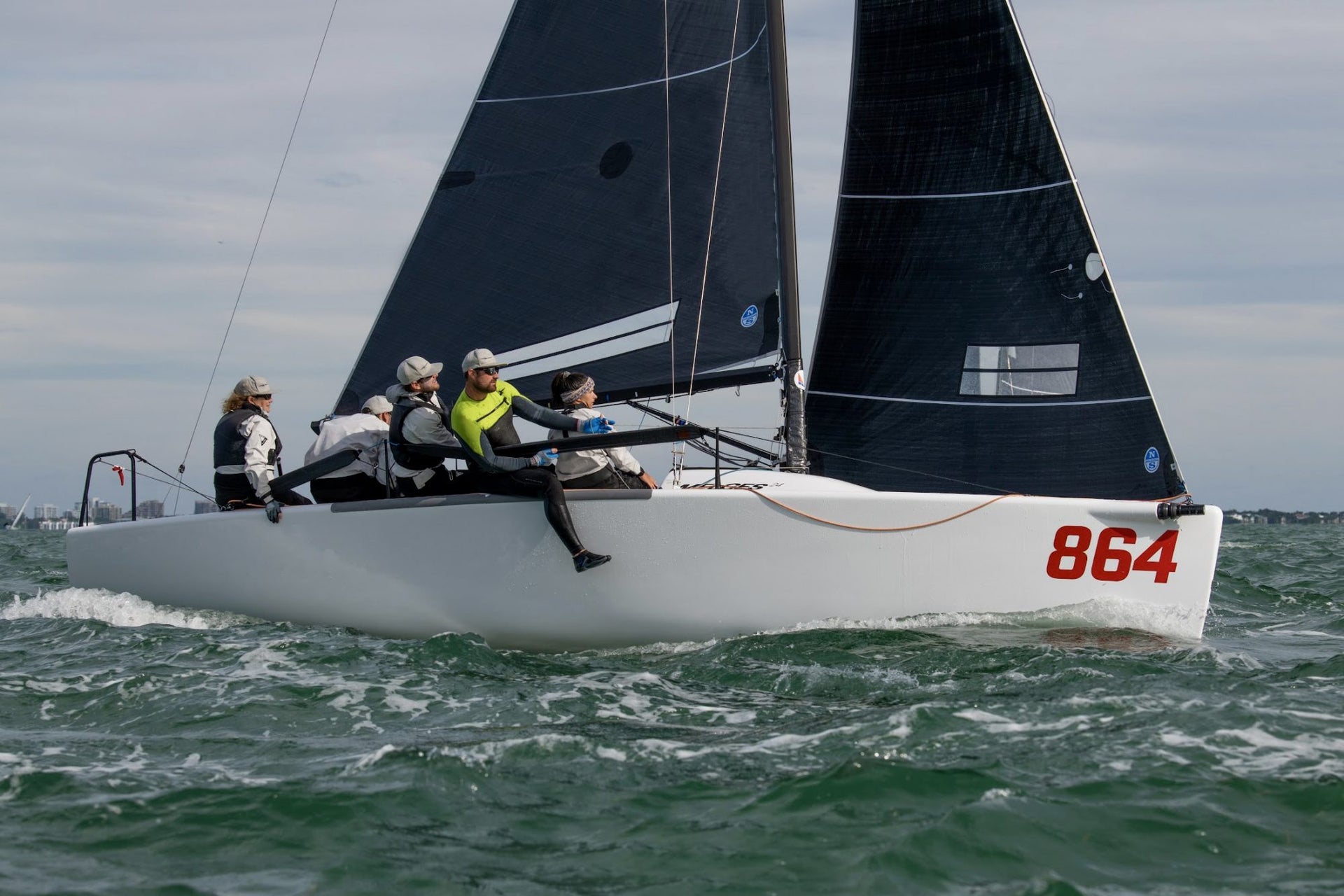
events
LAURA GRONDIN: WINNING IN MULTIPLE ONE DESIGN CLASSES
LAURA GRONDIN: WINNING IN MULTIPLE ONE DESIGN CLASSES
After A 20 Year Break From One Design Racing, This Executive Has Come Back Strong In Both The Melges 24 And J/70
📸 Katrina Zoë Norbom / Ocean Mountain Media
Laura Grondin grew up surrounded by sailors and raced with JJ Fetter at Yale, but it was only after twenty years of winning in the boardroom that she achieved success in the J/70 and Melges 24 fleets. “When I graduated from college in 1985, there really were not a lot of good opportunities to continue racing,” she says. So instead she threw herself into running a company and raising a family. It was only after a move to Groton, Connecticut, that she returned to the sport, first as crew for local fleet members. Then “I bought a twenty-four foot wooden boat , and we had some pretty disastrous races in the beginning. But I had this old book from my mother about how to tune and race an old wooden boat, so finally we got to the point where we won the fleet three years in a row.”
Her next purchase was a Melges 32, which she admits is not exactly an intuitive step from an old wooden classic. “It was a trial by fire for sure, and we mostly raced PHRF. At the same time, we had a growing fleet of Melges 24s in Fishers Island Sound, so we decided to buy one. And that really got us into fleet racing.” Though she makes it sound like those early days were a lifetime ago, the Melges 24 purchase was only about six years ago.
Laura had already volunteered to be the Melges 24 class treasurer when she learned that the international chair was leaving. As president of Virginia Industries, she understands what it takes to be a leader. “I’m one of these people … if I’m not sure who’s gonna be the new chair, I’d just as soon be the new chair!” So she got herself elected—and then, thanks to COVID, her first leadership act was to cancel the 2020 Melges 24 World Championship—”like three times; cancel, reschedule, cancel, just like everybody else.” The 2022 Worlds will be the first the class has held since 2019.
It was during this trying time that Mike Buckley introduced her to Taylor Canfield. “I guess you might say the rest is history,” she laughs, “because he and I seemed to work pretty well together on the boat.” In January 2021, the team started sailing the J/70 as prep for the 2021 Melges 24 Worlds. ”We were looking for more time starting, more mark roundings, all the things that are harder to get in smaller fleets,” she explains. “And there’s only so many events on the schedule. So that’s how we ended up on a J/70.” Less than a year later, the team finished third at the J/70 Worlds in Los Angeles, California.
2021 J/70 World Championships
“North Sails has been incredibly supportive,” she says. “John Bowden has come sailing with us, and anytime we have a question or concern or comment or anything else, he and North have been there.”
Asked about the differences between the J/70 and the Melges 24, Laura smiles. “I try to pretend that they’re not different, right? But I do need about a day switching back and forth. That first practice day, I might feel a little uncomfortable.” The transition from Melges 24 to J/70 is easier than the reverse, she continues, “because on the 70 I don’t touch the main at all. On the Melges 24, I have to take a hand in trimming the main. I do focus first on the driving; I have my little visual loop of telltales, water, wind and instruments.”
Running a business taught her the value of delegating, and she says one major reason for all of her racing successes is the team she’s built around her. Canfield is onboard, Buckley joined the team for the J/70 Worlds, and Scott Ewing was the fourth for their podium finish. Rich Peale came along with the first Melges 24 she bought, and “he’s been with us ever since; he’s a Corinthian, with a full-time engineering job. Cole Brauer has also been a part of the Melges 24 team consistently across events. It’s incredibly helpful to have a consistent team across the two boats.”
The team became early adopters of 3Di on the Melges 24, though Laura says she’s still getting used to what she calls “the black sails. But I figured we had to try them; we needed to not give that competitive advantage away.”
Asked to compare the 3Di inventory to the paneled inventory, Laura says the groove is a little narrower with 3Di, which makes them less forgiving. “There’s a theory that the paneled sails are better in light air, and the black sails are better in heavier air. But timing is everything; I’ve done more driving in the last year than I’ve done maybe in my entire life! So I’m better than I was a year ago. I was finally ready for the challenge.”
North Sails expert John Bowden says Laura’s team has been a big help with the development of 3Di. “When we first put 3Di on smaller boats like the Melges 24, the sails were too strong; they needed to be more dynamic. Through a lot of hard work with the team, we’ve been able to make them more forgiving. And now we’re seeing more success with them in lighter air. But ultimately, it’s important that people race with what they’re comfortable with. Laura’s got to look at the jib all day, and the difference in speed is not going to overcome the difference in her comfortability. She’s done a fantastic job of working with our product and helping us move forward.”
Laura’s team started out the winter season by winning regattas in both the Melges 24 (the first event of the Bacardi Cup Invitational) and the J/70 (DIYC Winter Series #2). Back in the Melges 24 again, she finished third at the Southernmost Regatta. Looking ahead, both the Melges 24 Worlds in May and the J/70 Worlds in October are on the calendar, along with several practice days and a few smaller regattas. “We’re also planning to do a couple of IC37 events,” she adds. “My husband does all our logistics and scheduling.”
Asked about her learning process, Laura says she carries “a little notebook” where she writes down a few things each day.
“Before we start up again, I look at my notes; what I find is that certain notes already have become ingrained. But there’s always one or two things in my head that I just did not do well at the last event. Taylor is a great tactician, but in his heart he’s a driver. So he is very quick with me if he’s unhappy with a maneuver; if we’re practicing, he’ll show me how to do things right. It’s like having an onboard coach, and it is really helpful. I don’t know that all tacticians do that; I told another skipper last week that he’s got somebody on his boat who knows how to drive—so if you’re struggling with that, let them help you! Taylor can’t tell me everything. And the less he has to coach me on my job, the more he can do as a tactician.”
“I’ve been leading in the business world for more than twenty years,” she says. “So I understand what it means to have people who take pride in themselves and in their work. North has been there for us, and so has my team.”
📸 Rodrigo Fernandez / AndesVisual
📸 Christopher Howell
READ MORE
READ MORE
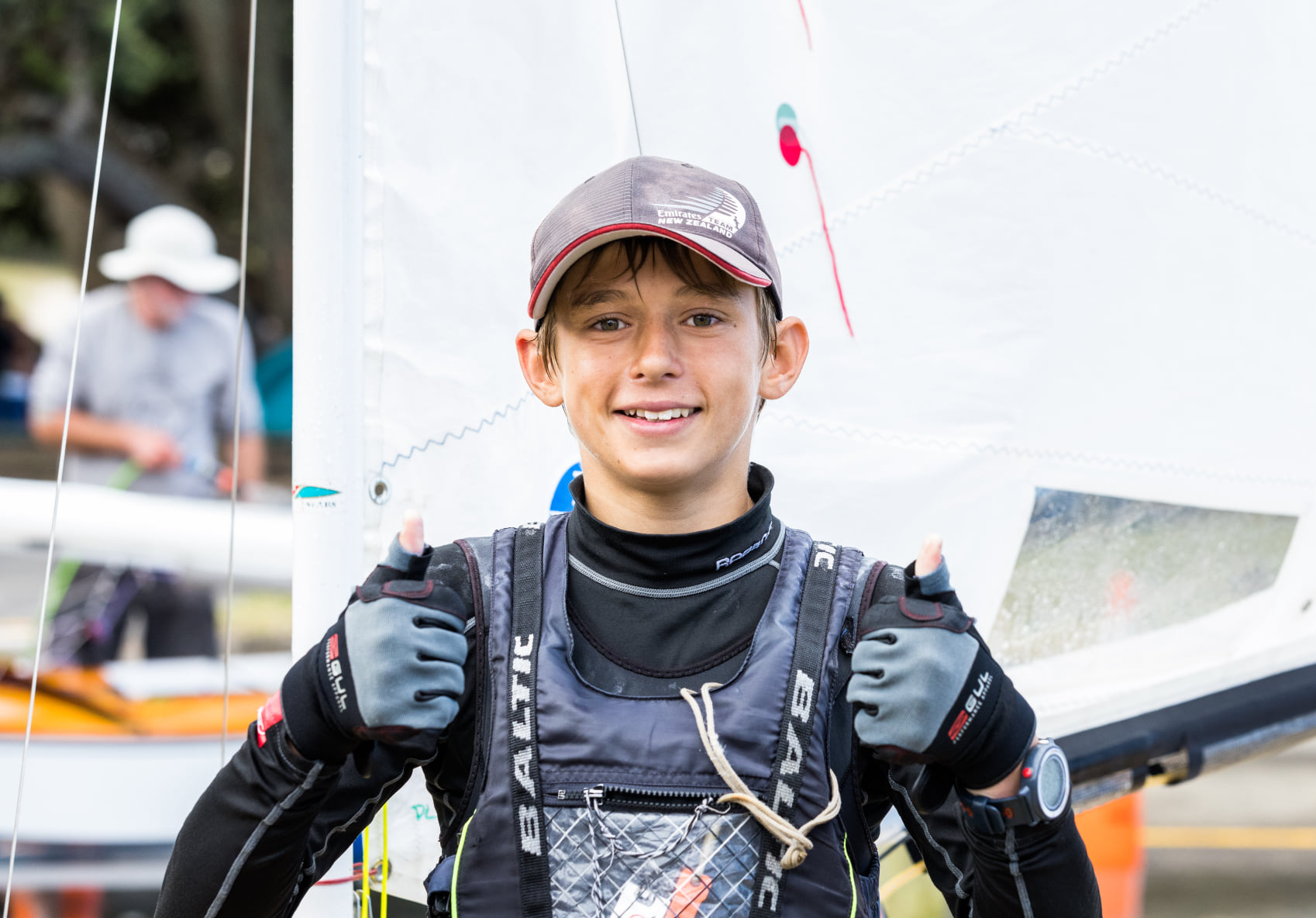
events
NORTH SHORE P CLASS SAILOR BLAKE MCKINNON WINS TANNER CUP
NORTH SHORE P CLASS SAILOR BLAKE MCKINNON WINS TANNER CUP
2022 Tanner Cup Champion Used North Sails F1 Sail
North Shore P Class sailor Blake McKinnon drew on the ‘secret weapon’ used by 2020 Tanner and Tauranga Cup winner Tim Howse to carve his own name on the historic silverware, when he won the regional championship Tanner Cup in January. McKinnon, sailing Head First, used the North Sails-designed and developed F1sail, which has a radial clew and a cross-cut top. North Sails One Design expert Derek Scott says the radial design helps to spread the load out of the clew, and allows the top of the sail to twist off. 2019 Tanner Cup winner Blake Hinsley also used an earlier iteration of the F1 sail in his victory. The six-race 2022 series was held over two days at Auckland’s Murrays Bay Sailing Club, McKinnon’s home waters. On both days sailors had to contend with tough conditions- light, shifty south-southeasterly breeze and big tides—a contrast to the windy conditions in which Howse won the regatta two years ago. Representing North Harbour, McKinnon sailed a consistent series, with his lowest placing a seventh on the first day. Lying fifth overall, he then put the pressure on the series leaders on the second day by finishing with a second place and two bullets to take the cup.
Eighteen sailors from around the country represented their regions at the event, which was followed by the open Tauranga Cup event, in which McKinnon finished sixth overall. In this event, Tessa Clinton finished second female sailor, also using the F1 sail. Scott — a former winner of the Tanner Cup — says the North team has made some minor modifications to the F1 sail since Howse used it to win the past events, especially to the luff curve, to make the sail a better fit to the range of masts used in the class.
“We had been finding some quite big variances in the masts, so we have been tailoring each sail to the specific boat,” Scott says. “After testing each mast to see how stiff or soft it is, we create a custom luff curve for each sail, so it fits perfectly.”
📸 Live Sail Die
READ MORE
READ MORE
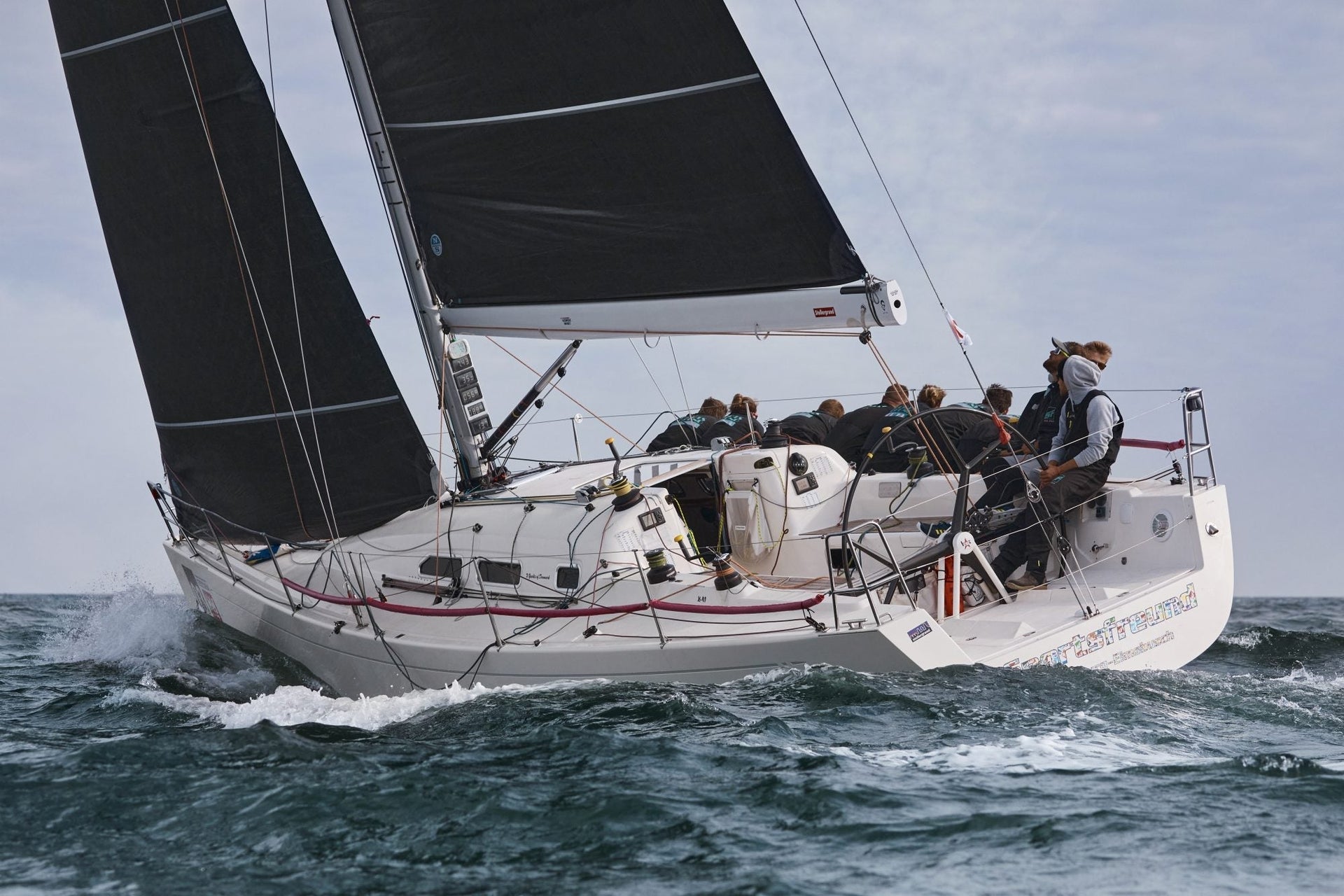
events
ORC WORLD CHAMPIONSHIP 2023: PREPARATIONS START NOW
ORC WORLD CHAMPIONSHIP 2023: PREPARATIONS START NOW
Sights Set on Kiel, Germany
📸 Felix Diemer
The news that the Offshore Racing Council, ORC World Championship is coming to Kiel again in 2023 has triggered a real hype throughout the worldwide fleet of ORC sailors. For the local fleet in Germany, this will mark the season highlight of the next two years and after two seasons of events being influenced by the pandemic, there are hopeful signs for a sporty and ambitious summer of sailing. If you want to be there in 2023, ideally, preparations should start now. Those who start preparing in good time not only reduce the risk of nasty surprises, but also go into the World Championship with greater composure.
Someone who knows the ORC scene like the back of his hand is North Sails expert and sailmaker Bertil Balser. As a native of Frankfurt, Germany, Bertil has been sailing since he could walk and took his first steps in the world of offshore racing in 1996, when ORC was still called IMS (International Measurement System). Several National and International successes later, as well as one or the other rule loophole (keyword: “Berta”), Bertil is not only an impressive sailor, but also the ideal contact for all questions about ORC sailing.
Reason enough, then, for us to quiz him with a series of questions in the run up to the World Championship, starting off with a few basic questions about ORC sailing:
How well do you know the ORC formula?
As there are countless measures that add to the overall rating, you can basically change and adjust virtually anything concerning the boat’s performance. This makes the ORC system both very technical but also somehow intuitive. The question here is: Which screw is worth turning and which one should you avoid touching in the first place? After more than 15 years in the ORC circuit, I can judge quite well what makes sense and what doesn’t.
What is key for a successful ORC campaign?
Good material and a clean underwater hull are one thing. But the other thing is having a crew that not only harmonizes, but also really trusts and works together.
I recommend North Sails 3Di RAW 780 for your upwind inventory, and our Superkote Spinnaker styles for your downwind inventory. We will be sure to find your weapon of choice amongst our product range.
📸 Felix Diemer
When should preparations for the 2023 World Championship begin?
Such a campaign always goes through phases of varying intensity and each team has its own dynamic. However, no matter how you choose to run your campaign, the following still applies: time is ticking.
If you want to be there in Kiel in 2023, you should start preparing today. The more time you have, the easier it will be to get material and crew into a competitive mode. As always, the devil is in the details.
What advice would you give to crews with limited previous experience?
Be sure to get started! Every project starts with the first step. What many do not know is that often the step from ambitious Wednesday sailing into the ORC world is much smaller than it might look from the outside.
How to contact you with questions?
To get in touch with Bertil directly, please email him at bertil.balser@northsails.com, or click here to talk with an expert at your local loft. We look forward to hearing from you and our team of experts will be happy to help you get closer to achieving your goal at the 2023 ORC World Championships.
What is your greatest personal success?
That is hard to say. The four victories at the IDM See – most recently with the X-41 Sportsfreund – were certainly just as much a highlight as various podium positions at World and European Championships. When “my” team became European Champions in 2019, I was involved with fatherly joy on the home front, so a gold medal is still missing. One more reason to attack again in 2023!
TALK TO AN EXPERT
READ MORE
READ MORE
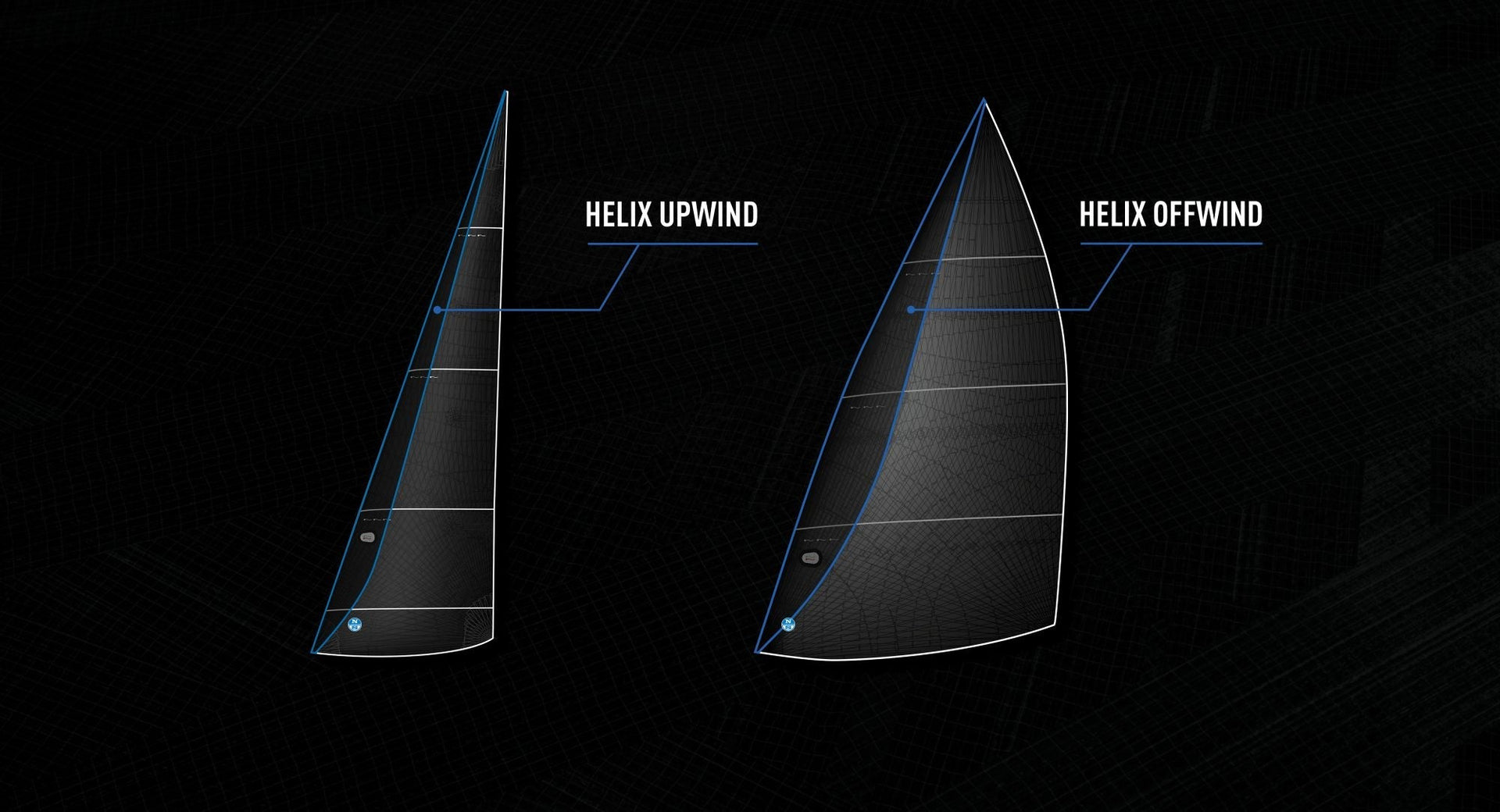
events
NORTH SAILS DOUBLES DOWN WITH LEADING-EDGE INNOVATION
Helix Now Standard In All North Code Sails
World leader in sailmaking technology, North Sails constantly pushes the boundaries of performance. 2022 is a landmark year for the brand’s Helix Structured Luff technology, as it is now announcing that the revolutionary design philosophy has been made standard on all North racing Code sails and the Helix Furling Gennaker for cruising, effective immediately. Furthermore, North Sails has moved to expand its range to include Helix as an upgrade for headsails.
In its relatively short life to date, the impact of Helix has been a revelation. As of January 2022, North Sails has sold over two thousand Helix Code Sails, with incredible results surfacing from across classes, from Grand Prix teams to weekend sailors. With these two bold developments, North Sails intends to extend the legacy of this game-changing innovation, which it envisions becoming a flagship design philosophy, synonymous with the North Sails name itself.
The Evolution of Helix
Once limited to offshore Grand Prix, Helix Code sails have quickly become the go-to tool for improving aerodynamics and increasing range. With its unique DNA-like structured luff, Helix has given sailors another gear offwind, enhancing power potential by optimizing load sharing, for a proactive, positive sail shape.
A defining moment in its development, the 36th America’s Cup saw Helix applied to upwind sails for the first time (and to great effect), with Emirates Team New Zealand, Luna Rossa Prada Pirelli, and INEOS Team UK displaying unprecedented speed and control upwind.
“Today Helix is more than a single feature,” explains JB Braun, North Sails Director of Design and Engineering. “It’s a total design philosophy that radically changes how sails are engineered, built, and flown. Guided by a bespoke, data-driven process, North Sails designers engineer each sail’s structure to improve its aerodynamics.”
The Benefits
In most cases, the result of this process is a reduction in load running through your equipment, having the obvious immediate effect of minimizing wear and tear. However, the primary benefit, in terms of performance and practicality, of both Helix Upwind and Offwind is a versatile inventory that carries across a wide range, while also reducing the number of sails required.
Helix Offwind
Helix Offwind can reduce the overall load on any free-flying sail, whether 3Di or panel construction, for a more forward projecting sail and increased range. Featuring a stretch-resistant structured luff and purpose-built high torque Luff Cord exclusively available to North Sails from its sister company Future Fibres, Helix Offwind sails deliver enhanced stability, improved luff projection, and reduced head and tack loads.
Helix Upwind
Exclusive to North 3Di sails, Helix Upwind harnesses the sail’s composite structure in a new way to dramatically improve camber control. With its Dynamic Structured Luff, Helix Upwind defies conventional design limitations. Engineered for Active Camber Control™️, with Helix you can adjust the shape and depth of the entire sail, not just the luff – controlling power on the fly using a Cunningham or halyard for a wider range of use.
Helix Quick Guide
Helix Offwind and Upwind sails are available for order now. Get in touch with your local North Sails loft for summer delivery.
REQUEST A QUOTE TALK TO AN EXPERT MORE ON HELIX
READ MORE
READ MORE
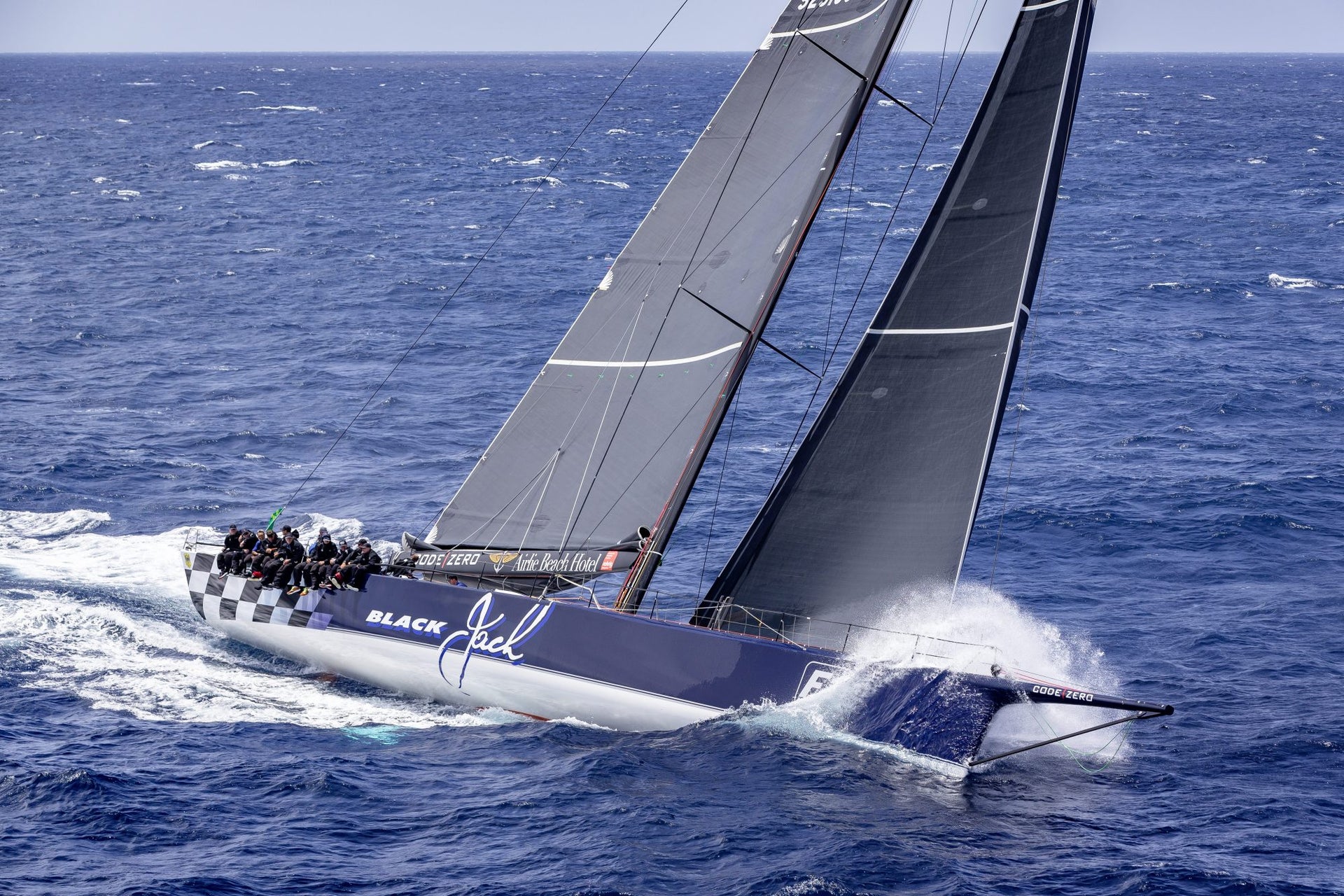
events
BLACK JACK'S WINNING COMBINATION
BLACK JACK’S WINNING COMBINATION
Sail Designer Magnus Doole and Black Jack Skipper Mark Bradford Explain The Steps That Lead To Owner Peter Harburg’s First Win In “The Great Race.”
📸 Andrea Fancolini / Rolex
When Black Jack’s mast fell over the side during a record-setting run last April, the team quickly decided to turn their devastating loss into a performance upgrade. That decision paid off when Peter Harburg’s team claimed line honors in the 76th edition of the Rolex Sydney Hobart Yacht Race.
The RP100 had always struggled upwind against Christin Beck’s wider LawConnect, a Juan-K design. So we wanted to understand how an experienced team of sailors and North Sails design engineers overcame this boat’s known weak point. The answer? A new aero package that took advantage of Helix’s load-sharing technology.
Magnus Doole, the team’s New Zealand-based sail designer, says that the brief for Black Jack‘s new inventory called for more than simply replacing the old sails and rig. While the majority of Black Jack’s sails had minimal hours on them due to canceled regattas in 2020, the Helix design philosophy had evolved significantly.
North Sails Australia Managing Director Mark Bradford is Black Jack’s skipper. “We knew we wanted all our sails to focus around Helix’s load sharing capabilities,” Bradford says. “It was then a question of figuring out the target ratio and trade-off of luff load vs. stay load. Whether you’re incorporating Helix onto a new build or upgrading your inventory, it’s all about the balance between reliability, performance, and sail stability. North Sails has an arsenal of design tools and a deep bench of talent like Magnus. It was really an easy solution to come up with for our team.”
Doole and Southern Spars’ Jarrad Wallace modeled a new aero package with the North Design Suite that optimized the combination of load-sharing Helix sails, a new mast, and Future Fibres rigging. “We set out to deliver a more efficient package using recent advances in sail structures,” Doole explains. “The boat has always had an Achilles heel. She is very skinny and low drag, but has a lower righting moment than her competitors. Upwind in a breeze has been her downfall.”
“Magnus used Membrain to run various upwind, reaching and running sail configuration simulations,” Bradford says. “We then handed the sail designs, structural information, pressure files, and load data to Jarrad and the Southern team who ran rig-specific analysis along with the North software.”
Together, the Black Jack crew has sailed over 200 Sydney- Hobarts, so their practical onboard experience was factored in as well. Bradford, Black Jack’s Sailing Master and mainsail trimmer, Bruce Clark, and North Expert Vaughn Prentice all provided input, along with Alex Nolan, Will McCarthy, Ryan Godfrey.
“Thanks to Helix,” Doole says, “we netted a 10% savings in the rig and rigging while making significant gains in stiffness. With load sharing comes less mast compression, so we turned part of that gain into a lighter and stiffer mast. If you were doing all of this on an existing mast, it would be like creating more stiffness overnight for the same rig.”
This kind of optimization has been done with many other projects, he adds. “North Sails can easily pass this type of experience on to boats of all sizes and shapes, whether you have a new mast on order or will use an existing mast and rigging package.”
The first big offshore test for Black Jack’s new aero package was the grueling race to Hobart—so winning line honors was an important validation. Besides adding inherent stability to a skinny boat by reducing weight aloft, the new Helix sails adapted well to the wide range of upwind sailing conditions along the 628-mile course. More range from each sail allows boats like Black Jack to reduce the number of sail changes, which in turn reduced crew fatigue.
“The key advantage of Helix is range,” says Bradford. “It directly contributes to reduced sail changes and a more optimized sail shape through a much wider range of conditions. You can significantly change sail shape when the sails get out of range to put them back in range. The benefit is carrying fewer sails, less weight, fewer sail changes, reduced downtime, increased performance.
“By taking advantage of Helix design philosophy and reducing weight in our sail structures,” he concludes, “we managed to hold off a much faster upwind boat when it was windy. Then when the conditions turned in our favor, we could extend. Black Jack is now a far better all-around boat, and this has mostly come from the changes we’ve made above the deck.”
Advanced mathematical modeling complements the North Sails innovative spirit. In Episode 1 of the new North Sails podcast, we talk design, simulation, and the bespoke North Design Suite with three generations of sail engineers. Michael Richelson, Marco Capitani, and Brodt Taylor all bring their unique skills to the table and help create cutting-edge products that give North Sails its signature competitive edge.
READ MORE
READ MORE
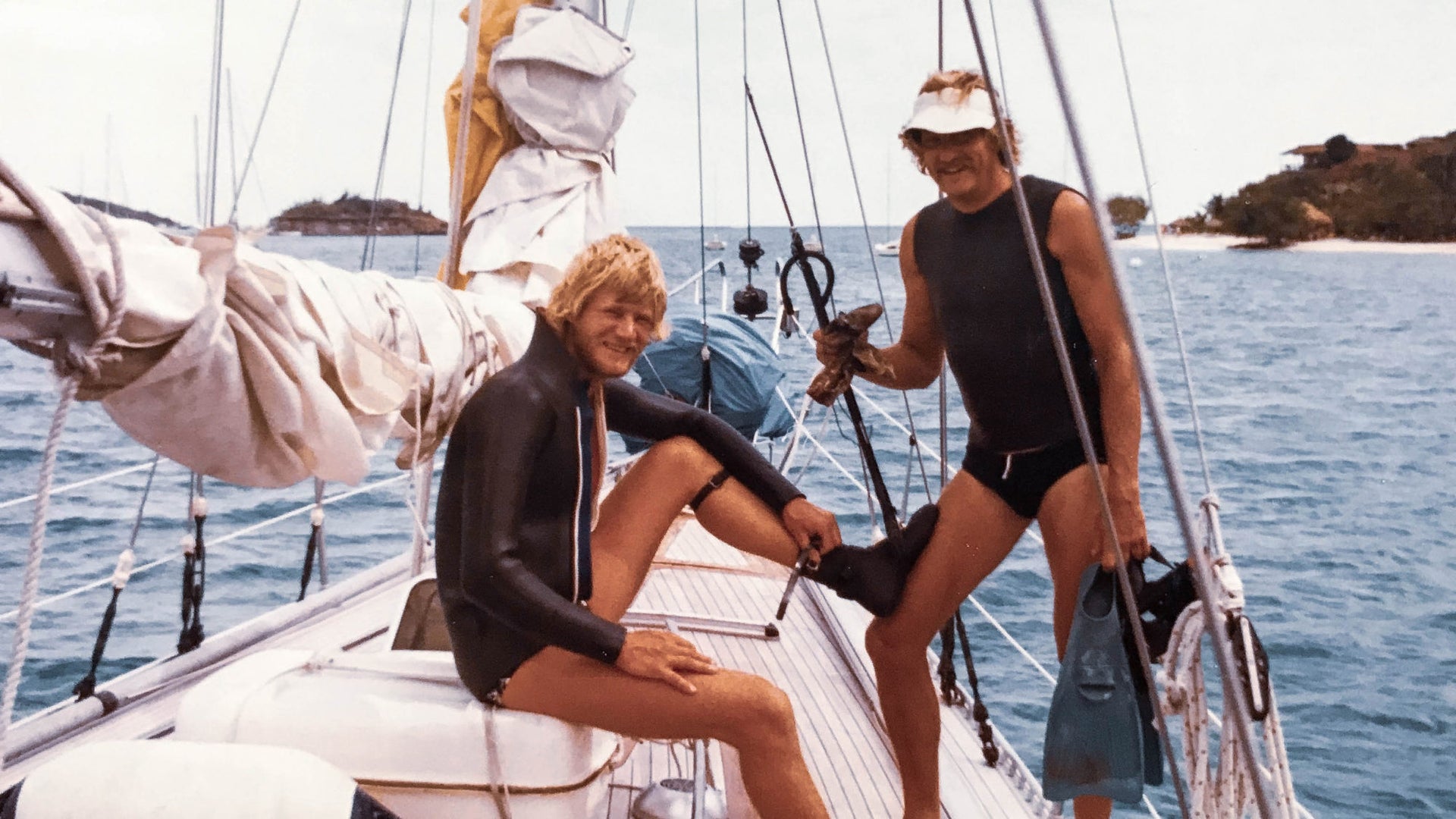
events
THE STORY OF ARGO: PART I
THE STORY OF ARGO: PART I
An Opal 46, Has Been Shared by Three Generations of the Ravelius Family
After years of sailing with his father on board his beloved schooner, Argo, based in Sweden, John Ingvar Ravelius has taken part ownership of the boat, alongside his brother and his father and has been updating and refitting her with the dream to create memories with his young daughter and pass the tradition along. Ravelius shares the first chapter of his several part series, about how a sailboat, and the work that goes along with it, is bringing three generations together.
In 1974, my father, Ingvar Ravelius was a young 24-year-old walking around the Stockholm boat expo with his father, in Sweden, dreaming of sailing around the world on a boat of his own.
Ingvar had plenty of experience on smaller sailboats, but his dream was sailing around the world and he wanted something bigger and more reliable. As the pair wandered through the expo, they bumped into a friend, who knew of a boat being built by a local, revered boat builder called an Opal 46. This hull would be the first of only six ever built.
A couple of weeks later, Ingvar contacted the designer of the Opal 46 and visited the marina where this boat was being built with his father.
After seeing the work underway, it didn’t take much time for my father to decide that this is THE boat he wanted to sail around the world on, pick up his wallet and make a down payment to rent the molds for the hull, despite his father’s protest. He didn’t think that 24-year-old Ingvar was going to be able to build such a boat without any experience.
My father answered, “this is the boat that I want, I don’t know how to build it yet, but I am going to find out.”
The building of Argo began, Ingvar took on the messy and time-consuming work of hand fiberglassing the hull. Adding layer after layer, thinking that when he is on the ocean, the boat should be able to withstand heavy impacts without breaking. He made the thickest part of the hull 12 centimeters thick.
After the fiberglass set, he continued the work on the build outside his house in Sollentuna. My father’s neighbors did not know that they were going to live next to this build for the next six years.
Often, Ingvar would leave his home building site, and visit the marina where the first Opal 46 was being built, he asked them how they did things and took measurements, wrote them down on a notepad and went home and did the same thing the professional boatbuilders were doing.
A couple of years into the build, my father and the owner of the first Opal 46, which was christened and seaworthy, became good friends and invited him to sail across the Atlantic Ocean to the Caribbean.
In 1980 Ingvar took a break from building Argo to do a transatlantic crossing on his boat’s twin. On this trip, he learned a lot about how the Opal 46 handled the sea but also discovered how he could improve things on Argo.
One of the things that he changed from the original was the dining table in the saloon, they had trouble using this table while sailing, so the table in Argo was built to balance so that it is always horizontal when the boat is heeled.
One and a half years later, in 1982 Ingvar returned from adventures sailing and launched Argo for the very first time.
Seven long years after he hatched the idea at the expo, Ingvar’s dream was a reality. His friends and family came with him on the first test drive and everybody was celebrating. On Argo’s first voyage, they almost crashed, because of a backward connection on the hydraulic steering system, but she was sturdy, sound, and ready for adventure.
Later the same year, Argo and her crew participated in the famous race around the island Gotland named “Gotland runt” and a Swedish sailing magazine took a picture of Argo during the race, my father was very proud that they used the picture of his work the same year he was finished.
Ingvar is a very special man, and now that Argo is my project too, I want the details to be perfect. My father and I began refitting and converting Argo to sloop together in the past few years, giving her new North Sails and new life. Many times, when I was a child he showed me a special metal file and said; “I built Argo with this metal file”. When I was younger, I didn’t believe him, but today after I have worked a lot with him refitting Argo, I understand that he really did. He built Argo with his hands and a metal file, He put in every screw with a screwdriver, and Argo has thousands of screws. All the teak on Argo, both the deck and the interior is made from raw planks sawed outside his house in the suburbs of Stockholm.
Stay tuned for the next installment of Argo’s story, where Ravelius shares more stories from cruising with his parents aboard Argo, and how they sailed around the Mediterranean with a 1-year-old child.
READ MORE
READ MORE
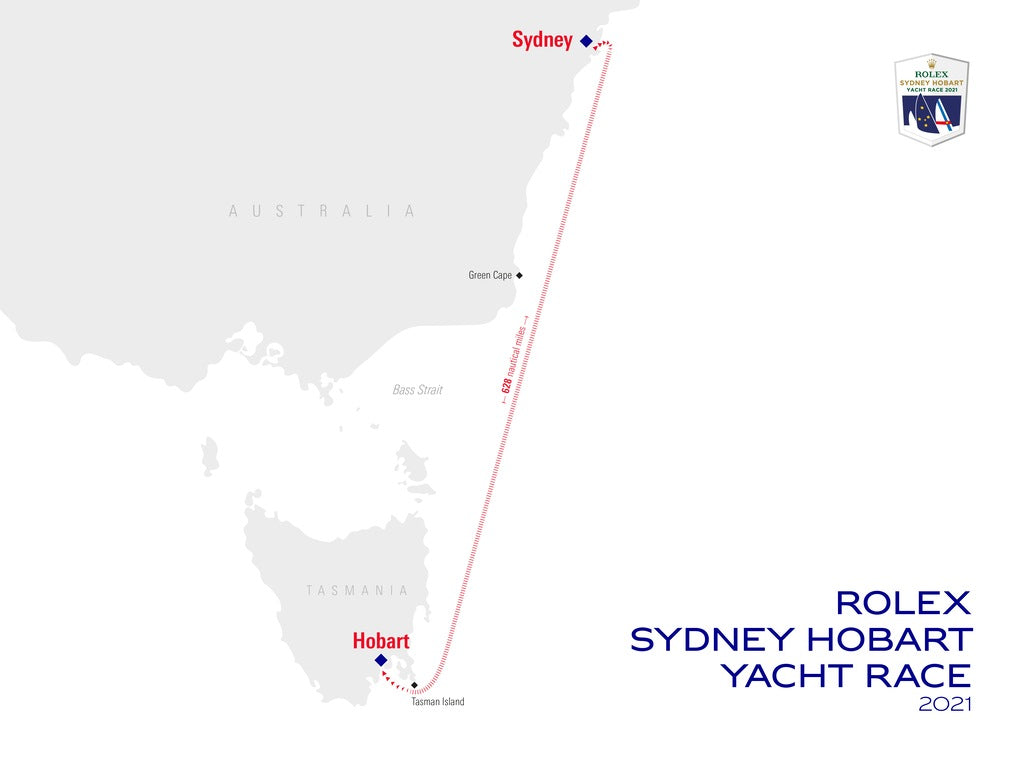
events
ROLEX SYDNEY HOBART YACHT RACE 2021: HOW TO FOLLOW
ROLEX SYDNEY HOBART RACE 2021: HOW TO WATCH THE GREAT RACE
North Sails Has You Covered For the 76th Edition
The Rolex Sydney Hobart Yacht Race is a staple on the Australian sailing calendar, and a much-anticipated event for sailing fans around the world. Each Boxing Day, hundreds of sailors, watched by thousands of shoreside spectators (pre-Covid of course), depart Sydney Harbour for the trek to Hobart.
This 628nm offshore classic is renowned for being one of the most difficult races in sailing. Throughout the years there have been both moments of triumph and tragedy. Our sport’s highest-profile teams sign up for the Sydney-Hobart with hopes of claiming line honors and, if the weather is right, smashing course records. Amongst the fleet there is a variety of boats- comprised of unique sailor skillsets and crews made up of professional sailors, family members, and friends. Take for example North Sails apprentice Manny Scott and Sail Expert Aaron Cole. 2021 marks Manny’s third Rolex Sydney Hobart Race, and he’s sailing with his father— a 15-time race veteran. Aaron Cole is participating in this year’s race for the nineteenth (!) time alongside his wife Jade, who is celebrating her milestone 10th race. They say this race is a family tradition for many participants, and we’re proud to have been onboard for these memories.
North Sails has a storied history with the Rolex Sydney Hobart Yacht Race. Our Australian-based teams have collectively sailed in hundreds of races, while North clients have consistently found themselves at the top of leaderboards over the years.
With the 2020 race canceled, the year’s fleet is chomping at the bit to get the 76th edition of “The Great Race” underway. Here is what’s in store and how you can follow along:
Weather Forecast:
Gabrielle Woodhouse, forecaster from the NSW Bureau of Meteorology, delivered the race’s long-range weather forecast. The fleet should be ready for southerlies and possible thunderstorms early after the Boxing Day start, and a series of transitions afterwards, which all but erase expectations of a record-breaking race.
Read more from the official pre-start press conference on the Rolex Sydney Hobart website.
If you’re in Sydney…
Spectator boats positioned in the eastern channel can watch the race start, then can follow the fleet down the harbour to the iconic Sydney Heads before heading out to sea. Once underway, the fleet will move quickly, so if you want to see the leaders sail through the Heads, it’s recommended to get a ways down the harbour towards Middle Head before the start. At the Heads, make sure to keep well clear of the rounding marks.
If you only plan on watching the start, head to the western side of the harbour. Good vantage points for spectator boats include: Taylors Bay, Chowder Bay, Obelisk Bay and North Head on the west and Rose Bay, Watsons Bay, Camp Cove and South Head on the east.
For our global audience watching from home:
Watch a webcast of the live broadcast on the homepage of the Rolex Sydney Hobart Yacht Race website.
If you miss the live webcast, a replay of the start program will be available on the website as well.
Included on the website is the complete list of yachts entered in the 2021 edition of the race.
You can also view past race data including past results, historical reports, and statistical information; designers of line and overall winners; and profiles of some of the race luminaries over the years.
Follow along on Social:
Official race social channels will keep followers updated start through finish. There will be a live stream of the start (which can be viewed after the fact), as well as race updates, Line Honors announcements, an Overall Winner Declaration, as well as a Regatta Recap.
Rolex Sydney Hobart @rshyr @RolexSydneyHobart
North Sails @north_sails @NorthSailsWorldwide
Track the fleet:
Track the 2021 fleet from start to finish by utilizing the link for the Tracker below. Yacht Tracker uses a specially designed tool that calculates the predicted results for each and every boat in the fleet, so you can see how each boat is performing. Each competing boat is given a tracker that will obtain a position using the GPS satellite network and then transmit that position back to HQ using the Iridium satellite network.
Positions will be updated every 10 minutes
TRACKER
Play along:
Cruising Yacht Club of Australia has teamed up with Virtual Regatta to provide the Rolex Sydney Hobart Race Game, allowing virtual skippers to race the same route as the boats that will be participating in the Rolex Sydney Hobart. Sign- up and join the Race by clicking the link below.
JOIN VIRTUAL REGATTA
📸 Carlo Borlenghi / Rolex
READ MORE
READ MORE
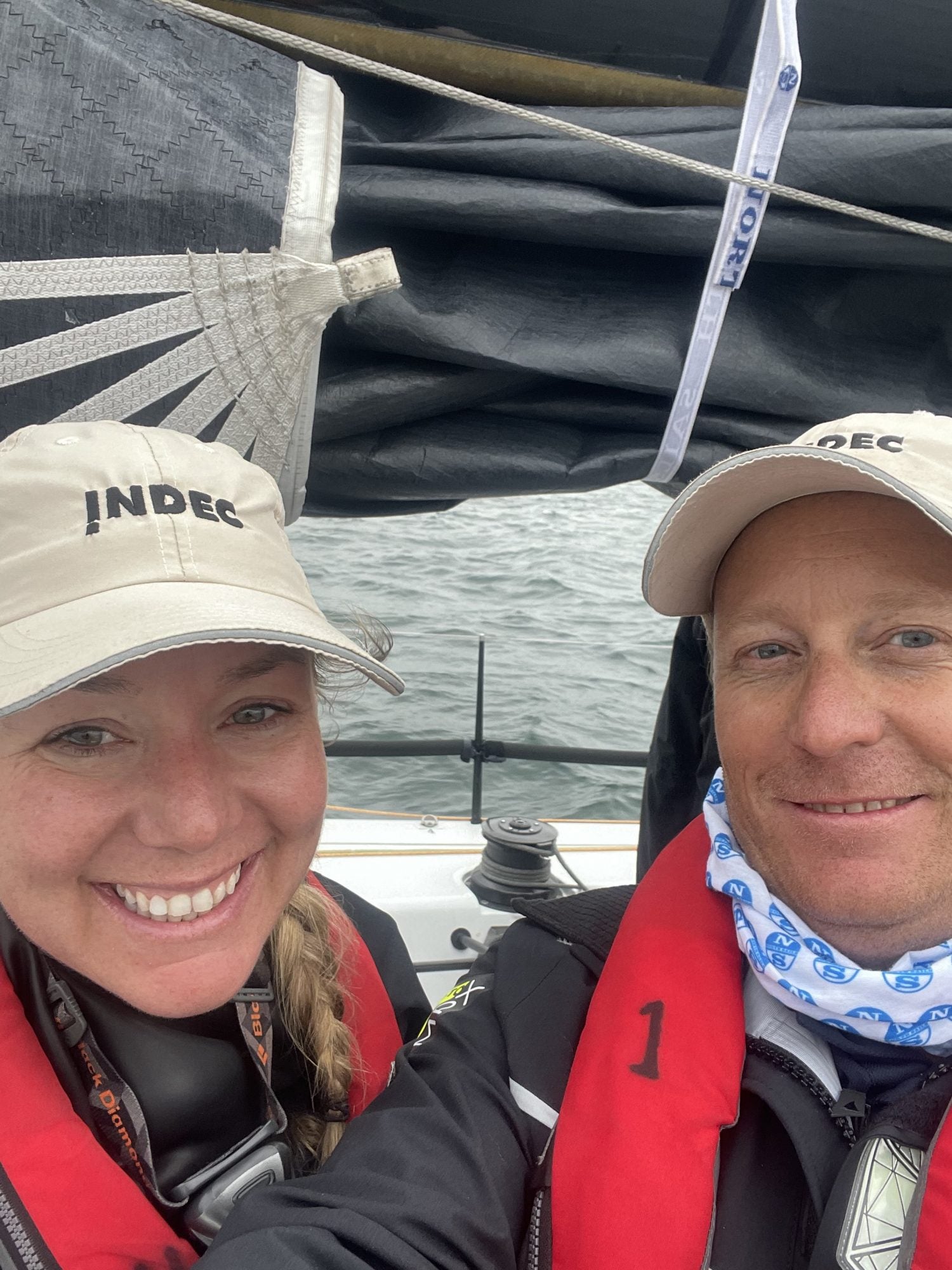
events
LETTER TO MY YOUNGER SELF: AARON COLE
LETTER TO MY YOUNGER SELF
It’s More Than Results For 19x Sydney Hobart Race Veteran Aaron Cole
The sailors and designers in the world of North Sails are some of the most inspiring people on the water, and we’re hoping to share more of their story with you. “Letter to my younger self” is a series told from our North Sails ambassadors. In each article we bring to life their advice and personal journeys centered around the question: if your “now-self” could give your “younger self” advice, what would it be?
Dear 17-Year-Old Aaron,
It’s safe to say that I’m quite proud of the person you’ve become. There are many reasons why, but one that stands out is in 2021, you’ll be gearing up to sail your 19th Sydney to Hobart. Yes, you read that right— 19! If you think it will be a rinse and repeat each year, you’re wrong; each race will be different. And trust me, after 18 races, no two have ever been the same. Getting to the start line of your nineteenth Sydney to Hobart will be an adventure and a half too, complete with stints with America’s Cup and Volvo Ocean Race teams as a sailmaker. And number 19 won’t be your average Sydney to Hobart either, it will also mark your amazing wife’s (Jade) tenth race. Jade is a real catch and a very good sailor. She’s so good on the boat and to do her tenth race together is pretty cool.
However, in order to get to the top, you have to be prepared for what’s coming. It will make you a better sailor—especially in “The Great Race.” Start taking advantage of situations now, and really aim to improve your long term vision. This will prove invaluable when you’re on the water and beginning to think about doing the race. In time, your life’s motto will become “when we’re sailing, you’re better off looking at it than looking for it.”
Veterans will tell you that you can never be too prepared to race in the Sydney to Hobart and they are right.
Now, I know it’s summer and I know it’s Christmas, but young Aaron, you really must do the best job you can looking after yourself in the lead up to the race. It’s a fun time of year, it’s busy, everybody’s sailing, and all sorts of stuff is going on, but make sure you leave a little bit in the tank so you can smash it during the race. In other words, make sure to get a bit of rest in the lead up to the race (which starts the day after Christmas lunch). Set yourself up right so you can really enjoy the challenge.
One piece of advice to live by in this race is from your future boss: Ross Lloyd. He said, “do what’s best for the boat.” It’s a good way to sail. We’re always sailing on different boats, in different situations and with different people. At the end of the day it’s about getting the best out of the boat with (or for) the owner. If you focus on that, everything else falls into place. You won’t have many obstacles otherwise. Make sure the boat’s sails are right and do everything you in your power to make that happen; whether it’s little recuts here or modifications there or replacement sails when needed. Then, make sure everybody looks after the equipment, including taking care of the sails.
The next twenty years will fly, so enjoy every moment—from the start to the finish. The result is important but it’s not everything. Stay inspired by the likes of Barney Walker; 2021 will be his 34th Sydney to Hobart! Over the years you’ll see him stay switched on, do a good job, put everything into the race and the boat, and keep pushing himself. His passion for the race is seriously inspiring (not to mention impressive).
Sail safe and enjoy your wife’s 10th race,
READ MORE
READ MORE
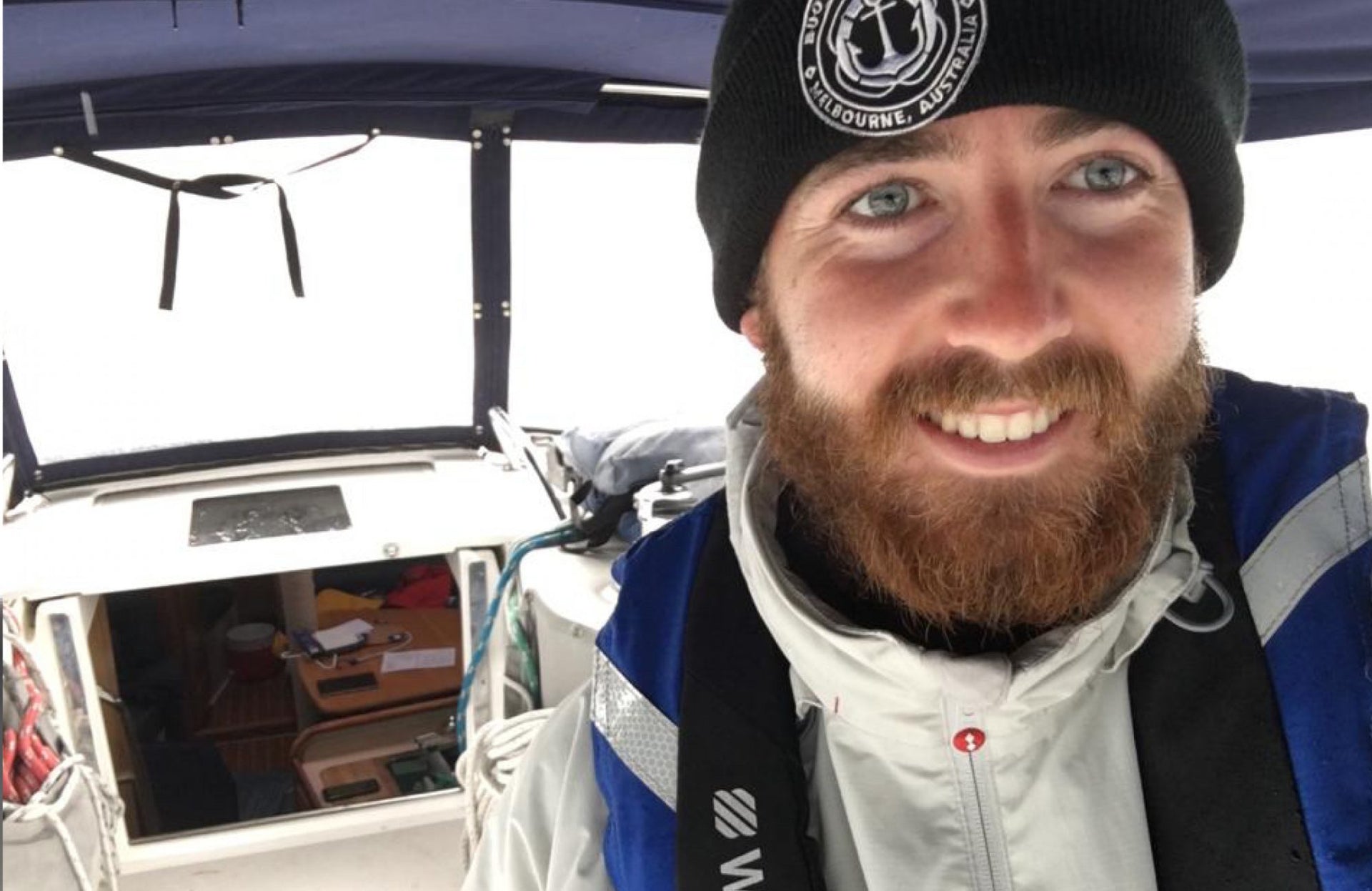
events
LETTER TO MY YOUNGER SELF: MANNY SCOTT
LETTER TO MY YOUNGER SELF
The Sydney Hobart Race Is a Family Affair for the Scotts
The sailors and designers in the world of North Sails are some of the most inspiring people on the water, and we’re hoping to share more of their story with you. “Letter to my younger self” is a series told from our North Sails ambassadors. In each article we bring to life their advice and personal journeys centered around the question: if your “now-self” could give your “younger self” advice, what would it be?
Dear Younger Manny,
I have so much I want to share with you in this letter. I feel like I’d make you (15 year old me) pretty damn stoked—but I’ll try to keep things short and sweet.
First off, don’t worry, you’ll get your chance at sailing in the Sydney to Hobart—just like dad. I know he’s got quite a few races on you, but you’ll eventually catch up, and, in the journey, you’re going to make him (and yourself) really proud. And, don’t worry, you’ll even get to sail a few with him.
Don’t fool yourself though, the Sydney to Hobart won’t be easy. In fact, the race will be quite miserable at times. You’ll be scared, frustrated, and wondering why in the world you’re doing the “Great Race”. The complete exhaustion you’ll face is overwhelming, but you need to push through because when you cross the finish line and pull into Hobart with hundreds of people cheering you in, congratulating you on the enormous accomplishment, the pride you’ll feel is indescribable. That experience alone is completely overwhelming.
Throughout your journey though, whatever you do, don’t forget your roots. Do not, under any circumstances, forget the Scott family motto.If you feel frustrated with something, take a moment, calm down, and do not give up. Just like dad said, that’s it: “Don’t let it beat you.”
You’re right to think about it every time you’re faced with a challenge (and believe me, you absolutely will!). Just relax a bit, roll with it, and take the opportunities you’re offered. Stay humble and let yourself make some mistakes—it’s the best way to learn.
Your love for sailing will not waver. Ever since your Boxing Day tradition, from when you were a little kid and you’d go down to the Yacht Club with dad to see him off the dock, you knew you wanted to race in the Sydney to Hobart. Remember when you used to draw pictures in kindergarten of what you wanted to be when you grew up? See if you can find them – there’s one picture of you and dad standing together on one of the boats he sailed the race. You knew then you wanted to be like dad when you grew up, although you also knew you wanted to make sailing a career, not just a hobby.
With that in mind, just do what you love. Over the years, your biggest obstacle might just be yourself. There’s always going to be that anxious voice in the back of your mind, trying to throw you off. You know the one: “Am I good enough? Do they think I’m actually good, or are they just saying it? Is that the truth?” Turn the voice down and really listen to the feedback you’re given. Take it on board as much as you can. You’re a perfectionist—but that’s a good thing, it will get you far (including an apprenticeship at North Sails).
Stay driven and thirsty for knowledge. Keep absorbing the information and stay curious. The boats, the sails, the rigging, and how it all works together to get you from one place to another is really cool and it will only get cooler and more fascinating. What will surprise you, is how connected we all are. Not just about sailing around the world, but there’s something that connects every single person on the planet in some way or another. The more you look for those connections to people and places the more you will find them, and that’s pretty incredible.
This year (2021—the year I’m writing this letter to you) will be your third race with dad, and your third race overall. You will be sailing on King Billy. To experience it all with dad standing next to you is pretty cool. This will also be his 15th race so make sure you celebrate extra together. You’re a lucky kid—but you already know that.
Sail smart and sail safe,
📸 Andrea Francolini Photography
READ MORE
READ MORE
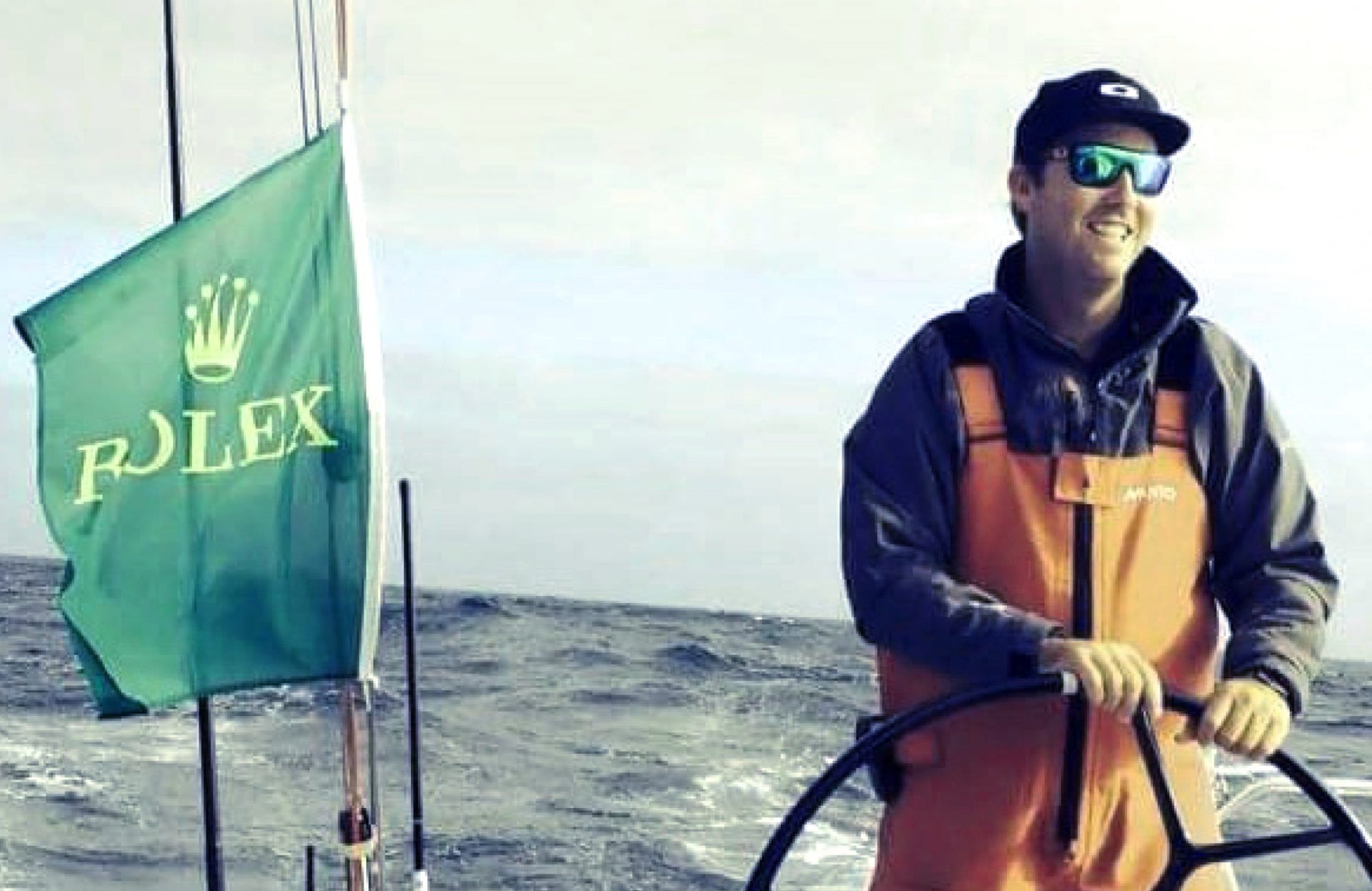
events
LETTER TO MY YOUNGER SELF: KYLE DODDS
LETTER TO MY YOUNGER SELF
Kyle Dodds – Fostering The Need To Push Himself To The Next Level
The sailors and designers in the world of North Sails are some of the most inspiring people on the water, and we’re hoping to share more of their story with you. “Letter to my younger self” is a series told from our North Sails ambassadors. In each article we bring to life their advice and personal journeys centered around the question: if your “now-self” could give your “younger self” advice, what would it be?
Dear 12-Year-Old Kyle,
I’m going to let you in on a secret because I know you’re wondering; ‘what’s next?’
In a few years you’re going to be a sailor. And not just your average sailor, but a professional sailmaker for the best sailmaking brand in the world, North Sails. Then one day, you’ll be racing in the Sydney to Hobart—not once, but the 2021 race will be your SIXTH race.
Now, I know what you’re thinking, “adult Kyle, you live in the country, in Western Australia, and your family doesn’t even own a boat—let alone know how to sail.” This is true, however that doesn’t matter right now. What does matter is your work ethic. Both your grandfathers have a lot to teach you—after all, you don’t just move out from the UK to Australia on a whim. Both men were very respected with a great work ethic. Let that help you to keep going forward and be a better person.
Try to be a better version of yourself every day. Whether it’s personal or in the sport of sailing or in your career, always strive to get better. Your good work ethic and willingness will come naturally for you, and it will prove to be a valuable asset in the long run. You’re already seeing it now but keep fostering your need to push yourself to the next level, to learn and develop yourself and your skillset. Your thirst to keep doing better will be essential in the Sydney to Hobart (especially when training). Your days on the football pitch will lay the groundwork for becoming a team player.
The term ‘ubuntu’ is a good motto to live by, especially in these long races like the Sydney to Hobart. This is the South African word for ‘I am because we are.’
Take this with you. Work as a team and identify people’s strengths and weaknesses—make sure you have people in the right places to get the best from them.
As I’m sure you’ve heard, the Sydney to Hobart is not an easy race. As you know, you can never be over-prepared. There’s always something more you can do to get yourself or the boat ready. To succeed in “The Great Race,” you’re going to need to get comfortable with being uncomfortable. Move beyond your comfort zone and surround yourself with people that have more knowledge than you. Your football coach will instill a mindset that will eventually prove to be invaluable. He will push you to work smarter, and train. It’s gritty but it will help you get the best out of yourself. Your reward will be incredible adventures.
One last thing, in 2021 you’ll be chomping at the bit to start the race. I can’t go into why, but 2020’s race will be canceled. Stay focused. You’ll be sailing onboard the TP52, Gweilo, and things are looking good for the team. Even though there will be a lot of other boats in the fleet who are also pumped, just keep putting in the hard work.
Good luck and sail smart,
P.S. Definitely move to Sydney—you’ll thank me later.
READ MORE
READ MORE
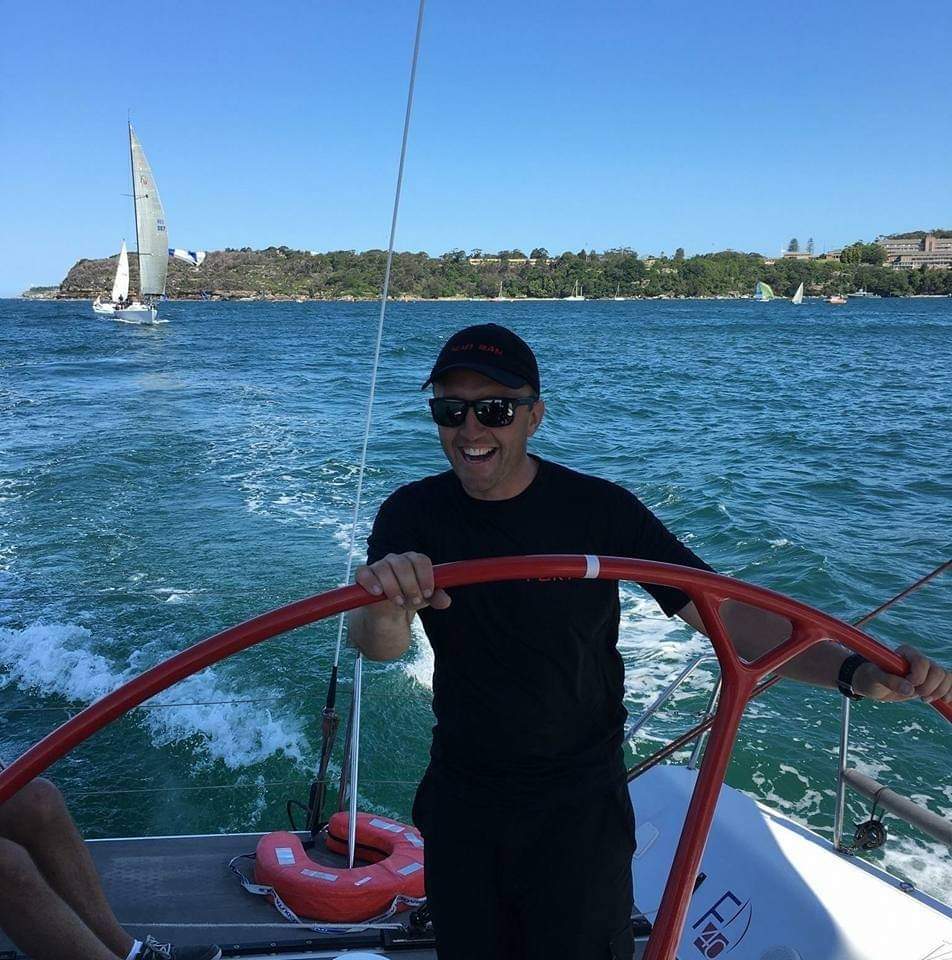
events
LETTER TO MY YOUNGER SELF: BILLY SYKES
LETTER TO MY YOUNGER SELF
The Key To Winning The Sydney Hobart For North’s Billy Sykes Is Teamwork
The sailors and designers in the world of North Sails are some of the most inspiring people on the water, and we’re hoping to share more of their story with you. “Letter to my younger self” is a series told from our North Sails ambassadors. In each article we bring to life their advice and personal journeys centered around the question: if your “now-self” could give your “younger self” advice, what would it be?
Dear 20-Year-Old Billy,
After a couple of years off, we’re back in 2021 to race in the 76th Sydney to Hobart! And, boy, am I excited. Heading into this year’s race, I’d be lying if I said I wasn’t a little nervous (the good kind of nervous), so I wanted to share with you some advice on how to get from where you are now to where I am today.
First off, stand up for yourself, but also be flexible and honest. Attitude and preparation are everything to being successful. This will help you out in all areas of your life, but never more so than in the Sydney to Hobart. Preparation is key to that race. The boat and the team with the best equipment have the best shot at winning the Melbourne Cup of Offshore (yes, I realize I just compared horse racing to offshore sailing but as we all know, just because you’re the favourite doesn’t mean you’ll win the race!).
Over the years, things might get a little bumpy, but trust me when I say: Always stay open minded to other ways of skinning a cat. Just because you have an opinion on the best way to do things, when it comes to family, business, and sport- it’s all about teamwork! This will save you a lot of headaches if you abide by this advice. Be honest, trustworthy, and loyal. Always give 100% to the team.
Remember, to win this race, teamwork is key. Back everyone up and be prepared for the next sail change, watch change, or whatever change happens next!
Sydney to Hobart is a special race for a multitude of reasons but one that stands out is it’s all about challenging yourself. Sailing on the TP52, Gweilo, on the edge for two or three days… offshore… is challenging. But, wow, it’s fun.
Dad will continue to inspire you over the years. He’ll take ’21 off but we all know he’ll be back in 2022. He’s lost count on how many races, but we think he’s up to 30+ Sydney to Hobarts now! Hopefully, he has a few races left to go and I can’t wait to do one race with him.
Billy, you must believe in the big picture and never give up. Let your dad be your inspiration—he’s the most loyal, hardworking man you’ll ever meet. Enthusiasm, teamwork and a positive attitude will give you a ‘cutting edge’ in life. Never give up and keep pushing the boat; remember, you can always sail faster. Use your expertise from North Sails to guide sailors into using and developing their current sail configurations. Also don’t hesitate to recommend new sails to help keep evolving faster sails, and quicker modes sailing offshore.
One last thing, do not be surprised when you hit no wind off Tasman Island after being fire hosed for over 500 miles! And, as always, relish in the support and love from your family – Abbey makes all this possible.
Keep sailing and stay excited,
READ MORE
READ MORE
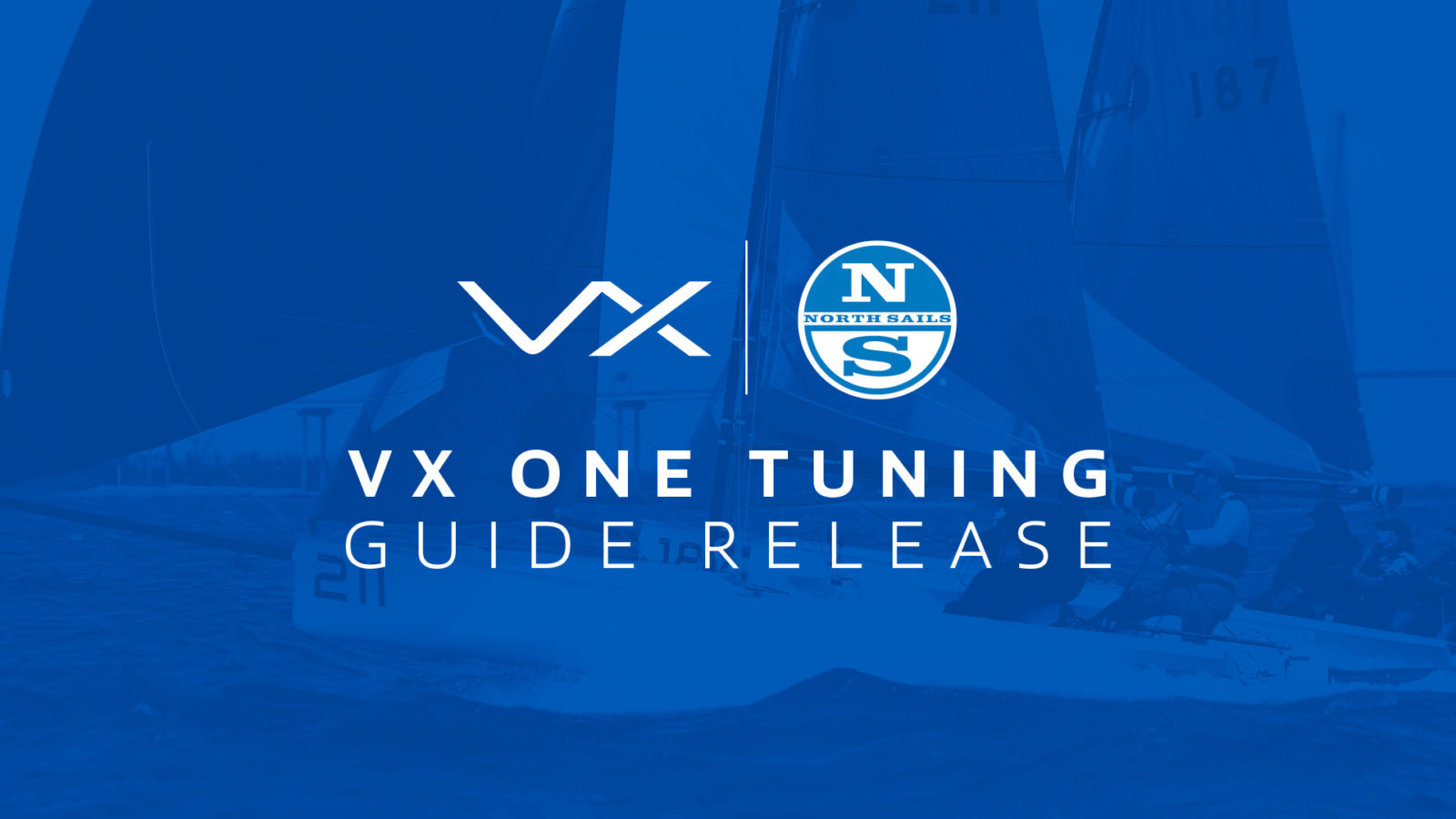
events
VX ONE TUNING GUIDE 2021-22 UPDATE
VX ONE 2021-22 WINTER UPDATE
Updated Tuning Guide + Winter Series Webinar With Mike Marshall And Austin Powers
This guide for the VX One has been developed through extensive testing, tuning, and practical racing experience by some of the top sailors in the country. New changes in the class and developments in sailcloth and sail design technology continue to bring about improvements in the VX One’s performance, and North Sails is an important part of these innovations.
While we can’t guarantee you immediate victory on the racecourse by following this guide, we can assure you that you’ll be taking a big step in the right direction!
New Tuning Guide Numbers
The main update to the VX One tuning guide is the tighter check stays as the wind speed increases. The check stays now start at 11 on your PT-1 and will take an added 0.5 turn with every step-up on the guide. This means that the new “steps” are 2 full on the Caps, 1 full on the Intermediates, and 0.5 on the Checks.
WIND SPEED
Knots
CAP SHROUDS
(# of turns from base)
INTERMEDIATE SHROUDS
(# of turns from base)
CHECK STAYS
(# of turns from base)
0-8
-2
-1
-0.5
8-10 (BASE)
BASE (28 on PT-1)
BASE (18 on PT-1)
BASE (11 on PT-1)
10-12
2
1
0.5
12-14
4
2
1
14-16
6
3
1.5
16-18
8
4
2
18-20
10
5
2.5
20-22
12
6
3
22+
14
7
3.5
Note: This tuning is for the boats with Southern Spars masts. For the boats with CST masts, the base tune for the cap shrouds is 30 on the PT-1. Everything else remains the same.
CREW WEIGHT: 430 lbs
ANGLE CAR POSITION
SHEETING ANGLE
Knots
DISTANCE FROM CENTERLINE
(# of turns from base)
5 degrees
193
SWEET SPOT
260
7.5 degrees
290
10 degrees
386
Full Tuning Guide
Let’s Talk VX One 2021-22 Winter Series – Webinar
Catch up with North Sails Experts Austin Powers and Mike Marshall in the webinar below.
Shop VX One Sails
READ MORE
READ MORE
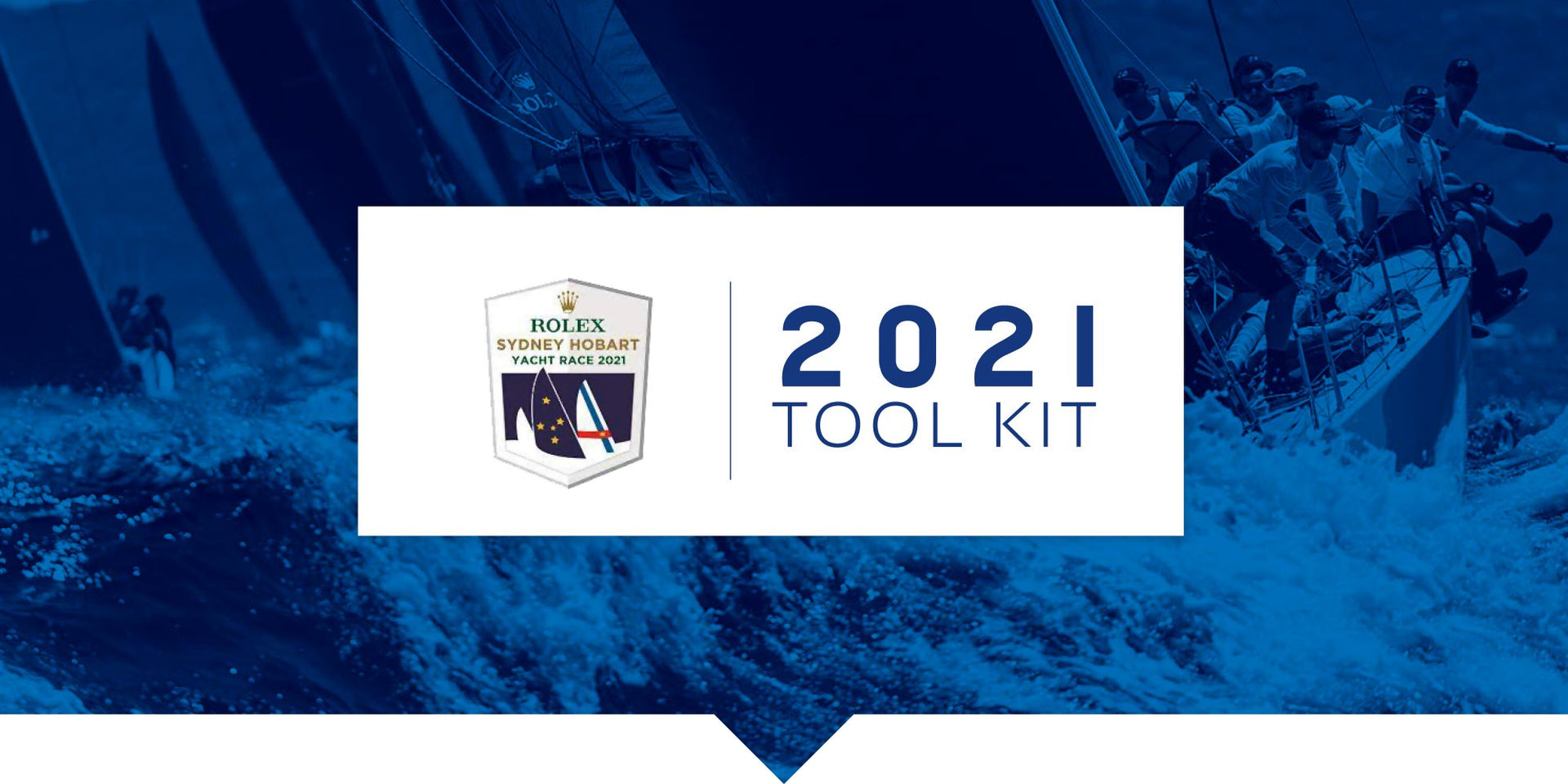
events
ROLEX SYDNEY-HOBART TOOL KIT
Sydney Hobart Tool Kit
The Rolex Sydney-Hobart is fast approaching. Does your team have what it takes to take on this 628nm race? Here is what you should know before you leave the dock. Created just for you, by your local team of offshore racing experts.
Provisioning
Sarah O’Kane from Shorebase Logistics is familiar with this race and many like it. Hear more on what’s important when it comes to properly provisioning before any offshore marathon, like the Sydney-Hobart.
Learn More
Crew Watch Systems
To get the best out of everyone while racing the boat hard around the clock, the skipper or sailing master needs a clear view of each crew member’s skill sets.
Learn More
Navigating
Australian summers can make for the ultimate offshore experience. Be prepared for everything with Chris Bedford, world renowned sailing meteorologist with 30+ years of experience and expertise in marine and coastal meteorology.
Learn More
Reefing Systems
Sailing in big breeze can be fun, exciting, maybe stressful, and expensive when things go wrong. Reefing a sail quickly and easily when the breeze comes on is key to looking after your sails and your crew.
Learn More
Post-Race Sail Service
Crossed the finish line and need a sail repair? North Sails Certified Service Experts will be onsite and ready to get your sails repaired so you can get back in action.
Learn More
Winning The Delivery Back Home
Preparing successfully to compete in the biggest offshore races requires putting your attention to every detail. From the start of the delivery trip all the way to the starting line of the race, here’s what you need to know.
Learn More
READ MORE
READ MORE
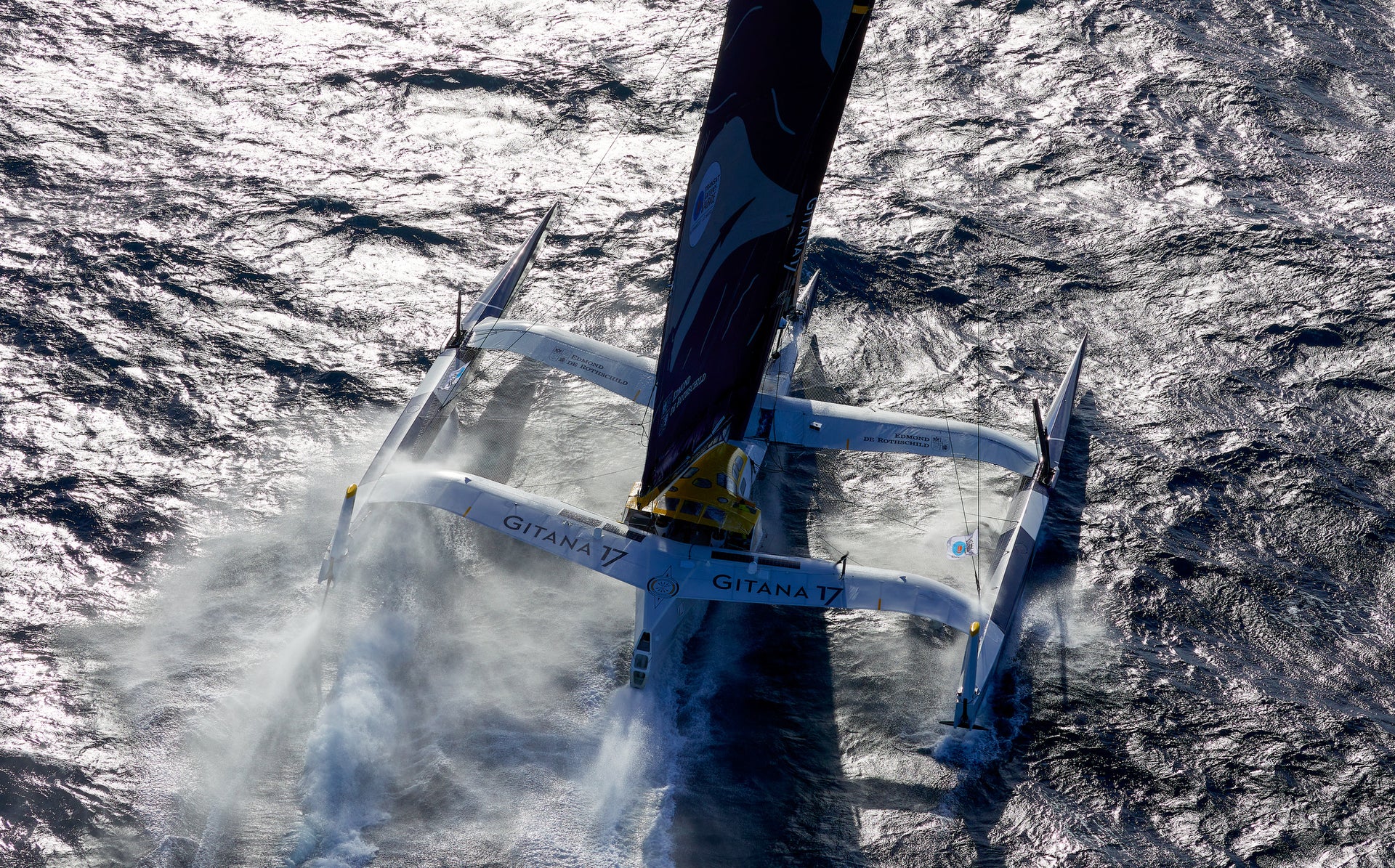
events
LIVE UPDATES: THE 2021 TRANSAT JACQUES VABRE FINISH
LIVE UPDATES: THE 2021 TRANSAT JACQUES VABRE FINISH
Following the Four Fleets to Martinique
The Transat Jacques Vabre (TJV) departed Le Havre, France on Sunday Nov 7th, and there are four classes currently racing toward the finish in Martinique. This biennial event is a major training milestone for all the competing programs and represents a significant body of work for North Sails, especially for our colleagues in France. Of the 79 teams participating, 42 have North Sails onboard.
The TJV fleets are expected to start arriving to the finish in Martinique the next few days and will trickle in throughout the next week or so. Bookmark this link and check back often for updates!
RACE TRACKER
November 19, 2021, 7:01pm GMT
The Transat Jacques Vabre: A Collaborative Effort at All Levels
November 19, 2021, 5:45pm GMT
North Sails experts cover race history and some insights for this exciting doublehanded Transatlantic challenge
The 1st TJV in 1993 was a solo event from Le Havre to Cartagena, Colombia. It switched to doublehanded in 1995, and has since become known as the toughest and longest-running two-handed transatlantic race. It is sailed every two years.
In 2007, the Class 40s joined the IMOCA party as a separate fleet, bringing the total number of boats (both monohull and multihull) to a record-breaking 60. In 2015, the Ultims joined the party, and we also saw the first foiling IMOCA. JP Dick won the race for a fourth time in 2017, and he still holds the record for the most wins.
2021 sees the return of the giants of the seas – the Ultims – after a gap year in 2019. All the skippers will head for La Martinique, with each of the four classes on its own route—in hope of a tightly grouped finish.
Insights from North Sails Head of R&D Gautier Sergent:
This race has had many faces over the years, but there are always four key defining elements:
It is a grueling double-handed race often marked by violent storms.
The boats are pushed to their limits.
The finish is hotly contested.
The finish is in a country that produces coffee! It is the “route du cafe”.
This makes the TJV a wonderful testing ground for both talent and equipment. Close racing, harsh conditions, boats pushed to their maximum: what more could we ask for?
The new boats, across all classes, are getting more powerful and faster. As always, power is nothing without control, and the course should be a perfect hunting ground for our Helix sails. The Helix concept was an integral part of these latest design iterations, and the conditions should further prove their improved power delivery across a wider range.
📸 11th Hour Racing Team
Charlie Enright, co-skipper of 11th Hour Racing’s Malama, is sailing his second TJV. Here is what he had to say about what the race means for his team:
“The TJV helps us better understand our sails because we’re going to be sailing on specific inventory combinations for extended periods of time, which is something you don’t really get a chance to do in training. In training, you’re trying to cram as much as you can into a short period of time. Hopefully, the advancements will continue with crossovers and geometries and the results will inform the development of our future sails.
“It’s important that we have the most reliable sails available to us. We put them through some treacherous conditions, and we don’t want to have to think about babying them as we compete.”
READ MORE
READ MORE
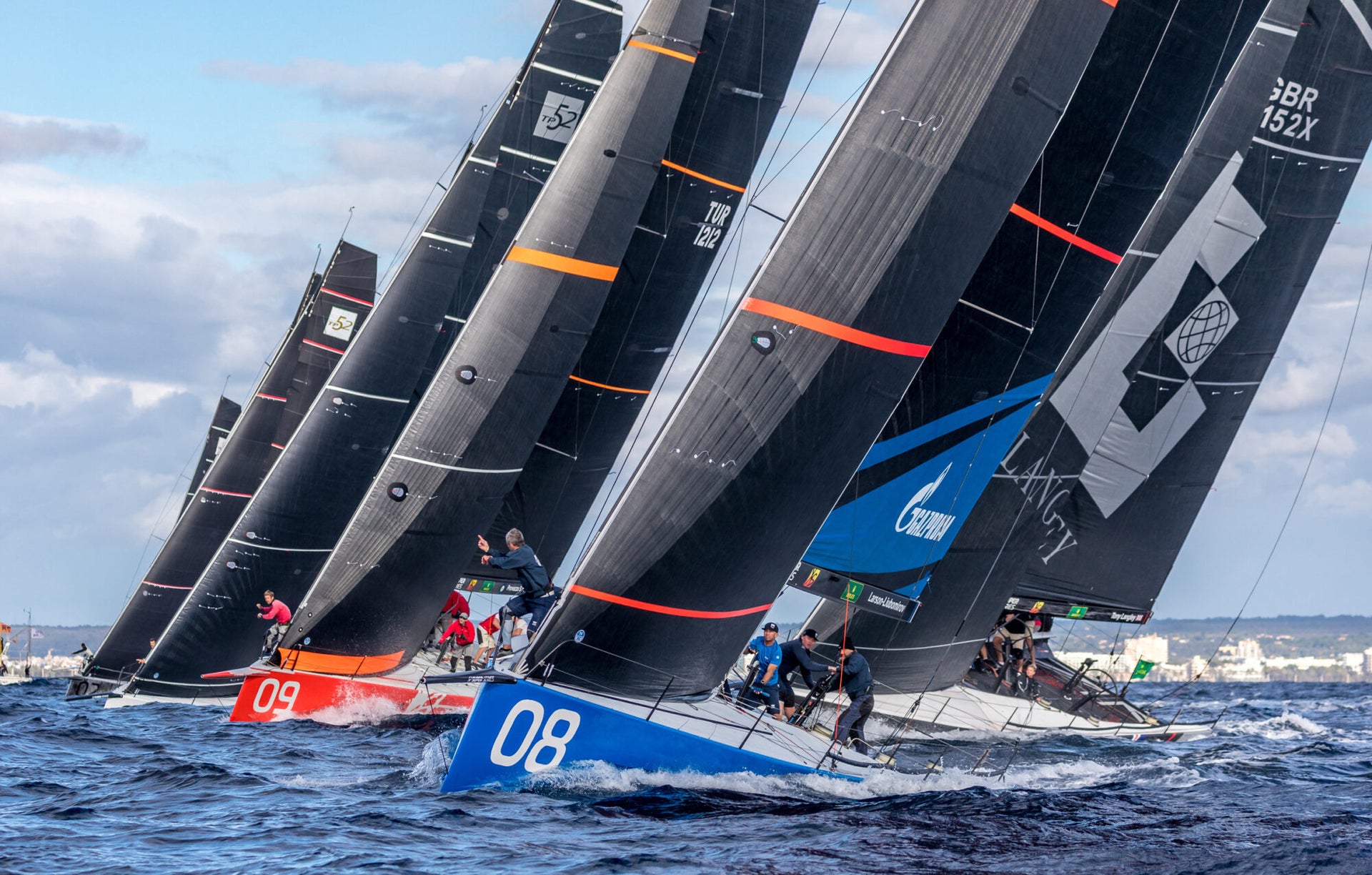
events
FASTER BY DESIGN | REFLECTING ON THE 2021 TP52 SEASON
FASTER BY DESIGN
REFLECTING ON THE 2021 TP52 SEASON
With the end of the 2021 52 Super Series season circuit behind us, North Sails experts and designers are now gathering feedback from the teams and learning from their experiences to help refine designs and structures that will be incorporated into future seasonal development cycles.
In a game of gains by millimeters rather than boat lengths, we at North are ultimately judged on the performance of our product, and in the Super Series, performance equals results. In the latest North Sails release, Grand Prix Sales Leader Paul Westlake and Sail Designers Marco Capitani and Juan Messeguer describe how North Sails has the tools, the team, and the sail technology to deliver race-winning results.
READ MORE
READ MORE
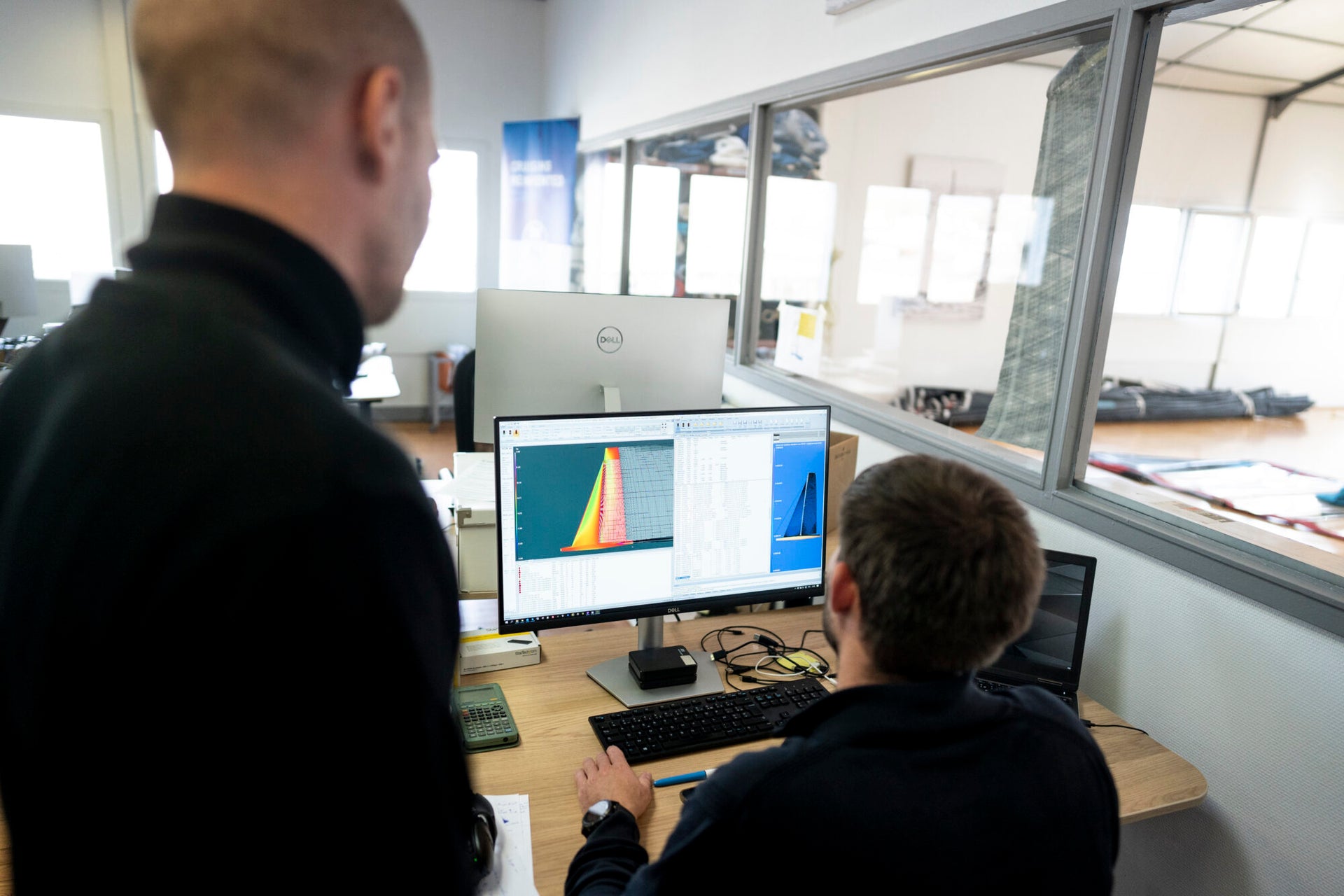
events
SEEING YOUR DESIGN WORK IN ACTION
THE NORTH SAILS TEAM IS READY TO SEE THEIR WORK IN ACTION
Head of R&D Gautier Sergent and Sail Designer Quentin Ponroy Discuss the Upcoming Transat Jacques Vabre
On 7 November, the toughest and longest-running two-handed transat sets off for the Caribbean from Le Harve, France. Alternatively known as “the coffee route,” the biannual Transat Jacques Vabre (TJV) attracts the sport’s most successful offshore sailors and captivates sailing fans around the world.
Four classes will race across the Atlantic with the IMOCA and Ocean50 boats crossing the Equator and round the Brazilian archipelago Fernando de Noronha before heading to the French West Indies. The Class40s will race a shorter route, leaving Cape Verde to starboard before heading to Martinique. And last, but definitely not least, the mighty Ultims will dive further South than the IMOCAs, rounding another Brazilian archipelago off the coast of Rio de Janeiro before heading to the Caribbean. Even with three different routes, every team in the 2021 TJV will have to manage a myriad of challenges including (but not limited to) the English Channel, the Bay of Biscay, the Doldrums, and enough highs and lows to make any skipper’s spin.
“The Transat Jacques Vabre is a very influential race,” says Gautier Sergent, Head of R&D at North Sails. “Not only is it a proper offshore event, but it’s also doublehanded which means you get to push the boat. Plus, there is a large fleet that attracts the best sailors. The race is also early enough in the design cycle, so you get to test a few things with your sails.”
Historically speaking, the success of this offshore race is defined by strategy, tactics, and grit. However, 2021 is a bit different. The teams and their platform are so closely matched, this edition’s wins will come down to innovation, technology and (you guessed it) sail selection.
For example, all five Ultims will be racing with North Sails, so, in the mind of Charles Caudrelier (co-skipper of Maxi Edmond de Rothschild), the outcome of the race weighs heavily on the relationship between the sailors and their North Sails design team.
“We work in very close collaboration with our designers for two reasons,” Caudrelier explains. “Designing, for one, and then also ongoing R&D study for the future. This is the future, and the sails are the power—the engine of the boat. The big choice we can make is not only the type of sail, but also the relationship we have with North Sails and the designer who is in charge of the boat. If you have a good collaboration with your designer, you can always be one step ahead of the other teams.”
Even though the TJV is one race, the various projects for the North Sails team represent a significant amount of work. After each race from this last year, the designers took into consideration everything from the 2021 offshore events. We sat down with Sergent and sail designer Quentin Ponroy to learn more about getting the sails to the start line.
Ponroy explains, “to prepare the IMOCAs for the TJV, we began by gathering all of the feedback and data from recent races, like Vendee Globe, The Ocean Race Europe as well as the Fastnet. From these races, we’ve collected a lot of critical information.”
“We built too many new sails to count between all the classes, but especially the IMOCAs whose sails were quite tired after the Vendee Globe,” says Sergent. “But, over the last year, we’ve witnessed some boats are really finding that next gear and are becoming super quick and learning to use the foils better. In the coming months, we expect to see even more of this from other teams – and support them in discovering their perfect sail set combination.”
The North Sails team is excited about this year’s TJV race for many reasons, one of them being the unique course.
“The spinnaker is the key sail for the TJV,” Ponroy remarks.
“A lot of this race will be decided downwind, and it will be a great opportunity for us and the teams to test the downwind gear,” explains Sergent. “After the Azores, it is normally a VMG downwind race meaning you must gybe downwind to get to the finish, so we’ve put a lot of emphasis into the downwind sails.”
The North Sails team is also impatiently awaiting the data they’ll receive at the end of the race.
“Because the TJV is a doublehanded race, the sailors push the button a little harder. So, we get a little bit closer to the design world where everything is perfect, 100% they’ll get to use the boat closer to its full potential. It’s a very good opportunity for North Sails to compare the performance of the boat with the numerical tools,” Gautier says.
“The learnings from these races are phenomenal. Like I’ve said it’s a downwind race, so we get to test a lot of downwind gear especially with the way you handle the sails- the way you furl the sails. We’ll be looking at the new techniques. Most of the boats, across all four classes, have Helix sails so we’ll get to see the range of these sails. Obviously, they go offshore and we’ll see a lot of variations of sea and wind conditions. To be honest, because it’s shorthanded, it’s the closest thing to cruising—bluewater cruising—where you want the most versatile and efficient sail you can have.”
READ MORE
READ MORE

events
SAILORS GEAR UP FOR THE TRANSAT JACQUES VABRE
SAILORS GEAR UP FOR THE TRANSAT JACQUES VABRE
Charles Caudrelier, Charlie Enright, and Sam Goodchild Discuss What It Takes To Campaign For The TJV
Every other year, in late Autumn, there’s a race so exciting that it captures the hearts of the offshore sailing world: the Transat Jacques Vabre. The doublehanded sailing event brings together some of the world’s best (and fiercest) offshore competition on par with the likes of the Vendee Globe and Ocean Race. Interestingly enough, the Transat Jacques Vabre (TJV) features many familiar faces—from 2019 TJV winner Charles Caudrelier to two-time Ocean Race skipper Charlie Enright. The race also attracts many offshore fan favorites like four-time race veteran Sam Goodchild.
The TJV is unique because, unlike the Vendee Globe and Ocean Race, four offshore classes—using cutting-edge design and technology—go head-to-head from Europe to the Caribbean. Many sailors, like Caudrelier, are more than experienced in this offshore stretch of ocean, however, for the first time in the race’s 28 year history, the teams will sail to Martinique in the French West Indies from Le Havre, France. The 2021 race track features three different routes across the four classes to allow for maximum competition.
The TJV is one of many offshore races in a team’s “big picture” calendar however, it is vitally important for a campaign because it allows for essential development and testing in an intense offshore setting. With start set for Sunday 7 November, we caught up with Charles, Charlie, and Sam to discuss how their respective teams are using the TJV as a critical training moment for their three, very different, campaigns. For all three offshore sailors (and their teams), the 2021 TJV will be a testing ground unlike any other. The competitors will be testing themselves, their boats, and their sails.
Charles Caudrelier, Co-Skipper of the Ultim, Maxi Edmond de Rothschild
For Gitana Team onboard their 32m trimaran, this will be an offshore battle of fresh out of the shed boats and the sea-tested Ultims, with Maxi Edmond de Rothschild falling into the later category. “The team has done a good job . We have more nerves to discover the potential of the new boats. We know they will be fast, but we don’t know by how much because we’ve never sailed against them for more than a few miles.”
In the past, the race has been about seven or eight days long, which when you’re looking for your competitive edge, can often not be long enough. Caudrelier knows these water’s well, “I’ve been sailing in every direction. I’ve done a similar leg three times with the Volvo Ocean Race, so I know what’s going to happen and what the focus will look like, but we’ll have more lessons with the longer race of 12 to 14 days. It will be very interesting in terms of strategies.”
When discussing design and the future of the Ultims, specifically their sails, Caudrelier explained that although it is difficult, the key to a successful race can often come down to the sails themselves.
“We’re not an America’s Cup project where we can try many, many sails or do two-boat testing. So, this is an important race to test our sails because we’re always looking to improve. In a race like the TJV race, the sails really can make the difference.”
“It’s very difficult to design . These boats are going faster and faster, and the speeds in this world go from ten knots to 45 knots. The wind power and the wind speed change a lot. It’s not easy. But I think we have a good set of sails that are very fast. So, I’m happy but I know we can improve.”
All five Ultims will be racing with full North 3Di inventories, so, in Caudrelier’s mind, the relationship the teams have with their North Sail designer is essential.
“We work in very close collaboration with our designers for two reasons. Designing, for one, and then ongoing R&D for the future. This is the future, and the sails are the power—the engine of the boat. I’m sure we can improve a lot in this area.”
“With all Ultims on the starting line having North sails, the big choice we can make is the type of sail but also the relationship we have with North Sails and the designer who is in charge of the boat. If you have a good collaboration with your designer, you can always be one step ahead of the other teams.”
Charlie Enright, Co-Skipper 11th Hour Racing Team IMOCA, Mālama
Not yet forty, Charlie Enright is a well-known name in the world of offshore sailing. Having completed two Volvo Ocean Races, a handful of ‘smaller’ offshore races, and one Transat Jacques Vabre, the American co-skipper of 11th Hour Racing Team (Mālama) is ready to take on his second Transat Jacques Vabre.
“The TJV is an exceptionally important race for our team. It is the culmination of all this year’s hard work. It’s also the first real race for us on our new boat.” Enright’s teammates, Justine Mettraux and Simon Fisher will be sailing on 11th Hour Racing Team’s Alaka’i.
“The last time we did this race , our team was unproven and our boat was quite proven. This year it’s the exact opposite. We haven’t done a lot on the new boat , and we know we have a lot to learn. It’s very important that we learn as much as we can before the boat goes into its winter refit period here in France.”
There has been a lot of offshore activity this year, but very few with ocean crossings for Enright lasting more than a week. And barely any away from the challenges of land.
“We learned a fair bit during The Ocean Race Europe and the Fastnet, but the TJV is different—for starters, it’s a much longer race at almost 6,000 miles. This means, the boats really get a chance to stretch their legs versus ducking and diving around headlands and sailing close to land. It will be really nice to get all the boats in the same weather system and see what kind of speeds they can reach relative to each other.”
“The TJV helps better understand our sails because we’re going to be sailing on specific inventory combinations for extended periods of time, which is something you don’t really get a chance to do in training. In training, you’re trying to cram as much as you can into a short period of time. Hopefully, the advancements will continue with crossovers and geometries and the results will inform the development of our future sails.”
“It’s important that we have the most reliable sails available to us. We put them through some treacherous conditions, and we don’t want to have to think about babying them as we compete.”
Similar to the Ultim, the IMOCA 60 sails are essential to the engine (and success) of the boat. This means, for Enright and the 11th Hour Racing Team, it’s meant working closely with the North Sails designers. Gone are the days of the sails being almost an afterthought of the boat itself.
“Sails have been a big part of our learning experience particularly with the design of our new boat. The sail designers worked in collaboration with our Naval architects here in France, and all over the world, actually, to develop an overall concept of the boat. The aero package is instrumental to the design of the entire boat—the foils, the hull shape, the systems, everything you can imagine; it’s all intertwined.”
“One great thing about working with North Sails is that we’ve been able to work with various designers with the North Sails global network. Each member of our team feels comfortable working with them not only in philosophy but also with design and technical support. It’s been really great to integrate many members of the wider North Sails team into our project. We’re a French-Anglo team and it’s nice to have designers from both cultures embedded in our campaign.
“We have a lot of experience with the 3Di product from two previous Volvo Ocean Races. To work on custom sails for the IMOCA has been a step up, with the decrease in weight, custom tape layouts, and structures, we’re looking to optimize but we’re always confident with the reliability of the final product when we leave the dock.”
Sam Goodchild Co-Skipper of the Ocean 50, Leyton
British skipper, Sam Goodchild, is chomping at the bit for the 2021 Transat Jacques Vabre to begin. “It’s going to be a really fun race,” Goodchild said. “We’ve done a good job with our preparation. All the big decisions are made. Now it’s just the last checks and figuring out what we’re going to take with us. What do we want to leave? How heavy do we want to be? How many spares do we want to take? There are no big things on the job list though. It’s game on between now and the start day.
“It’s a race made for these boats—the Ocean 50. These boats are designed for sailing across the Atlantic, and the fact that it’s the two of us means we can push the boat. This also means we’ll be up against the best of the best, and we’ll work as a duo to try and win the race against them. It’s a different challenge and I really like that.”
Similar to Charles Caudrelier, Goodchild is excited to head out for an extended offshore adventure. “We don’t get many opportunities to do two weeks nonstop with the main performance objective being: to win. That doesn’t happen very often. We have loads of things to learn and I know we’re going to be much stronger at the end of this race.”
Goodchild and his co-skipper, Aymeric Chappellier, have decided to bring five headsails on the race. “It’s a fairly easy sail inventory. There’s one small one and one big one, and everything in between. Depending on where we’re trying to go and how hard we can push the boat, we will pick the right combination.”
“We have a very good, very close relationship with our sail designer, Alan. We’ve had fairly ongoing communication and discussions with Alan and North Sails throughout the year to make sure we have the best sail wardrobe for the TJV. Because of our class rules, we’re only allowed one set of sails every two years, which means we’ve had to readapt some of the sails from our old boat. We’ve also had to order a couple of new sails to enhance our wardrobe to make sure the boat is going to perform the best as possible for this TJV.”
Sam Goodchild’s project is fairly new to the crew, only kicking off at the beginning of this year. However, the team has been able to sail with a lot of experienced sailors to get ready for this race. “Now, it’s up to me and Aymeric to pull everything we’ve learned in this season and put it into play.”
Sometimes racing isn’t about only winning though. And, heading into this race Sam and Aymeric are going in with a clear number two objective: learn.
“We expect nothing but we’re hoping to win. That’s our aim. We’ve done everything we can to be able to win. Other than that, if we don’t win, it would be good to know why we didn’t. So, when we come back next winter (for the Route du Rhum) we know what we can do to make it better, whether it’s a technical choice, a sail choice, a navigation choice, or a preparation choice. Our dream scenario is we win. And the second-best scenario is we know why it didn’t happen.”
📸 Amory Ross / 11th Hour Racing, Benoit Stichelbaut / GITANA, Yann Riou / PolaRYSE / GITANA, LEYTON #sailingteam
READ MORE
READ MORE
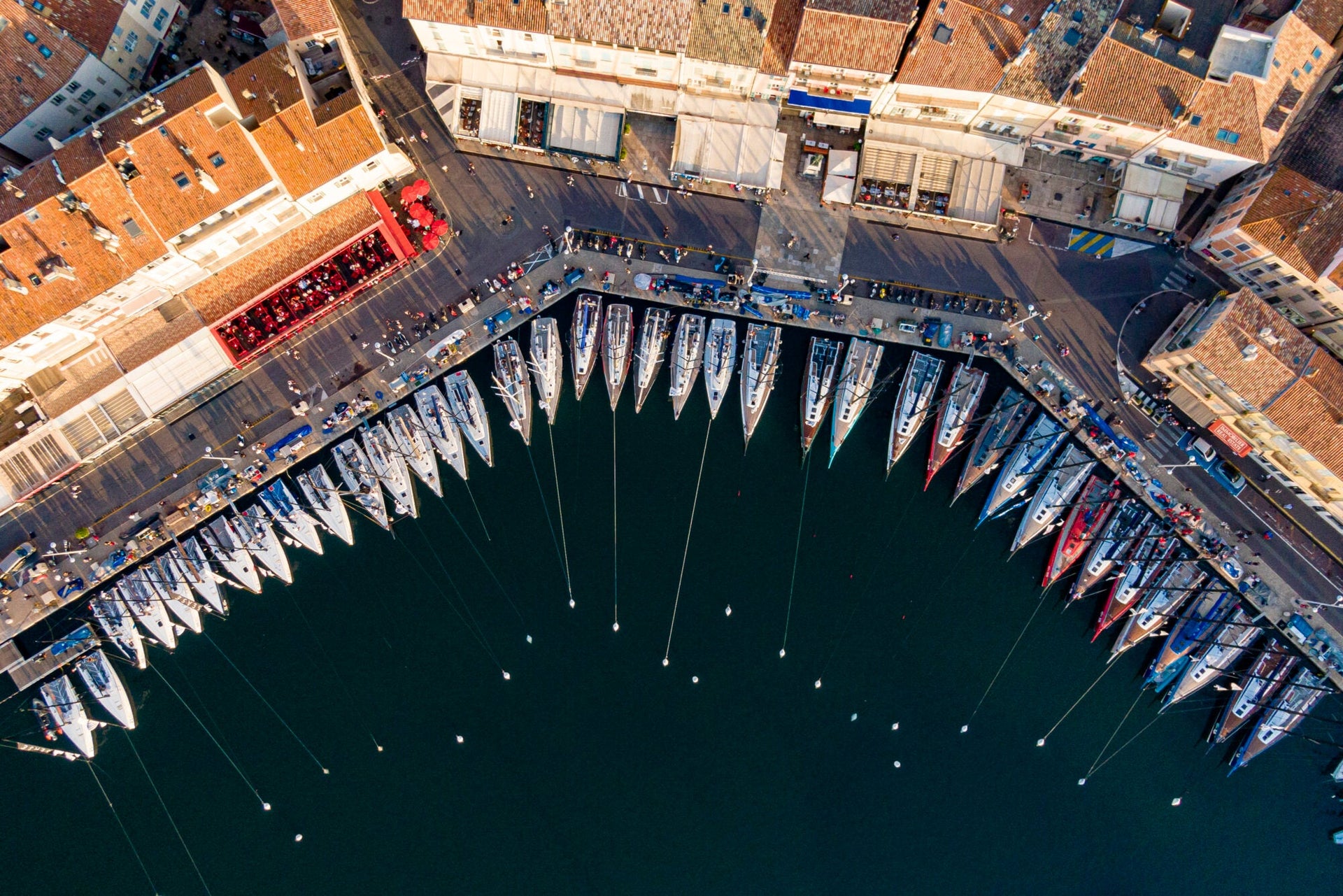
events
THE 2021 SWAN SAILING SEASON IS IN THE BOOKS
ANOTHER SUCCESSFUL SWAN SAILING SEASON IS IN THE BOOKS
Competition Within The Classes At Swan One Design Worlds Was At An All Time High
📸 Nautor’s Swan / Studio Borlenghi
The 2021 Swan One Design Racing season concluded in a sprint to the end of the season. The Swan One Design Nations Trophy in Palma de Mallorca was quickly followed by the Swan One Design World Championships in St. Tropez, which capped off this year’s success for Swan owners.
Throughout the season, North was onboard and alongside to support the class and our clients. Executive Vice President and Grand Prix Expert Paul Westlake and Luna Rossa sail designer Marco Capitani were on the water lending their eyes and expertise for the ClubSwan 50 and 36 classes. Beyond, North Certified Service was offered to all participants to ensure their sails were race-ready for each day of racing.
“All of us at North Sails strive to deliver a high-performance sail package, and equally important, individual support for our owners and their teams,” remarks Westlake. “We are in constant contact with the trimmers and owners of the North teams. It’s rewarding to see that our work pays off and helps deliver race-winning results when it matters.”
Case in point – North Sails held a commanding presence across all four classes at 2021 Worlds, with 35 of the 42 teams choosing to carry a North inventory. North Sails was onboard nine of the top ten ClubSwan50s. Each of the ClubSwan 36’s, including the current World Champions, included North in their inventories. And in the ClubSwan 45 and 42 classes- full podium sweeps.
📸 Nautor’s Swan / Studio Borlenghi
“Results like we saw in the 2021 season, are as inspiring as they are humbling,” explains Westlake. “All of us at North Sails trust our products are at the top of the game, but to see that proved on the racecourse gives us the confidence to keep pushing our ideas forward. Even the smallest optimizations make a noticeable difference, especially in one-size-fits-all classes, where things are very close at the top.”
North Sails One-Design expert and newly crowned ClubSwan 50 Vice World Champion Arnd Howar shares this observation. “The level in the ClubSwan 50 class has never been as high as it was at the 2021 World Championship; there is virtually no room for error at the top,” Howar explains.
The Germany-based Howar has been successfully sailing in various One Design classes for years and is one of the most experienced trimmers in the Big Boat scene. In the ClubSwan 50 class, Howar sails as part of the regular crew onboard Earlybird.
The North expert sees a major influence on the overall performance of the ClubSwan 50 with the further development of the 3Di sails. “With an improved tape layout and other smart solutions, the sails are lighter and more powerful. The difference between a 2018 and a 2020 sail is noticeable.”
📸 Nautor’s Swan / Studio Borlenghi
What’s next for ClubSwan sail development? North Helix, which was featured successfully in upwind sails used at the Swan One Design Worlds. Helix is a rapidly developing design concept that is quickly becoming a necessity. In contrast to conventional sails, the so-called camber, i.e. the profile depth in the sail, can be precisely adjusted using the luff tension on the neck and head. Helix delivers the sails to a wider range of uses.
As the 2021 Swan One Design season wraps, Howar reflects on what makes the circuit, and the Club Swan 50 in particular so special:
“It’s really very pleasant to be around in the class. No matter how hard you fight on the water – back on land the atmosphere is good and the togetherness is friendly. The class is characterized by respectful interaction and sportsmanship in the best sense of the word, so it’s really fun.”
📸 Nautor’s Swan / Studio Borlenghi
READ MORE
READ MORE
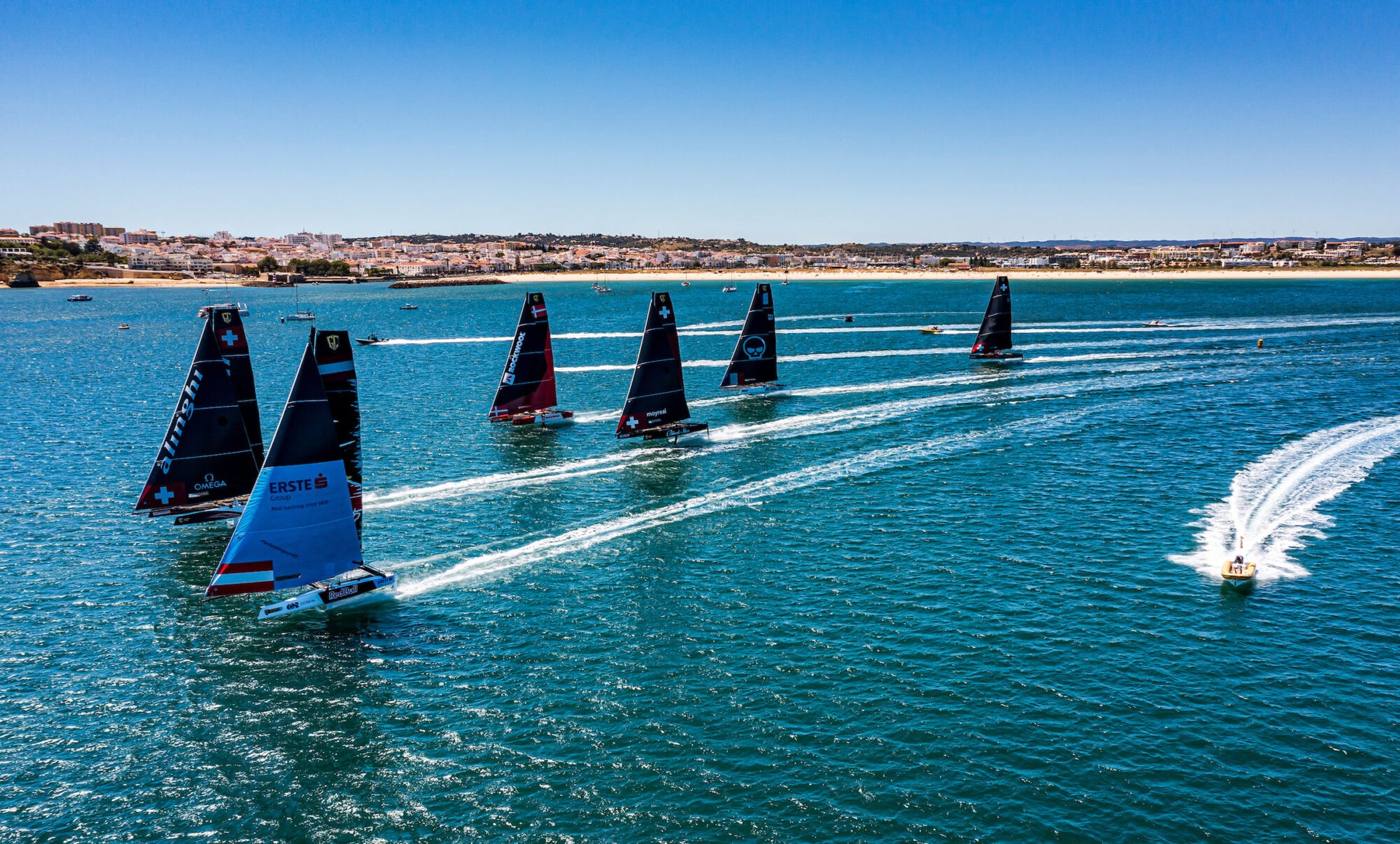
events
2021 MAR MENOR CUP PREVIEW
FOILING GC32 CATAMARANS PREPARE FOR MAR MENOR GRAND FINALE
2021 Mar Menor Cup Preview
© Sailing Energy / GC32 Racing Tour
The GC32 foiling catamarans will line up November 3rd for the fourth and final event in 2021 at the GC32 Mar Menor Cup. This grand finale represents the first time the flying multihulls have visited Spain’s famous 170km² salt water lagoon located near Cartagena on the Costa Calida, within the Autonomous Community of Murcia. The event is being supported by the Turismo Region Murcia, the Autoridad Portuaria de Cartagena and the local municipalities of San Pedro del Pinatar, Cartagena, San Javier and Los Alcázares.
The outcome of the GC32 Mar Menor Cup will decide the overall winner of the ninth season of the GC32 Racing Tour.
© Sailing Energy / GC32 Racing Tour
Ernesto Bertarelli’s Alinghi is the current favorite to take home the title. With Arnaud Psarofaghis helming, the Swiss team won the two opening events of the season in Lagos, Portugal and were on track to defend their GC32 World Championship title in Villasimius, Sardinia, until the title was unexpectedly prised off them by Red Bull Sailing Team on the last leg of the final race. Nonetheless, going into the Mar Menor event Alinghi holds a solid three point lead over second placed Red Bull Sailing Team on the leaderboard. In addition, the Austrians are also on a roll and are keen to finish the 2021 season on a high note as this event marks the retirement of their skipper, Roman Hagara and his Olympic Tornado gold-medallist partner, Hans-Peter Steinacher.
The team most strongly on the ascent in 2021 has been Christian Zuerrer’s Black Star Sailing Team. Helmed by New Zealander Chris Steele, the Swiss team came close to winning the second event in Lagos at the end of July. “We made a big step forward this year and I hope we can continue,” said Zuerrer of their prospects. “We are still on the podium, but like at the Worlds, you can have a good day and be in front or have a bad day and be at the back.”
© Sailing Energy / GC32 Racing Tour
As the season has progressed, the standard has risen across the fleet to the extent that all of the teams taking part are capable of winning races. Since Alinghi’s run-away debut to the season, all the events have been ultra-close. “It makes for interesting racing when you are close together and everyone can beat each other,” continues Zuerrer. “Hopefully, that will help attract other owners and other teams.”
Another team to watch is Zoulou, with owner-driver Erik Maris, who neatly bookended the GC32 World Championship winning the first and the last race. Showing ever increasing potential is Nicolai Sehested’s Danish team on Team Rockwool Racing while American Jason Carroll’s Argo team comes race- ready to Murcia having just set an extraordinary new race record for the Rolex Middle Sea Race aboard the team’s MOD70 trimaran.
The majority of the GC32 teams have not sailed or raced on the Mar Menor before. However being separated from the Mediterranean by a 22km long sandbar ranging in width from 100 to 1,200m, the lagoon can provide not just the optimum windy, flat water conditions but also high salinity water enabling the flying catamarans to achieve their highest speeds approaching 40 knots.
The team with most experience of the lagoon is Alinghi, as they have previously spent time training here. “It was really flat and we had good wind,” advises Alinghi’s Yves Detrey. “I have never seen anything this flat before. It is really good.”
Racing will take place out of San Pedro del Pinata on the Mar Menor’s northern corner, and will be hosted by Club Náutico Lo Pagán
The event is part of the Spanish celebrations marking the 500th anniversary of the circumnavigation of Ferninand Magellan, that was completed by Spanish navigator Juan Sebastián Elcano after Magellan was killed in battle in the Philippines.
© Sailing Energy / GC32 Racing Tour
READ MORE
READ MORE

events
RECENTLY LAUNCHED: BALTIC YACHTS - PATH
RECENTLY LAUNCHED: PATH
Featuring a North Sails Engine-Above-Deck
Path is the latest superyacht from the Baltic Yachts. The 44.6 meter Judel/Vrolijk designed superyacht launched in Spring 2021 and was most recently displayed at the Monaco Yacht Show. For North Sails, the has been a collaborative process between the boatyard, the yacht designer, and the project team of A2B, and Sebastian Allebrodt from the start.
The process to build Path’s Engine-Above-Deck began by understanding the owner’s wishes, paired with the hull structures as specified by Judel/Vrolijk. For North Sails, this understanding relies heavily on the powerful North Design Suite.
North Sail Designer Heine Sorensen explains: “This was an interesting project because of the yacht’s size. Arriving at our recommended inventory was cooperation between North Sails and the design-build team. We took full advantage of our Design Suite. The VPP program helped us understand what the boat could handle in righting moment, while Spiral, Warps, Flow, and Membrain supported our analysis of the sail shapes and structure. As the yachts get bigger, validating our designs and ideas with simulation becomes more critical. There is no doubt that we are running more these days; it’s critical a to sail designer’s job.”
Arriving at an optimized inventory is a careful balance of performance and practicality. Per the owner’s wishes for global adventures with family and friends, the brief for Path is founded on a powerful, easily managed, ocean-going sailing yacht. Sorensen is quick to point out that the usability of the sails is vital in delivering on that brief,” a point which Allebrodt, a sailor himself was able to weigh in on. One point expressed early in the project was to use the sails as much as possible, and that requirement heavily influenced many of the decisions Sorensen and the North team took when designing the sail package.
Path has a total sail area of 4075 sqm, the equivalent of 15.5 tennis courts. Its upwind, headsails, and offwind sails are 3Di Endurance 760. For Sorensen, tackling a project this size is routine, and it’s only upon reflection that he realizes the magnitude of the sails he is designing. “You’re looking at the numbers at the computer, and you’re used to seeing them there, he explains. “But it’s when you see them on the loft floor or hoisted during sea trails that the scale of the project sinks in.”
READ MORE
READ MORE
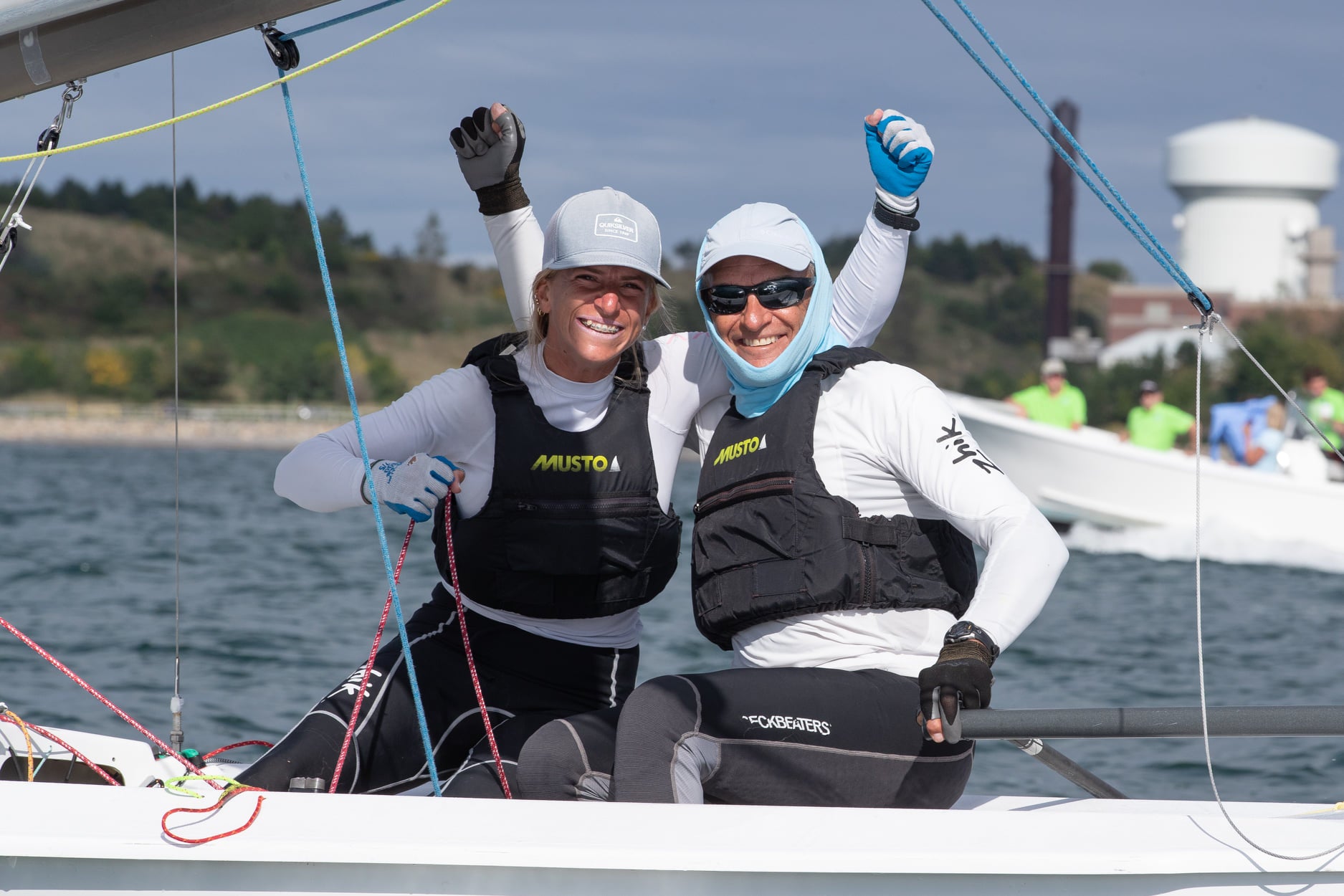
events
DIAZ & BROTONS- 2021 SNIPE WESTERN HEMISPHERE CHAMPIONS
NORTH SAILS SWEEPS PODIUM AT 2021 SNIPE WESTERN HEMISPHERE CHAMPIONSHIP
Diaz And Brotons Show Consistency And Top The Competitive Fleet
Barbara Brotons and Augie Diaz 📸 Matias Capizzano
📸 Matias Capizzano
North Sails swept the podium at the 2021 edition of the Snipe Western Hemisphere and Orient Championship hosted by Cottage Park Yacht Club in Boston, MA.
Snipe Veteran and a past Snipe and Star World Champion Augie Diaz and his crew Barbara Brotons (USA) won the event after sailing 9 races over the course of 5 days. With only one race outside of the top 10, Diaz and Brotons displayed consistency in the 27 boat fleet, placing them on the #NSVictoryList.
Americans Arthur Blodgett and Gracie Howie placed second overall, just seven points behind Diaz. The Chilean brother-sister duo of Matias Seguel and Constanza Seguel rounded out the podium in third.Taking their place as the “Top Female Boat,” Americans Taylor Scheuermann and crew Charlie Bess sailed a phenomenal regatta, finishing up the event in 8th place overall.
Congratulations to all of our North Sails Snipe class competitors. Find full results here.
Arthur and Grace Congratulating the Winners 📸 Matias Capizzano
Arthur Blodgett and Grace Howie 📸 Matias Capizzano
Matias Seguel and Constanza Seguel 📸 Matias Capizzano
Taylor Scheuermann and Charlie Bess – Top Women’s Team 📸 Matias Capizzano
READ MORE
READ MORE
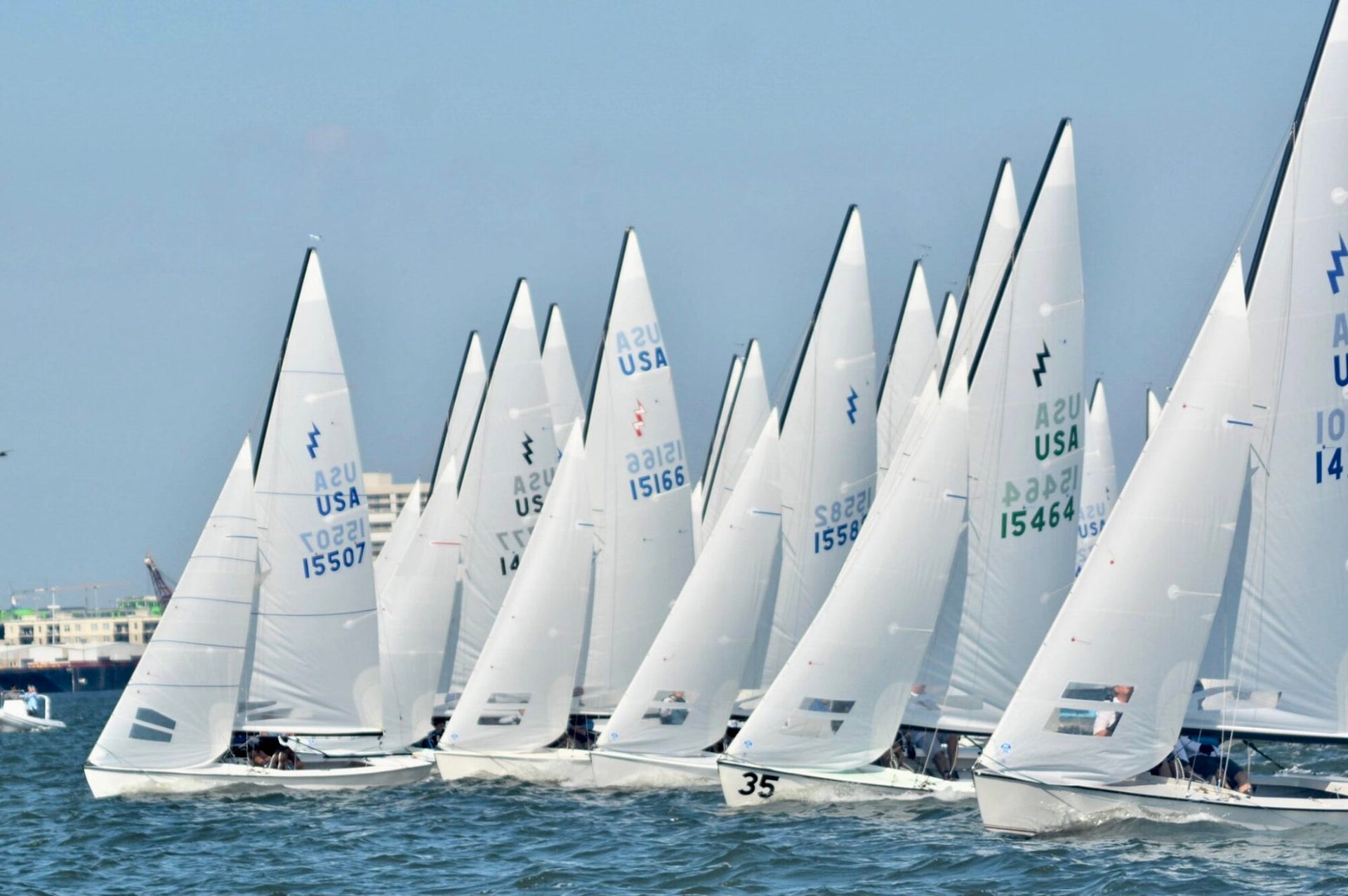
events
2021 LIGHTNING WILD OYSTER REGATTA
DAVID STARCK AND MOLONEY SISTERS WIN THE 2021 WILD OYSTER REGATTA
North Sails Prevails Over Challenging Charleston Harbor Conditions
📸 Frannie McKenzie
The 2021 Wild Oyster Lightning Regatta was held in Charleston this past weekend with David Starck, Kathryn and Christine Maloney besting 31 other teams in very challenging conditions in Charleston Harbor.
Saturday was a tricky day with a southwest breeze from 2 to 15 knots. Playing the current and staying in pressure was the key to success, and David and his team did the best with a 4, 6, 3 scoreline. In 2nd was Jonathan Lutz and his dad Jody Lutz and JoAnn Fisher leading them around the harbor to a 14, 3, 1 day.
The rest of the top 5 were Marvin Beckmann and his team of Brian Kamilar and Nikki Bruno in 3rd followed by Tom Starck, Laura Goldberg and Susanna Massalon in 4th. In 5th place were tri- skippers Sabrina Starck, Debbie Probst and Sabrina’s mom, Jody Starck besting the highly competitive fleet with 2 wins in the first 2 races, but the harbor got revenge in race 3 as they posted a 21st.
The cold front dropped into Charleston Harbor on Saturday night and with a strong northerly breeze creating puffs in the 20’s and a very strong tidal current making getting out of the basin a challenge, the Race Committee held out hope for more racing but by noon on Sunday, with many teams with long drives ahead of them, the final day of racing was cancelled and Saturday results stood.
North Sails’ selection of Lightning Sails powered 1,2,3,4,5,7,8,9,11,12,13,14,15, and 21 out of the 31 boats.
Find full results here.
📸 Frannie McKenzie
📸 Frannie McKenzie
📸 Frannie McKenzie
READ MORE
READ MORE
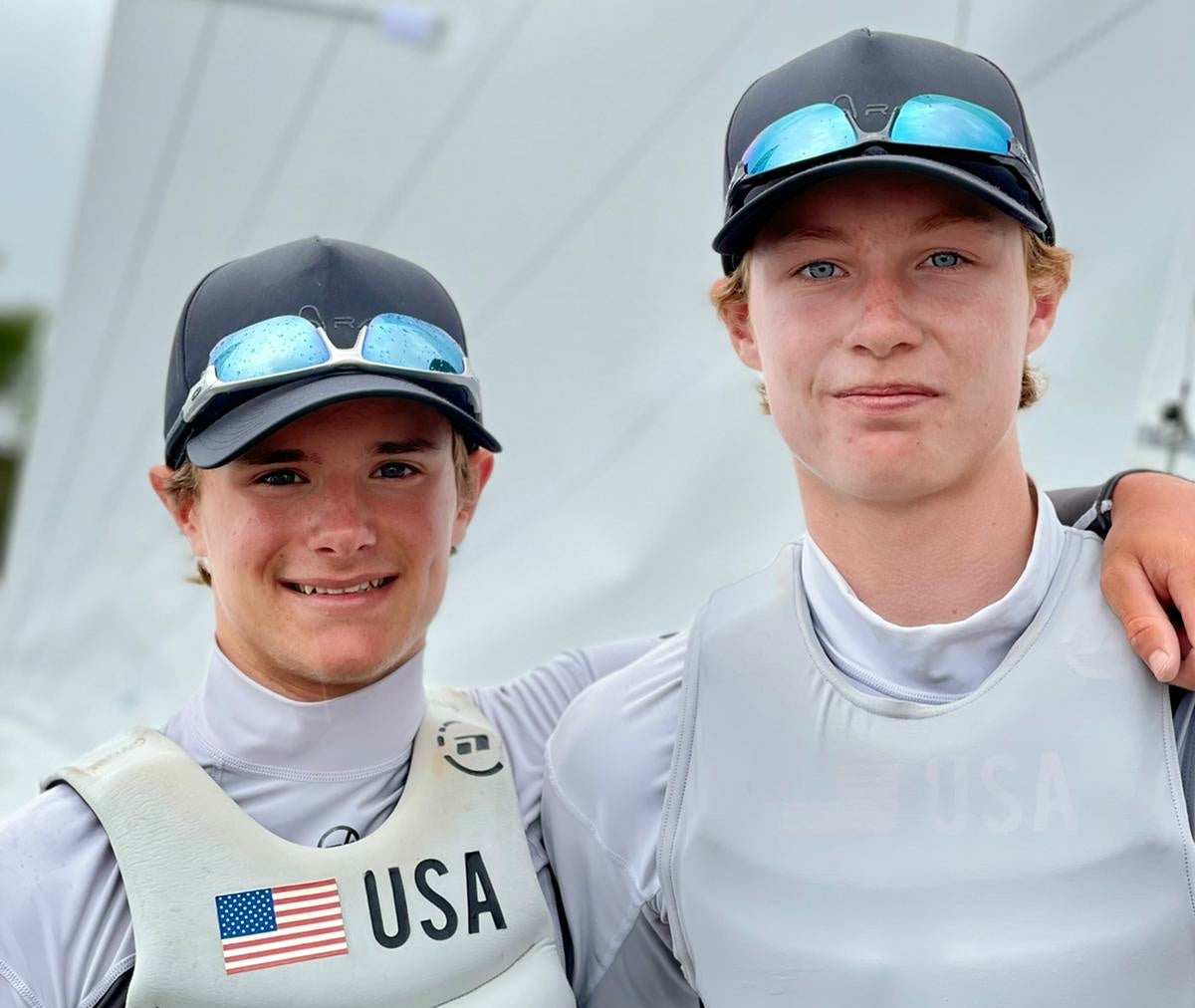
events
NORTH SAILS SHOWS VERSATILITY AND RANGE AT I420 US YOUTH CHAMPIONSHIP
SUCCESS AT THE i420 2021 US YOUTH CHAMPIONSHIP
North’s i420 Sails Enable Sailors To Excel In All Conditions
📸 Matt McCotter / US Sailing
October 10, 2021, Camp Sea Gull, Arapahoe, NC — After 3 mostly grueling days of sailing on the Neuse River in North Carolina, the I420 US Youth Sailing Championship concluded on Monday. This venue is fantastic, and the hosts were incredibly helpful and gracious.
Out on the Neuse River, the racing featured some very large, steep chop, along with strong E/NE/N winds that spun briskly around a stationary low pressure system off the coast. This low seemed motionless, driving in both clouds, rain, and wind for the first two days. Finally, on the third day, the breeze relaxed just a bit for the final races of the Championship.
📸 Tom Sitzmann
420 teams were challenged to sail well in a very wide range of conditions. So, the key was making adjustments, and shifting gears, from maximum winds/ de-powering (several gear breakdowns & capsizes over the weekend attested to how tough it was) to light/lumpy powered-up conditions. The i420, in particular, rewards sailors that focus on gear-shifting, adding to the importance of being able to adapt to what the weather presents.
North Sails 420 sails are built for just those sailors, and with proper adjustments, can provide world-class speed and performance throughout all wind ranges. We are pleased to report that North Sails teams claimed 4 of the top 5 places (1,3,4,5), and World Champions Thomas Sitzmann and Luke Woodworth (Sail1Design) continued their incredible sailing, dominating the event by winning seven of the eight races.
There was a lot gained from this regatta, and we are eager to help 420 teams looking to get to the next level, so don’t hesitate to contact us here at North Sails.
Click here for full results.
Thomas Sitzmann and Luke Woodworth 📸 Tom Sitzmann
READ MORE
READ MORE
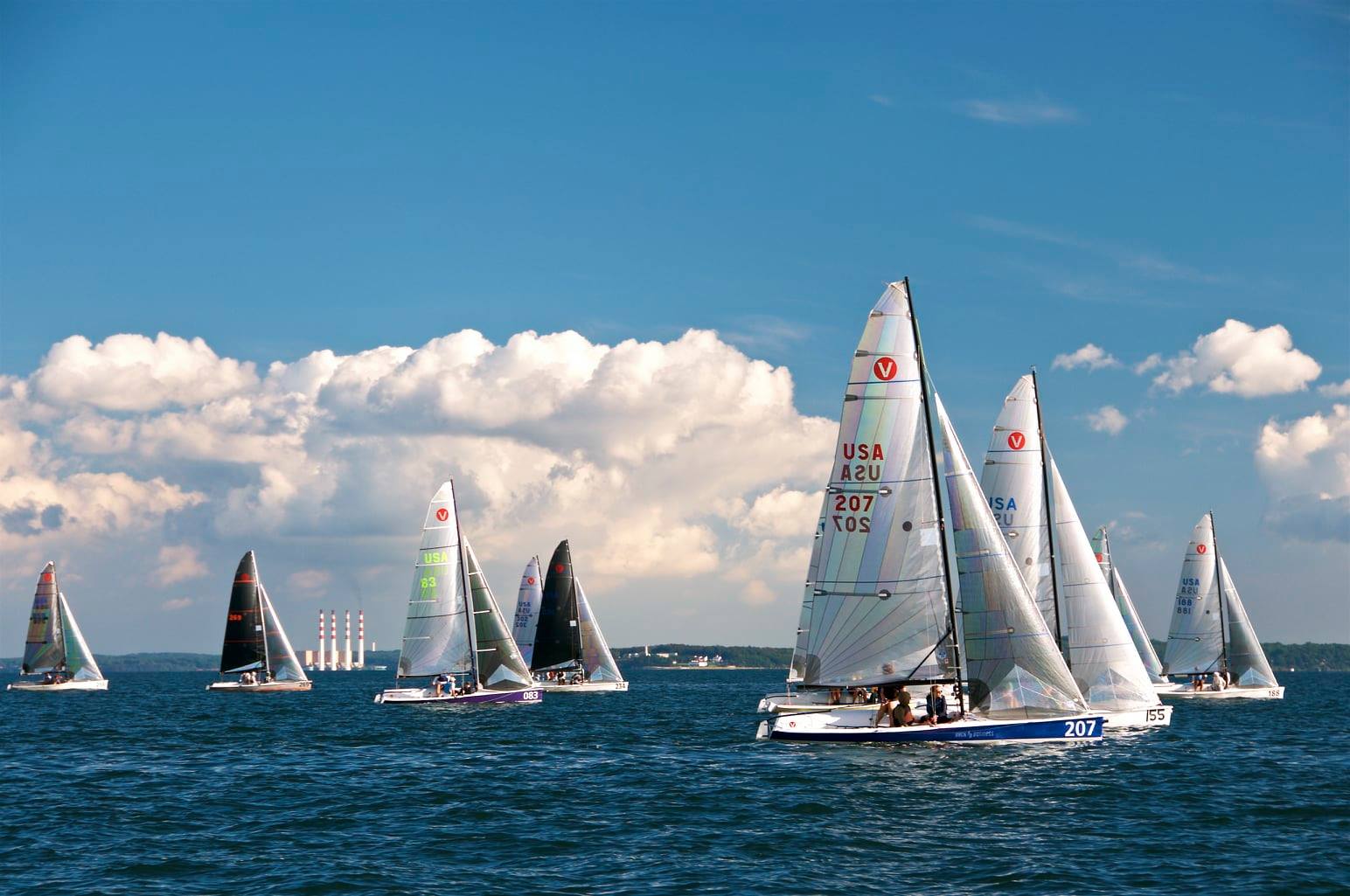
events
2021 VIPER 640 NORTH AMERICAN CHAMPIONSHIPS
2021 VIPER 640 NORTH AMERICAN CHAMPIONSHIP
A Podium Sweep for North Sails at the Viper 640 North Americans
📸 David Trost
The 2021 Viper 640 North American Championship, hosted by Noroton Yacht Club, took place for the first time since 2019. Spanning from October 7th through the 10th, competitors saw a wide range of conditions in Long Island Sound. From light breeze and clear skies, to wind in the 20s, and cooler temperatures, there was something for everyone.
Mark Zagol with crew Drew Buttner and Tim Desmond took home the title and a spot on the #NSVictoryList with 11 points to spare over Jay Rhame, Peter Beardsley, and Rachel Beardsley who finished the event in second. Third place went to Cardwell Potts, Ted Ferrarone, Merideth Killion, and Jenifer Potts.
📸 David Trost
The regatta had a solid turnout with 37 teams in attendance. North Sails powered 1, 2, 3, 6, 7*, 9 and a large portion of this edition of the North American Championship’s Viper Fleet.
Find full event results here.
📸 David Trost
📸 David Trost
READ MORE
READ MORE
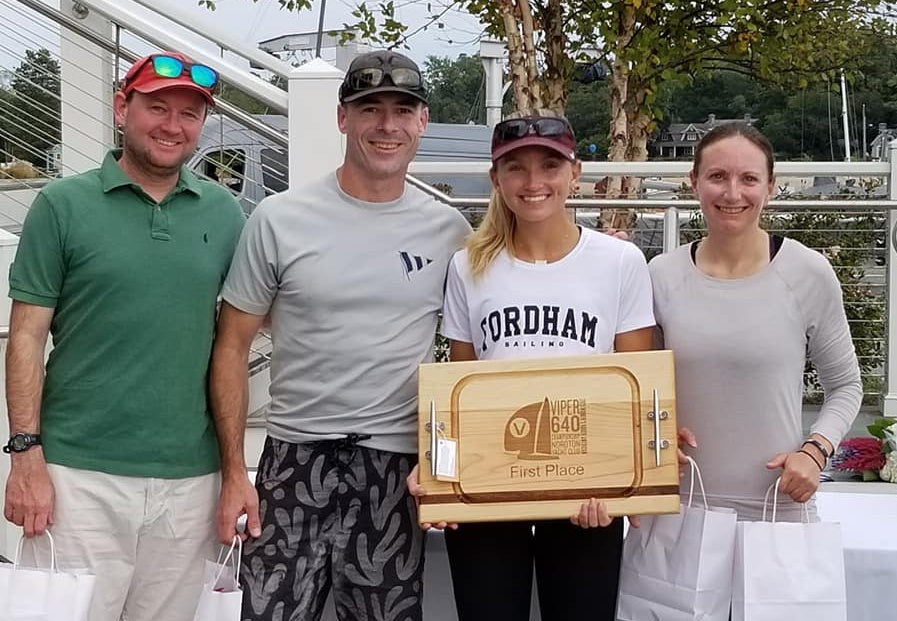
events
INAUGURAL VIPER 640 WOMEN'S NORTH AMERICAN CHAMPIONSHIP
INAUGURAL VIPER 640 WOMEN’S NORTH AMERICAN CHAMPIONSHIP
Grace Howie And Team Are First Ever Women’s Viper 640 North American Champions
1st Place 📸 Rick Bannerot / OnTheFlyPhoto.net / Viper 640 Class
Boat speed was the name of the game at the inaugural Viper 640 Women’s North American Championship this past weekend at Noroton Yacht Club in Darien, CT. The background of this event was that it was originally supposed to be a World Championship, but COVID travel restrictions required organizers to convert it to a Continental Championship. Out of the 18 entrants, most boats consisted of at least half women or majority female teams, and there was one all-female team.
Grace Howie and her crew of Meredith Killion, Cardwell Potts and Ted Ferrarone won the inaugural Championship and a spot on the #NSVictoryList, displaying consistency throughout the duration of the weekend, throwing out a 4th place. They credited their consistency to their ability to go fast, and the fact that they were sailing 4 up, unlike some of their competitors.
Cam Farrah, sailing with her father Cliff and Jackson Benvenutti moved up to second overall with 13 points. The final podium position went to Sarah Warren and Hanna King sailing with Mark Zagol and Tim Desmond in third with 16 points. Mary Ewenson finished up in fourth with 23 point with crews Austin Powers and Keenan Hilsinger. Jane Loutrel Moore finished in fifth with 25 points sailing with her son Parker and Marian and Vir Menon.
Congratulations to all of our North Sails Viper 640 sailors.
📸 Rick Bannerot / OnTheFlyPhoto.net / Viper 640 Class
2nd Place 📸 Rick Bannerot / OnTheFlyPhoto.net / Viper 640 Class
3rd Place 📸 Rick Bannerot / OnTheFlyPhoto.net / Viper 640 Class
READ MORE
READ MORE
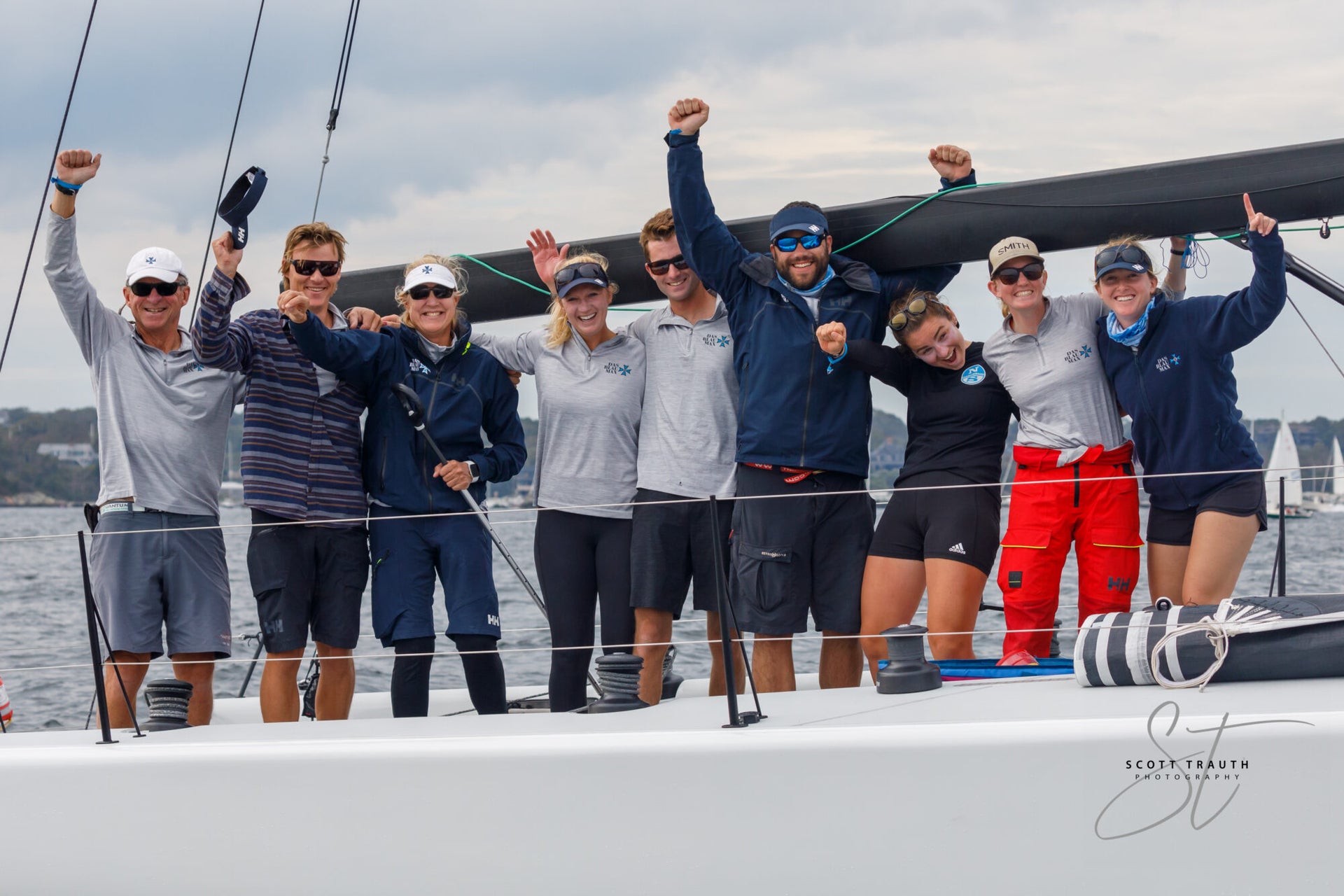
events
THE SERTL FAMILY - IC37 NORTH AMERICAN CHAMPIONS
How The Sertl Family Went From The “Family Boat” to IC37 Continental Champions
📸 Scott Trauth Photography
The inaugural IC37 North American Championship took place October 1- 3, 2021, in Newport, Rhode Island, hosted by the New York Yacht Club. After 8 races across 3 days of sailing, team Sertl on Das Blau Max took home the North American title as an all-corinthian team with the entire Sertl family aboard. It wasn’t always smooth sailing for the Sertls, so we asked Katja (daughter, jib trimmer) to reflect on how the team put it all together for the season finale.
I have been sailing with my family since the summer of 1994. At the age of 5 months old, my parents raced the Rochester Yacht Club’s weekend J/24 racing series, and I was down below strapped to the mast in my car seat, both of them taking turns checking on me to make sure I was still smiling.
Fast forward 27 years, and the Sertl Family still races together. We’ve since upgraded to an IC37 and now we are North American champions.
In 2017, when the New York Yacht Club first announced the concept of building a fleet of IC37s for charter, my family jumped at the opportunity. It was an exciting chance for women, younger sailors, and Corinthian sailors to compete at a very high level, on an even playing field. From day one, we believed we could compete towards the top of the class as a Corinthian team. Success sailing together as a family in the Lightning and J/22 classes both nationally and internationally prepared us for a new challenge: figuring out a 37-foot, asymmetrical, high performance one-design keelboat.
During that first summer of racing our team learned a lot. Cory, my mom, drove; my brother, Nick, called tactics; my dad, Mark, trimmed the main and I bounced between pit, jib trimmer, and spinnaker trimmer. Our competitors referred to our team as “the family boat” (usually sarcastically) but, like every other team, we were learning how to work together. The class organized debriefs and coaching, which enabled informational discussions and debates on what was working and tips and tricks. This really helped all participating teams improve. In 2019, we were proud of our fifth in the inaugural IC37 National Championships, and even happier with our improvement over that first season.
We made the call to forego the IC37 Charter Program in 2020 due to the pandemic, but we were able to sail as a family on our Farr 30 and continue doing what we love – zooming around Narragansett Bay and spending quality time together on and off the water.
The Sertl Family on their Farr 30 – Summer 2020
For the summer of 2021, we decided to rethink our team’s structure and better match our positions to our personal strengths. Nick is a great driver so he took over the helm. My dad is really good at making the boat go fast and shifting gears, so he stayed as the main trimmer. Mom called tactics (and made fantastic lunches for the team). I became the jib trimmer.
For the early half of the summer, we spent a lot of time figuring out which modes worked for the boat, and how to shift gears as conditions changed. We also worked on our team communication which allowed us to excel when it came to boat on boat tactics and boat handling.
With Marly Isler (runners), my mom, dad and brother in the back of the boat discussing tactics, and strategy, it was important that the boatspeed, modes and decisions were relayed forward to the remainder of the team. Jake Doyle, our offside jib/ spinnaker trimmer would often relay information about the mode that Nick needed so I could play the jib and work together with the back of the boat. The IC37 requires the jib trimmer to look at four different adjustments to control the leech profile, foot depth, and slot – the Athwartship Lead Position (a track for the jib cars), a vertical lead adjustment, jib halyard, and jib trim. All summer long, my dad, Jake, and I worked to learn about these controls and their effect on our boatspeed, and by North Americans, I really felt confident in my ability to make beneficial adjustments throughout each race.
Another example of team communication was seen on the approach to the windward mark. Hugh MacGillivray (mast) discussed where he saw pressure, and this helped my mom and Nick decide on their downwind game plan. This plan was then relayed forward again to inform the trimming and bow team which type of set would be needed to execute that game plan. Decisions the team faced consisted of whether the jib would stay up or down, the type of spinnaker set (bear away set, gybe set, bear away set with a quick gybe…). Hugh, Amina Brown (bow) and Marina Barzaghi (pit), were able to work together to get the spinnaker up and down smoothly, thanks to the thorough communication from the back of the boat.
The defining moment of the event was the moment when we all realized that we actually had a chance of winning the championship. For me, that moment came after winning two races on Saturday and having two major comebacks in the other two races. Everything and everyone was firing on all cylinders because we worked so hard to put everything together. Working together to make a boat go fast creates a completely different level of respect and understanding, with any team, but when your team is composed of your family it takes on a whole new level of meaning.
Find full IC37 North American Championships Results here.
📸 Stuart Streuli / New York Yacht Club
Sertl Family – Mark, Nick, Cory, Katja
READ MORE
READ MORE

events
SITTING DOWN WITH FILIPPO PACINOTTI
SITTING DOWN WITH FILIPPO PACINOTTI
Getting the Know the Owner at the Helm of the Brontolo Melges 20 Program
📸 Melges Europe / Barracuda Comms.
Filippo Pacinottii’s name has graced the pages and posts of North Sails for several years. Most recently he won the 2021 Melges 20 Europeans, just ahead of December’s class worlds in Miami. And while we are very familiar with his excellent results, we wanted to know more about the person at the helm of the Brontolo program.
Let’s start with one disclaimer. Like many North Sails clients, Pacinotti, who grew up sailing on the east coast of Italy, is not a full-time sailor. The Milan-based businessman has only about 25 days per year to dedicate to his favorite sport, making his recent success that much more impressive.
“Sailing is my passion,” Pacinotti explains. “I participate in other sports on an amateur level; I ski, I play tennis, but there are two reasons I choose sailing. First, I can compete at a high level and be successful. Second; while I’m in love with tennis, I am a much better sailor.”
With limited time, a big part of Pacinotti’s success is knowing how to optimize his training time and where to place his focus. How many days to train before an event? Is there time in the off-season—and do we really want to train throughout the winter? Striking the right balance can be a challenge, but over the years he has found the right boat, built a solid team, and selected North one design sails to stack the odds in his favor.
View this post on Instagram
A post shared by Brontolo Airlines 667 (@brontolo_airlines)
The Brontolo journey with the Melges 20 began in 2018, at the recommendation of team tactician Federico Michetti, who was the President of Melges Europe. After a few years of campaigning a Melges 32, Pacinotti was looking for a change, and the Melges 20 ticked all the requirements; super-fast, downwind, super fun, a bit technical, very competitive but manageable. A step down in boat and crew size stepped up their results.
“I remember winning our first regatta,” Pacinotti says; “it was close to Naples in Southern Italy. That was the spark where we believed we made the right call. I have to say over the last three years, we’ve been really, really successful.”
The team, who include Michetti and Manu Weiler has a special mojo, he adds. “I know that it’s very simple to say, but we have a lot of fun. Of course, it’s easier to have fun when you are on the top of the fleet, but that’s not mandatory.”
Pacinotti trusts the standard North Melges 20 sails to be fast, which allows him to focus his training time on boat handling and boat speed. “We try to avoid being very creative with custom programs, things like that. That’s why we love to use North Sails; we can get to the right speed without having to overthink the shape of our sails. As a result, I feel very confident using North.”
The 2021 Melges 20 Worlds will be Pacinotti’s first time sailing on Biscayne Bay, so he’ll be relying on his crew’s experience. “Right now, we’re focused on the practical things, the logistics of sending over the boat, having the permission to travel to the U.S,” Pacinotti explains. “At the same time, we’re thinking about our competition.”
He’s very familiar with their European competitors, but the American teams are a bit of an unknown.
“I have very clear visibility on the Russian team and at least another Italian team that we’ll be racing against,” he says. “I’m sure they’re going to be very fierce opponents. I know that in the U.S., the fleet has practiced in Miami, but I’m looking forward to getting on the water and seeing how we stack up.
“We’re quite optimistic, of course. We know we have a good team and can dial in our tuning to get the boat up to speed.”
The 2021 Melges 20 Worlds are scheduled for 8-12 December. Follow the Brontolo team on Instagram at @brontolo_airlines to learn more.
📸 Melges Europe / Barracuda Comms.
READ MORE
READ MORE

events
A NORTH SAILS BINGO AT THE NATIONS TROPHY
FIRST, FIRST AND FIRST
A North Sails Bingo at the 2021 Nations Trophy
📸 Ottavia Raggio / Rocket Performance
What is one thing the Swan One Design Nations Trophy winners had in common last weekend in Palma de Mallorca? Niramo, Natalia and Vitamin all carried North Sails. A complete success, but for North Sails Executive Vice President Paul ‘Flipper’ Westlake, “you can never stop pushing.”
Calling in from Palma, Westlake has plenty of reasons to celebrate. “We’ve worked heavily with Nautor’s Swan in the early days, from the very first event onwards, so getting together after the grips of this pandemic, with 29 high-level teams competing at the Nations Trophy was very, very impressive.” It’s clear this year’s results reflect the long-term collaboration between North Sails and the ClubSwan classes.
“North Sails updates the sail designs at the end of every season for these one-design classes. The 2021 package got released in 2020, when there wasn’t much sailing, but we continued to develop. Our individual conversations with all our customers, our work with the trimmers and the owners, have set the baseline for what we believe is a race-winning package.”
“We see that in the ClubSwan 50 class in particular,” says Westlake, “because it’s quite highly developed now, and each of the sailors has their own input.” No doubt Sonke Meier Sawatzki’s Niramo, the ClubSwan 50 winner in Palma, had his own.
Natalia Brailoiu’s ClubSwan 42 Natalia took the honours in a class “that has been around for many years now but continues to push,” adds Westlake. “For us, it’s a matter of fine-tuning, adapting to people’s style and to the events that are on the circuit.”
The ClubSwan 36 class however is still going through what he calls “the evolutionary phase,” explaining that “the boats were launched in 2019 and everyone is starting to race now. Obviously, we missed a lot of racing and learning last year so the top teams are still pushing hard to understand how to get the maximum performance out of the boat. The likes of Andrea Lacorte’s Vitamin, who won this year in Palma, was really dominating.”
📸 Ottavia Raggio / Rocket Performance
That ClubSwan 36 is still going through some modifications, and its sail plans will evolve again in 2022. “One of our jobs is making sure that we’re always working very closely with the ClubSwan 36 class in the background,” adds Westlake. “We put a lot of effort into supporting them on the aerodynamics side.”
Having not even left Palma yet, Westlake had already turned his focus to the next milestone. “All of our clients are talking about the 2021 Swan One Design Worlds in St. Tropez from October 13 to 17. You can never stop pushing. The Nations Trophy work has finished, but now the work begins for Worlds. I’m just looking at my calendar – it’s only three weeks away!”
The same teams will face each other in Southern France and the fleet size will be very similar – “everybody wants to win the World Championships!”
Conditions in St. Tropez are variable, making for a very open event. Westlake enthuses: “Palma Bay can be relatively predictable, although it was quite tricky this time around, with unstable winds and velocity. You can get anything in St. Tropez in October, from 5 to 30 knots, from flat to bumpy waters. It’s going to be an exciting event for sure.”
That’s Westlake for you – focusing on what’s next rather than enjoying that Spanish (then French) sunshine.
📸 Ottavia Raggio / Rocket Performance
📸 Ottavia Raggio / Rocket Performance
READ MORE
READ MORE

events
YOU'RE ON THE LIST AT THE NEW YORK YACHT CLUB INVITATIONAL CUP
YOU’RE ON THE LIST
19 Teams from Around the World Participated in the 7th Rolex New York Yacht Club Invitational Cup
📸 ROLEX / Daniel Forster
The Rolex New York Yacht Club Invitational Cup is a unique event that brings together a collection of top amateur sailors from some of the world’s most prestigious yacht clubs. The seventh edition of this biennial regatta was sailed in IC37s, a strict one design class first introduced in 2018 and outfitted with identical North 3Di sails. On Saturday, September 18th, the Southern Yacht Club of New Orleans went home with their second Rolex New York Yacht Club Invitational Cup win in three editions.
Giulio Desiderato, One Design Manager for North Sails in Italy, coached Yacht Club Italiano for the event. He shared a few unique observations on the event and the competition.
“The skill level of the fleet is quite high. The top teams could easily compete at the top of other races, even against teams with pros onboard. It’s clear that all the teams have put in their maximum effort to prepare for the regatta.
“From a North Sails perspective, it’s essential to be here as a company,” continues Desiderato. “We outfit a wide range of boats from Optimists to the AC75. At the same time, we deliver a lot of support to sailors trying to reach their goals. Maybe you win an Olympic gold medal, or the Invitational, but our focus is always on providing the best product. What I saw during the week in Newport was a group of very talented sailors who are passionate about our sport and it’s an honor for all of us at North to support them.”
And while it’s a fierce fight on the water, the intensity was left onboard at the end of each day. “The spirit was great,” Desiderato says. “Often, regattas are so competitive that it creates distance between the team onboard and the other participants. The Invitational is different. Of course, everyone is super competitive on the water, but the camaraderie onshore is special. All of the teams will leave Newport remembering more than just their final race result.”
📸 ROLEX / Daniel Forster
A pro sailor himself, Desiderato usually finds himself at an event on behalf of a private owner. And more often than not, the team is a collection of sailors from different countries. But this time, he coached the team from the yacht club where he grew up sailing.
“The experience of sailing for your yacht club is one-of-a-kind., The Yacht Club Italiano is a young team. I saw these sailors grow in their dinghy classes and have been friends with them for a long time. So we spent many hours together at the club, and it’s fantastic to have this shared experience. An event like the Invitational will make you a better sailor and give you a fresh perspective.”
📸 ROLEX / Daniel Forster
Like many of the participating teams, the Italians had no experience in the IC37. Which begs the question, how do you prepare a team for a boat they’ve never sailed before?
Desiderato explains: “The first day of training was our first time on the IC37. The team discovered a bit more about the boat each day. While you’d think there was a home team advantage because the local teams had more time in the boat, the result didn’t necessarily prove that to be true.
“The first step for preparing is to identify a similar boat to train on. Beyond the boat, good organization on board is fundamental. Good teamwork and onboard communication are key to avoiding mistakes. Then you do your homework; research the boat, consume as much as possible from the class website, check the tuning guides, dive into YouTube, and ask sailors who do have experience on the boat. I think that you can really have all the information and jump on board and just start to feel the boat…and that’s really important.”
📸 ROLEX / Daniel Forster
READ MORE
READ MORE


